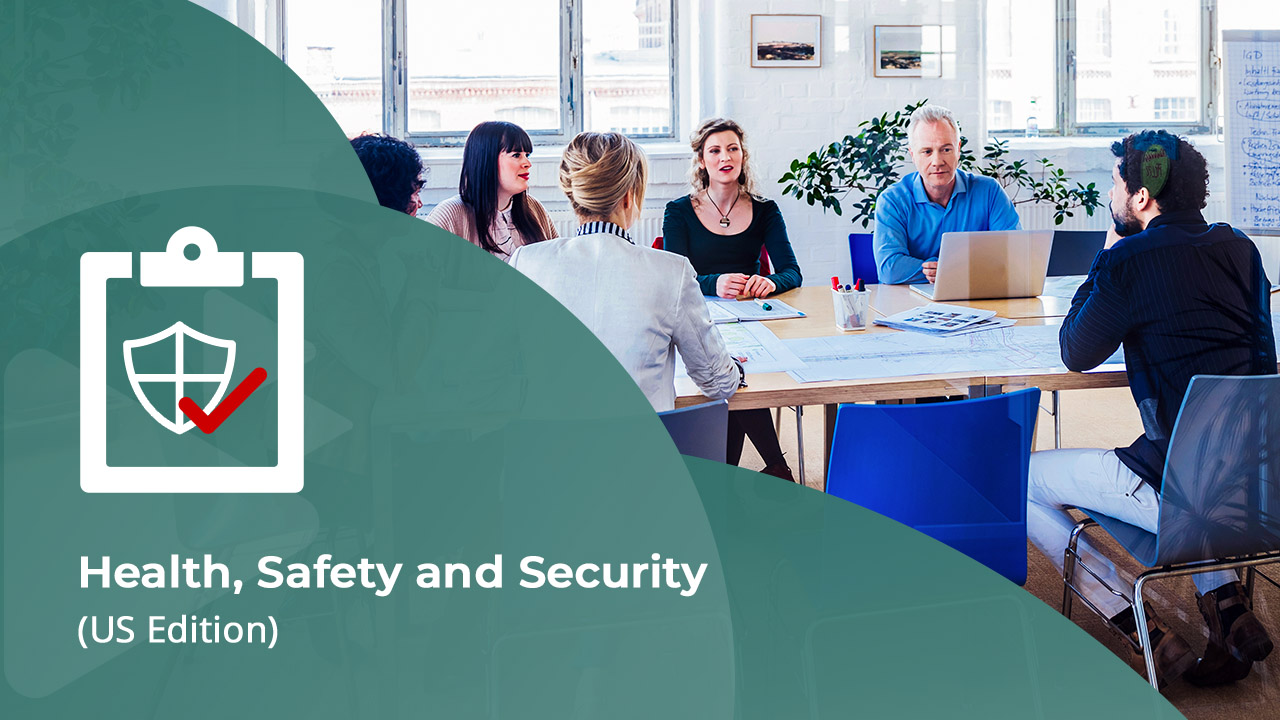Available courses
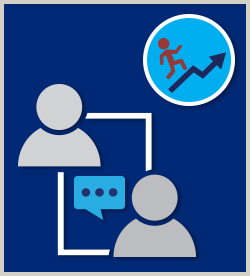
Navigating Challenging Situations with Diplomacy and Tact
You'll likely face unpleasant situations or tasks at some point in your career. In this course, you'll learn to navigate difficult work relationships, write diplomatic and tactful e-mails, and handle angry and manipulative coworkers.

Golf Cart Safety
Golf carts are used in multiple working environments and operating them safely requires an awareness of the particular risks they present. This course will help the learner to recognize the dangers associated with driving golf carts and it will inform them of some of the basic checks they can perform on a golf cart to ensure that it will continue to operate safely. This course was developed with subject matter support provided by EnSafe Inc., a global professional services company focusing on engineering, environment, health and safety, and information. Please note, the course materials and content were current with the laws and regulations at the time of the last expert review, however, they may not reflect the most current legal developments. Nothing herein, or in the course materials, shall be construed as professional advice as to any particular situation with respect to compliance with legal statutes or requirements.

Global Workplace Harassment Prevention for Employees
As an employee, it is important for you to act respectfully toward all your coworkers, whether they're located in the next office or on the other side of the globe. This course explains the benefits to everyone of supporting a respectful workplace and illustrates basic principles for promoting professional interaction in the workplace. Please note that the course content is for informational purposes only and does not constitute legal advice. Nothing in the course materials shall be construed as professional advice as to any particular situation or constitute a legal opinion with respect to compliance with any jurisdiction’s laws. Transmission of this information is not intended to create, and receipt does not establish, an attorney-client relationship. Users should not act upon this information without seeking professional counsel licensed in their jurisdiction.

Global Business Ethics
In today's business environment, companies are under intense scrutiny in the media, by investors, and by customers over the way they operate. People prefer to do business with companies and individuals that share their values, and avoid businesses that they feel are unethical, secretive, or corrupt. Organizations and their employees who hold themselves to high ethical standards often reap the rewards of fair and honest business practices, both financially and in terms of public opinion. In this course, you will learn the traits and benefits of ethical conduct, as well as how to identify unethical behavior, and what to do when you have questions. This course was developed with subject matter support provided by Ince Gordon Dadds LLP. Please note, however, that the course materials and content are for informational purposes only and do not constitute legal advice and may or may not reflect the most current legal developments. Nothing herein, or in the course materials, shall be construed as professional advice as to any particular situation or constitute a legal opinion with respect to compliance with legal statutes or statutory instruments. Ince Gordon Dadds LLP accepts no responsibility for the contents of this course. Any reliance on the contents of this course as legal advice is prohibited and at the user's risk. Transmission of the information is not intended to create, and receipt does not constitute, a solicitor-client relationship. Readers should not act upon this information without seeking independent legal advice.

Take a Deep Breath and Manage Your Stress
When you're constantly adding items to your never-ending to-do list, feeling overwhelmed at work and at home, and finding your health and relationships negatively impacted, you are likely experiencing stress. Stress is produced by your own feelings and reactions to certain external events, rather than by the events themselves. But while you may not always be able to control the external events causing your stress, by applying mindfulness techniques, you can control your reactions to them. This course explains the physiological, behavioral, and psychological signs and symptoms of stress and where it can come from. It outlines strategies for maintaining work/life balance and managing stress. It also covers ways to change your responses to stress and make them more positive and how to use relaxation techniques and adopting mindfulness to help you focus.

Facing Virtual Team Challenges
Virtual teams can face the same difficulties as other teams, but also have unique challenges. In this course, you'll learn how to handle challenges facing your team, and how to evaluate your own style.

Exploring Virtual Collaboration
Goodbye e-mail and intranet portals; hello cloud-powered, integrated, collaborative platforms! Digital technology enables colleagues working on a team to connect and work together, no matter how remote their location. Quick, reliable communication enables and facilitates working together as people telecommute from home. In this course, you'll learn the benefits of virtual collaboration when working with others, best practices for its successful implementation, and how to choose the right collaboration technology. You'll also learn how to avoid common mistakes when rolling out virtual collaboration. And you'll explore the key steps for leading and being a part of a virtual team.

Establishing Effective Virtual Teams
Building and managing teams is enough of a challenge when everyone is in the same location. Collaboration when working on a team that's virtual requires even more commitment. In this course, you'll learn about teamwork and team leadership when working on a virtual team. You'll cover remote management and tactics for communication, assessment, and meetings for virtual teams.

Contributing as a Virtual Team Member
Companies often opt to create virtual teams in place of on-site teams. This allows employees to work from home or remote locations. However, if not managed appropriately, remote working may cause breakdowns in communication, collaboration, and teamwork. In this course, you'll learn how to develop the skills you need to show team leadership and be an effective member of a virtual team. You'll explore personal traits that are useful when working on a team remotely. You'll also learn strategies to stay connected with other team members, and ways to manage your time and overcome the challenges associated with managing teams remotely.
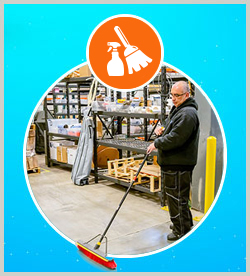
Housekeeping on the Job
All employees should help maintain a safe working environment by following good housekeeping practices on the job. These practices apply to working and walking surfaces; storage, handling, and disposal tasks; fire prevention measures; and incidents with hazardous and infectious materials. This course was developed with subject matter support provided by EnSafe Inc., a global professional services company focusing on engineering, environment, health and safety, and information.

Mental Health and Covid-19
This course is designed to help learners identify causes and symptoms of stress related to the COVID-19 pandemic, along with methods and resources to cope with stress to retain good mental health.

Business Strategy for the Post-pandemic Economy
The COVID-19 pandemic has disrupted life on a global scale, putting lives and businesses in a temporary limbo. But as the world begins to emerge post-pandemic, businesses will play no small part in determining the new normalcy that will shape our lives. In order to meet this responsibility, business leaders must begin to plan new business strategies and operations that will allow their companies to adapt their business models to the new normal. In this course, you'll examine topics related to adjusting operational strategies, marketing strategies and supply chain logistics, that will limit risk exposure, and take advantage of digital technologies to allow your organizations to not just survive the crisis, but to recognize opportunities to thrive in its aftermath.
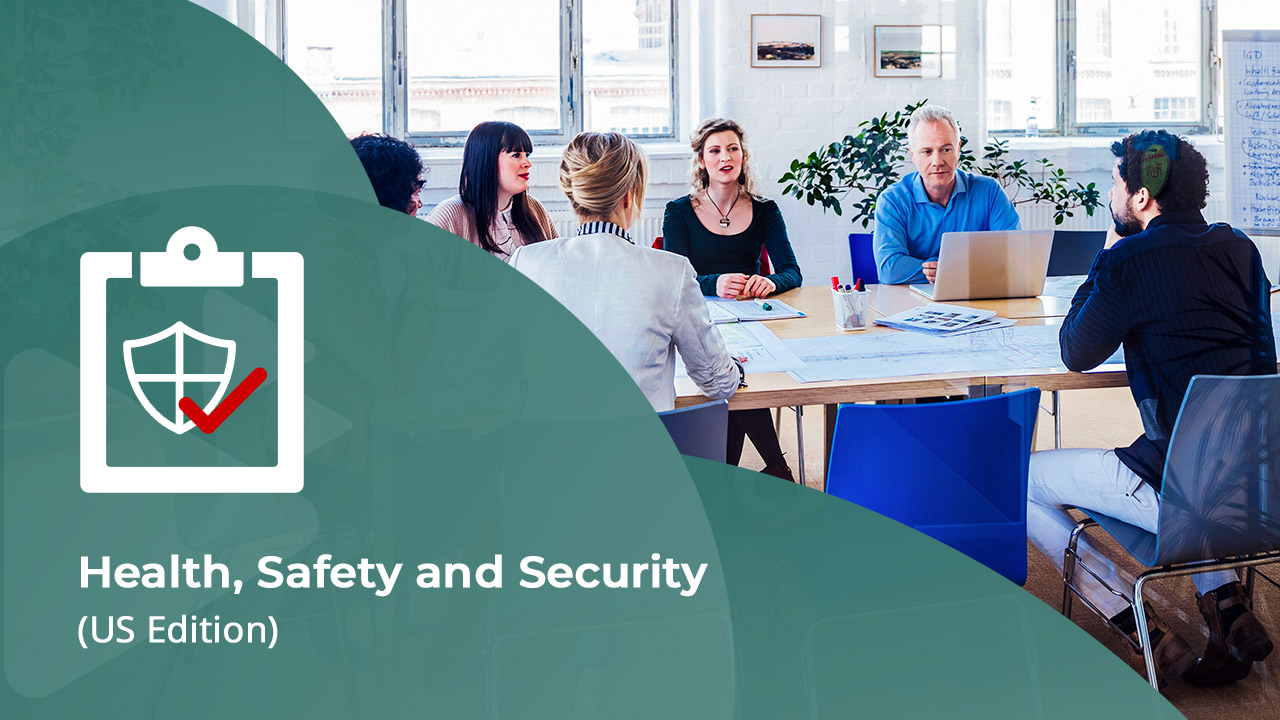
Business Continuity Management Programs
Whether it is a natural disaster that sweeps through a city, a virus that sweeps across the nation, or a computer virus that destroys vital electronic information, businesses need to be able to recover their services and operations as soon as possible if such a disaster does occur. A Business Continuity Program involves planning the recovery of operations when confronted with adverse events such as natural disasters, technological failures, human error, and terrorism. This course provides a basic understanding of the criteria for a comprehensive program that addresses business continuity in accordance with the National Fire Protection Association (NFPA) standard 1600, entitled Standard on Continuity, Emergency, and Crisis Management. The course was developed and reviewed with subject matter support provided by certified subject matter experts and industry professionals. Please note, the course materials and content were current with the laws and regulations at the time of the last expert review, however, they may not reflect the most current legal developments. Nothing herein, or in the course materials, shall be construed as professional advice as to any particular situation with respect to compliance with legal statutes or requirements.

Becoming A Successful Collaborator
When organizations are recruiting, one of the top skills they look for in a candidate is their ability to collaborate. Today's hiring managers know that collaboration leads to improved problem-solving, increased productivity and promotes interconnected team members who share expertise and learn from one another. Defining collaboration is tricky because it means different things across industries, departments and roles. In this course you'll learn about the meaning of collaboration, the concept of teaming in collaboration, and best practices for being a good team member and for being a successful collaborator. You'll examine conflict management styles to determine which one is yours, and the impact on your team.

HIPAA Privacy Essentials
This course presents an overview of HIPAA (the Health Insurance Portability and Accountability Act), outlining the main components and identifying who is covered by the Act. It examines the privacy provisions under HIPAA as they relate to protected health information (PHI). This course helps employees and business associates of covered entities recognize the key provisions of HIPAA, how their organizations are affected by HIPAA, and how the privacy rules impact them. This course was developed with subject matter support provided by the Labor & Employment Law Group of the law firm of Baker, Donelson, Bearman, Caldwell & Berkowitz, PC. Please note, however, that the course materials and content are for informational purposes only and do not constitute legal advice. Nothing herein, or in the course materials, shall be construed as professional advice as to any particular situation or constitute a legal opinion with respect to compliance with any federal, state, or local laws. Transmission of the information is not intended to create, and receipt does not constitute, an attorney-client relationship. Readers should not act upon this information without seeking professional counsel. The information contained herein is provided only as general information that may or may not reflect the most current legal developments. This information is not provided in the course of an attorney-client relationship and is not intended to constitute legal advice or to substitute for obtaining legal advice from an attorney licensed in your state.
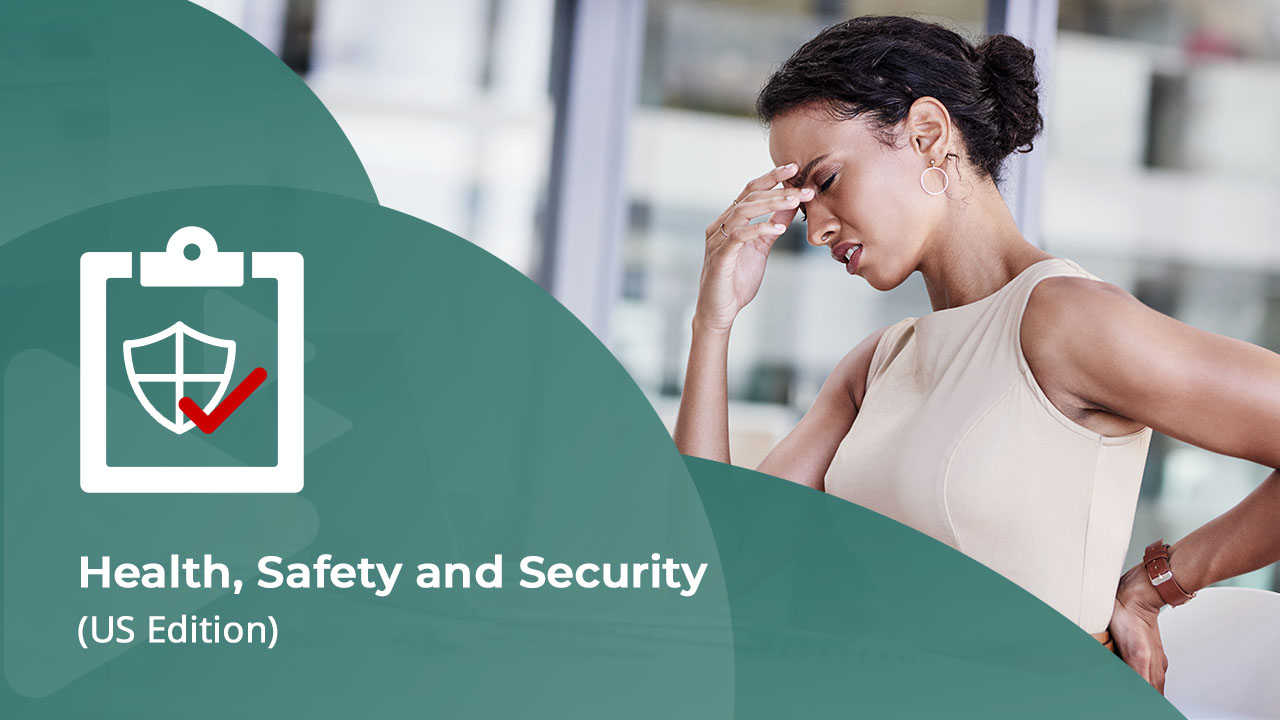
Ergonomics in the Workplace 2.0
This course is designed to provide the basic information needed to recognize and report musculoskeletal disorder (MSD) signs, symptoms, and risk factors. It addresses the key components of an ergonomics program and provides information to assist both employees and employers in minimizing the risk of developing work-related MSDs. This course applies to both office and industrial settings. The content in this course is designed to comply with the intent of the applicable regulatory requirements.The course was developed and reviewed with subject matter support provided by certified subject matter experts and industry professionals. Please note, the course materials and content were current with the laws and regulations at the time of the last expert review, however, they may not reflect the most current legal developments. Nothing herein, or in the course materials, shall be construed as professional advice as to any particular situation with respect to compliance with legal statutes or requirements.

Ergonomics in the Workplace
This course is designed to provide the basic information needed to recognize and report musculoskeletal disorder (MSD) signs, symptoms, and risk factors. It addresses the key components of an ergonomics program and provides information to assist both employees and employers in minimizing the risk of developing work-related MSDs. This course applies to both office and industrial settings. The content in this course is designed to comply with the intent of the applicable regulatory requirements. Learner objectives are to define terms related to the study of ergonomics, recognize signs and symptoms associated with musculoskeletal disorders, identify risk factors associated with musculoskeletal disorders, and identify controls commonly used to reduce or eliminate musculoskeletal disorders in the workplace. The course was developed and reviewed with subject matter support provided by certified subject matter experts and industry professionals. Please note, the course materials and content were current with the laws and regulations at the time of the last expert review, however, they may not reflect the most current legal developments. Nothing herein, or in the course materials, shall be construed as professional advice as to any particular situation with respect to compliance with legal statutes or requirements.

Computer Ergonomics
This course is designed to provide the basic information needed to recognize and report musculoskeletal disorder (MSD) signs, symptoms, and risk factors. It addresses the key components of an Ergonomics Program and also provides information to assist both employees and employers in minimizing the risk of developing work-related MSDs. This course applies to employees and employers required to work in computer/data entry environments. The content in this course is designed to comply with the intent of the applicable regulatory requirements. Learner objectives for this course are to: define terms related to the study of ergonomics, recognize signs and symptoms of injury to the muscles and skeleton and the importance of early reporting, identify risk factors for injury to the muscles and skeleton, and specify controls and work practices to reduce and/or eliminate risk factors for injury to the muscles and skeleton. This course was developed and reviewed with subject matter support provided by EnSafe Inc., a global professional services company focusing on engineering, environment, health and safety, and information technology. Please note, the course materials and content were current with the laws and regulations at the time of the last expert review, however, they may not reflect the most current legal developments. Nothing herein, or in the course materials, shall be construed as professional advice as to any particular situation with respect to compliance with legal statutes or requirements.

Ladder Safety 2.0
This course provides information about the safe use of portable and fixed ladders. The intent of the course is to provide the learner with information about the hazards involved with the use of ladders and control methods that will greatly reduce these hazards. The content in this course is designed to comply with the intent of the applicable regulatory requirements. Learner objectives are to identify hazards related to the general use of ladders and how to control these hazards; describe the types of portable ladders and their use, capacities, and safety considerations; describe the specific use, capacities, and safety features of fixed ladders; and specify proper guidelines for ladder care and maintenance. This course was developed with subject matter support provided by EnSafe Inc., a global professional services company focusing on engineering, environment, health and safety, and information technology. Please note, the course materials and content were current with the laws and regulations at the time of the last expert review, however, they may not reflect the most current legal developments. Nothing herein, or in the course materials, shall be construed as professional advice as to any particular situation with respect to compliance with legal statutes or requirements.
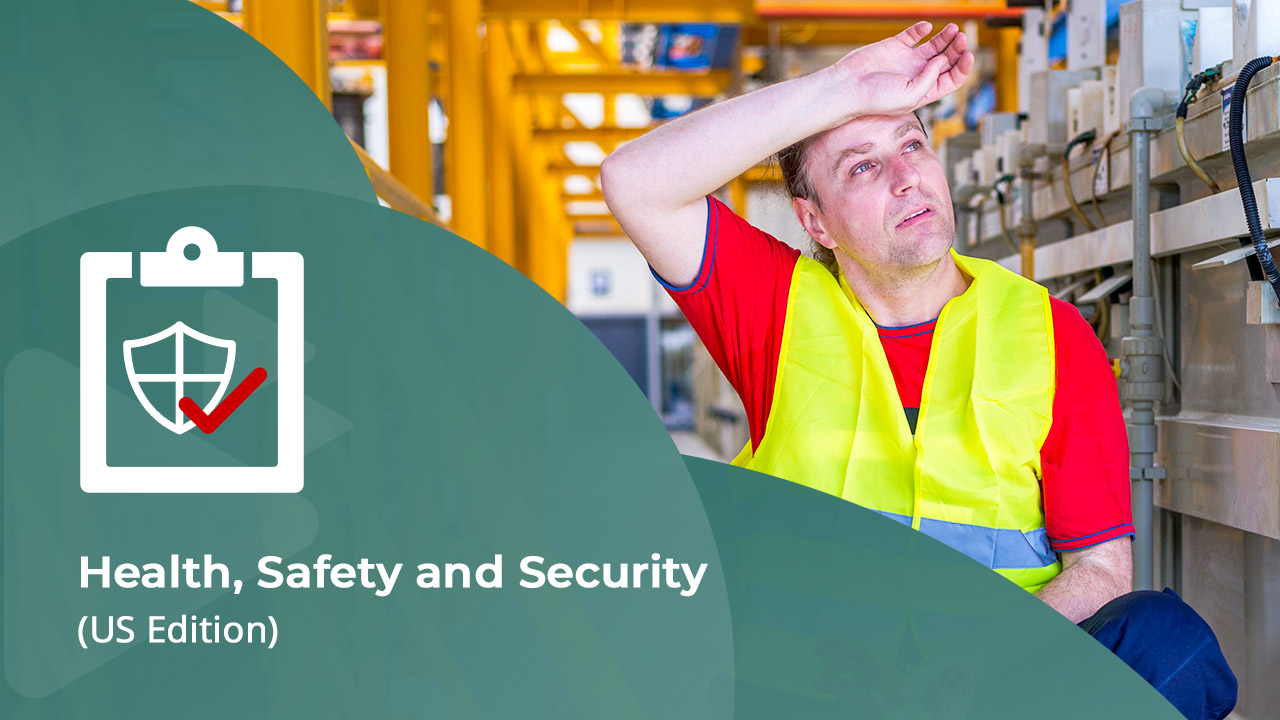
Heat and Cold Exposure Management (HAZWOPER)
This course is intended for personnel who may be exposed to temperature extremes at hazardous waste sites. Heat-related illness is a major hazard, especially for workers wearing personal protective clothing. Cold-related injuries can cause loss of limbs or even death. The content in this course is designed to comply with the intent of the applicable regulatory requirements. Learner objectives are to identify heat-related illnesses that can result from exposure to hot temperatures, specify first aid measures for heat-related illness, identify individual factors that affect the body's ability to withstand hot temperatures, specify steps to avoid or reduce heat-related illness, specify conditions and injuries that can result from exposure to cold temperatures, specify first aid measures for frostbite and hypothermia, identify individual factors that affect the body's ability to withstand cold temperatures, and recognize measures for preventing injuries related to cold temperature exposure. The course was developed and reviewed with subject matter support provided by certified subject matter experts and industry professionals. Please note, the course materials and content were current with the laws and regulations at the time of the last expert review, however, they may not reflect the most current legal developments. Nothing herein, or in the course materials, shall be construed as professional advice as to any particular situation with respect to compliance with legal statutes or requirements.
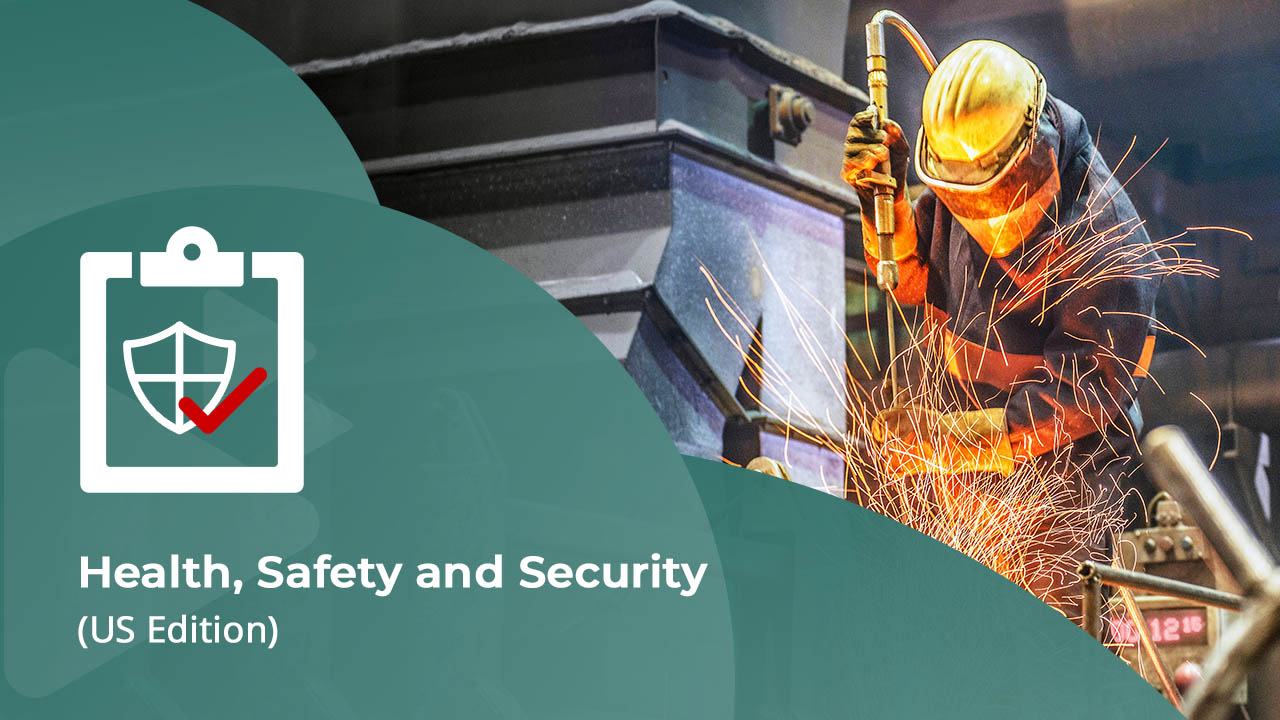
Hot Work Permits
Hot work can be defined as any operation such as brazing, cutting, welding, grinding, soldering, heat treating, or torching that can cause sparks or flames. While such work is necessary, the hazards associated can be minimized through an effective hot work permit program. This course provides an overview of an OSHA-compliant hot work permit program, including the permit process, roles and responsibilities, and controls used to minimize the risk of fire. This course was developed with subject matter support provided by EnSafe Inc., a global professional services company focusing on engineering, environment, health and safety, and information technology. Please note, the course materials and content were current with the laws and regulations at the time of the last expert review, however, they may not reflect the most current legal developments. Nothing herein, or in the course materials, shall be construed as professional advice as to any particular situation with respect to compliance with legal statutes or requirements.

Hearing Conservation 2.0
Millions of workers have been affected by hearing loss caused by their jobs. In this course, you will learn about ways to help you prevent noise-induced hearing loss. You'll also learn about the purpose and components of a hearing conservation program, including the proper fitting, use, and care of hearing protectors. The content in this course is designed to comply with the intent of the applicable regulatory requirements. This course was developed with subject matter support provided by EnSafe Inc., a global professional services company focusing on engineering, environment, health and safety, and information technology. Please note, the course materials and content were current with the laws and regulations at the time of the last expert review, however, they may not reflect the most current legal developments. Nothing herein, or in the course materials, shall be construed as professional advice as to any particular situation with respect to compliance with legal statutes or requirements.

Hazardous Materials: Infectious Materials Transportation by Ground
This activity-based course covers the U.S. Department of Transportation (DOT) requirements for packaging and shipping infectious materials by highway within the United States. The course puts you into situations where you'll classify the type of infectious substance being shipped, select the proper shipping name from the DOT Hazardous Materials Table, and determine the proper packaging, marking, labeling, and shipping paper requirements for infectious substances. This course does not address the requirements for shipping infectious substances by aircraft, rail, or vessel. This course was developed with subject matter support provided by EnSafe Inc., a global professional services company focusing on engineering, environment, health and safety, and information technology. Please note, the course materials and content were current with the laws and regulations at the time of the last expert review, however, they may not reflect the most current legal developments. Nothing herein, or in the course materials, shall be construed as professional advice as to any particular situation with respect to compliance with legal statutes or requirements.
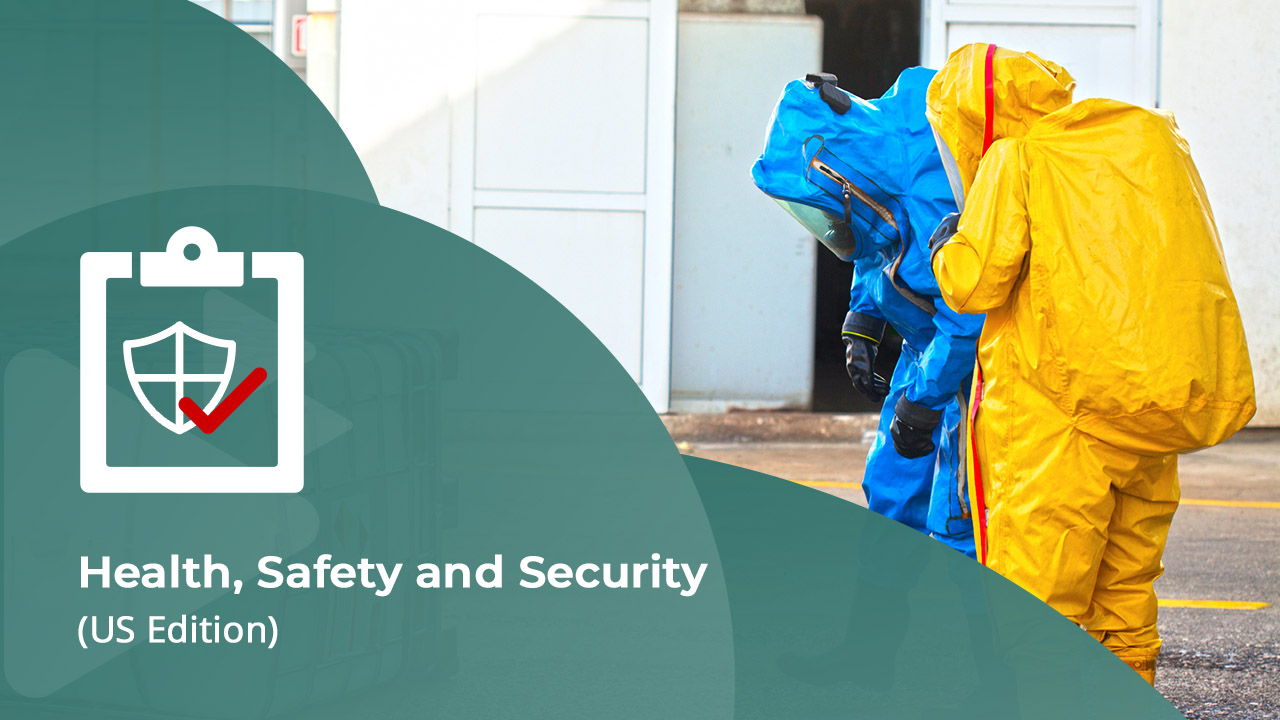
Hazardous Materials and Spills in the Workplace
This course discusses proper handling of chemicals in the workplace and actions that can be taken to protect the workers, the public, and the environment. It also covers the roles and responsibilities of those responding to events involving hazardous materials. The content in this course is designed to comply with the intent of the applicable regulatory requirements. The course was developed and reviewed with subject matter support provided by certified subject matter experts and industry professionals. Please note, the course materials and content were current with the laws and regulations at the time of the last expert review, however, they may not reflect the most current legal developments. Nothing herein, or in the course materials, shall be construed as professional advice as to any particular situation with respect to compliance with legal statutes or requirements.

Global Safety Short: Coronaviruses and COVID-19 (English)
Coronaviruses are a family of viruses that commonly occur in humans and animals. Most coronaviruses cause mild to moderate upper-respiratory tract illnesses similar to the common cold and flu, and sometimes lower-respiratory tract illnesses, such as pneumonia or bronchitis. Most people will experience a type of common human coronavirus in their lifetime. Coronavirus Disease 2019 (COVID-19) is a novel coronavirus caused by the human body's reaction to the strain of the virus known as SARS-CoV-2. In these topics, you'll learn what COVID-19 is, who is at the highest risk of contracting it, how it's transmitted, signs and symptoms, and precautions you should take to prevent and treat it.
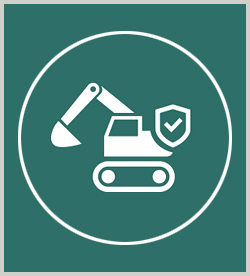
Global Safety Principles: Trenching and Excavation Safety
This course is designed to better inform the employee of the possible health and safety concerns unique to trenching and excavation. In this course, you'll learn about safety considerations and proper practices to reduce the hazards that may occur during excavation. The content in this course is designed to comply with the intent of the applicable regulatory requirements. This course was developed with subject matter support provided by New Level Safety Limited., a global professional services company focusing on health and safety. Please note, the course materials and content were current with the laws and regulations at the time of the last expert review, however, they may not reflect the most current legal developments. Nothing herein, or in the course materials, shall be construed as professional advice as to any particular situation with respect to compliance with legal statutes or requirements.

Global Safety Principles: Scaffolding Safety
This course is designed to train employees to recognize the hazards associated with scaffold being used on work sites and understand the procedures to control or minimize those hazards. The content in this course is designed to comply with the intent of the applicable regulatory requirements. Learner objectives are to identify general scaffold requirements and safety considerations. This course was developed with subject matter support provided by New Level Safety, a global professional services company focusing on health and safety. Please note, the course materials and content were current with the laws and regulations at the time of the last expert review, however, they may not reflect the most current legal developments. Nothing herein, or in the course materials, shall be construed as professional advice as to any particular situation with respect to compliance with legal statutes or requirements.
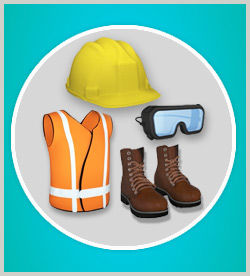
Global Safety Principles: PPE: Personal Protective Equipment 2.0
This course covers types, selection, maintenance, and care of personal protective equipment (PPE) in the workplace. The types of PPE covered in the course include hard hats; hand, foot, and eye protection; and body protection. The course also provides general guidelines on when respiratory, hearing, and fall protection are required. The content in this course is designed to comply with the intent of the applicable regulatory requirements. This course was developed with subject matter support provided by New Level Safety Limited, a professional services company specializing in corporate health and safety management. Please note, the course materials and content were current with the laws and regulations at the time of the last expert review, however, they may not reflect the most current legal developments. Nothing herein, or in the course materials, shall be construed as professional advice as to any particular situation with respect to compliance with legal statutes or requirements.
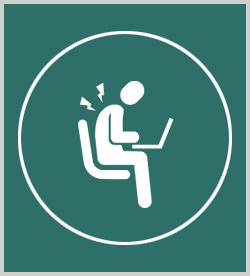
Global Safety Principles: Office Ergonomics
This course is designed to provide the basic information needed to recognize and report musculoskeletal disorder (MSD) signs, symptoms, and risk factors. It addresses the key components of an ergonomics program and provides information to assist both employees and employers in minimizing the risk of developing work-related MSDs. This course applies to employees and employers in office and administrative settings. Learner objectives are to define terms related to the study of ergonomics; recognize signs and symptoms of injury to the muscles and skeleton and the importance of early reporting; identify risk factors for injury to the muscles and skeleton; specify controls and work practices to reduce or eliminate risk factors for injury to the muscles and skeleton; and specify how to report MSD signs, symptoms, and how employers are required to address them. This course was developed with subject matter support provided by New Level Safety Limited, a professional services company specializing in corporate health and safety management. Please note, the course materials and content were current with the laws and regulations at the time of the last expert review, however, they may not reflect the most current legal developments. Nothing herein, or in the course materials, shall be construed as professional advice as to any particular situation with respect to compliance with legal statutes or requirements.

Global Safety Principles: Lockout/Tagout 2.0
This course provides information about control of hazardous energy and work under the protection of a lockout/tagout energy control program. The intent of the course is to provide information on lockout/tagout practices and the significance of lockout/tagout devices. The content in this course is designed to comply with the intent of the applicable regulatory requirements. Learner objectives are to define and describe terms and techniques commonly used in a lockout/tagout program and recall standard lockout/tagout procedures. This course was developed with subject matter support provided by New Level Safety Limited, a professional services company specializing in corporate health and safety management. Please note, the course materials and content were current with the laws and regulations at the time of the last expert review, however, they may not reflect the most current legal developments. Nothing herein, or in the course materials, shall be construed as professional advice as to any particular situation with respect to compliance with legal statutes or requirements.

Global Safety Principles: Ladder Safety 2.0
This course provides information about the safe use of portable and fixed ladders. The intent of the course is to provide the learner with information about the hazards involved with the use of ladders and control methods that will greatly reduce these hazards. The content in this course is designed to comply with the intent of the applicable regulatory requirements. Learner objectives are to identify hazards related to the general use of ladders and how to control these hazards; describe the types of portable ladders and their use, capacities, and safety considerations; describe the specific use, capacities, and safety features of fixed ladders; and specify proper guidelines for ladder care and maintenance. This course was developed with subject matter support provided by New Level Safety Limited, a professional services company specializing in corporate health and safety management. Please note, the course materials and content were current with the laws and regulations at the time of the last expert review, however, they may not reflect the most current legal developments. Nothing herein, or in the course materials, shall be construed as professional advice as to any particular situation with respect to compliance with legal statutes or requirements.

Global Safety Principles: Job Hazard Analysis
This course is intended to provide information that will help improve the quality of work environments, reduce absenteeism, help maintain a healthier workforce, reduce injury and illness rates, and make workers feel good about their work. This course was specifically designed for supervisors and managers to help enhance existing techniques in job hazard analysis. The content of this course is designed to comply with the intent of the applicable regulatory requirements. This course was developed with subject matter support provided by New Level Safety Limited, a professional services company specializing in corporate health and safety management. Please note, the course materials and content were current with the laws and regulations at the time of the last expert review, however, they may not reflect the most current legal developments. Nothing herein, or in the course materials, shall be construed as professional advice as to any particular situation with respect to compliance with legal statutes or requirements.
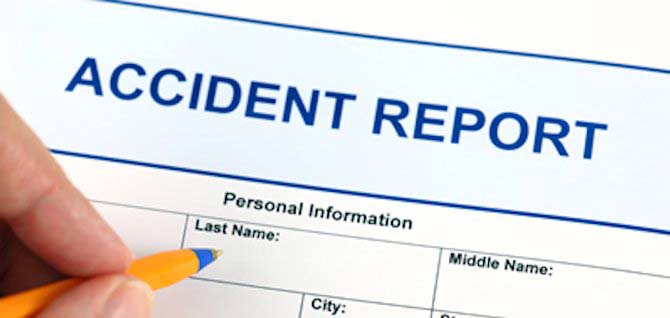
Accident Investigation and Reporting
This course will provide an overview of accident investigation and reporting procedures. The accident investigation and reporting process helps to provide a safe working environment by determining the causes of an accident, and then reporting them so that accidents can be prevented in the future. The content in this course is designed to comply with the intent of the applicable regulatory requirements. Learner objectives for this course are to differentiate between the three cause levels of accidents, recognize why an accident should be investigated, recall the steps for conducting a formal investigation, identify recommended interviewing techniques, describe problem-solving techniques commonly used in accident investigation, and recall topics included in an investigative report. This course was developed with subject matter support provided by EnSafe Inc., a global professional services company focusing on engineering, environment, health and safety, and information technology. Please note, the course materials and content were current with the laws and regulations at the time of the last expert review, however, they may not reflect the most current legal developments. Nothing herein, or in the course materials, shall be construed as professional advice as to any particular situation with respect to compliance with legal statutes or requirements.

Active Shooter
Active shooter situations have become more common, in public places and at work premises. This course will help you prepare to respond to an active shooter situation. You'll learn about typical characteristics of active shooter incidents, ways you can prepare now, and expert recommendations on how best to react when an attack is in progress. You'll also learn what to expect and how to react when law enforcement arrives. This course was developed with subject matter provided by Eric L. Matson of Norsemen Training & Consulting Group, a global professional services company focusing on corporate, business and personal safety training. Please note, the course materials and content were current with the laws and regulations at the time of the last expert review, however, they may not reflect the most current legal developments. Nothing herein, or in the course materials, shall be construed as professional advice as to any particular situation with respect to compliance with legal statutes or requirements.

Active Shooter
This course helps you prepare to respond to an active shooter situation. It begins by describing the typical character of active shooter incidents. It then explains how to determine the correct course of action in such a situation depending on the circumstances: escape, hiding in a secure location, or physically engaging with the shooter. The course then lays out the principles you should follow in relation to each of these options. Finally, you'll also learn about what to expect and how to react when law enforcement arrives. This course was developed with subject matter support provided by Norsemen Training & Consulting Group, a leader in personal protection training and personal safety.

Aerial Work Platforms
Aerial work platforms allow work personnel to reach elevated areas that are inaccessible by traditional means such as ladders or scaffolding. But like any heavy equipment, aerial work platforms can be very dangerous if used without due care and attention. This course was developed with subject matter support provided by EnSafe Inc., a global professional services company focusing on engineering, environment, health and safety, and information technology. Please note, the course materials and content were current with the laws and regulations at the time of the last expert review, however, they may not reflect the most current legal developments. Nothing herein, or in the course materials, shall be construed as professional advice as to any particular situation with respect to compliance with legal statutes or requirements.
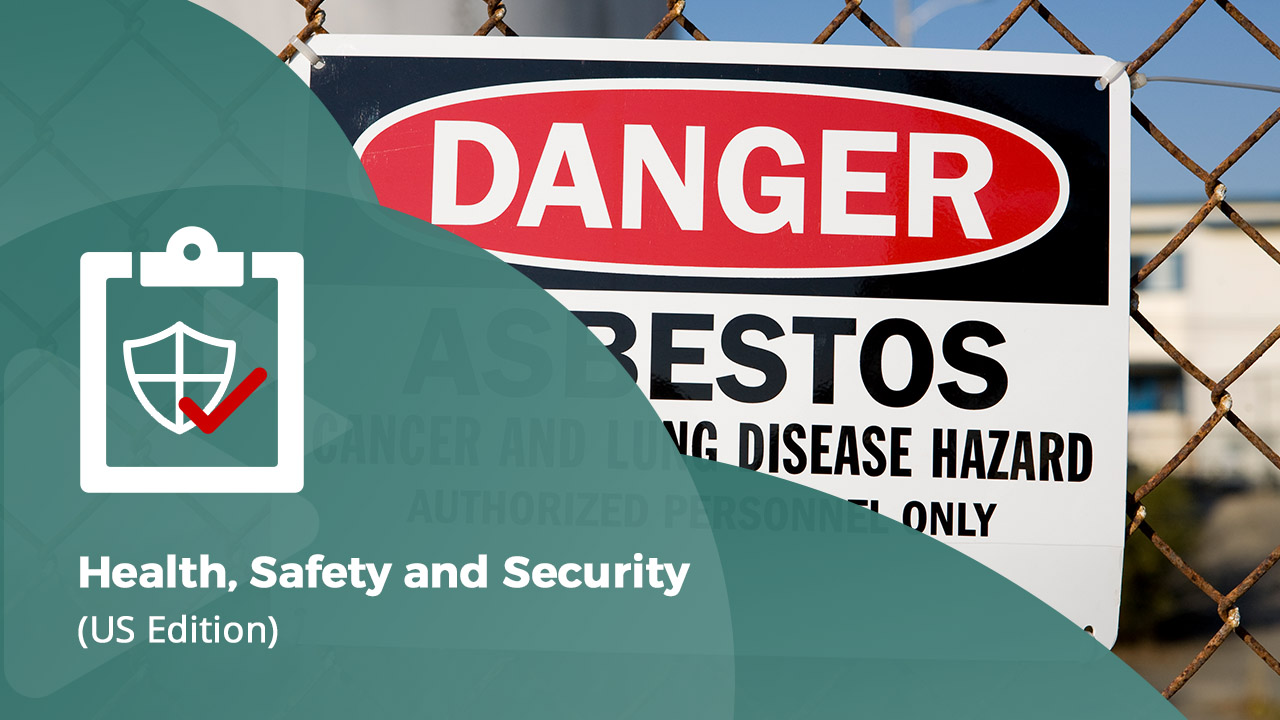
Asbestos
| This course will provide you with information about the serious health hazards associated with exposure to asbestos. It will also address where asbestos is commonly found, how it can potentially affect you, and what you need to do to protect yourself and others from exposure. The content in this course is designed to comply with the intent of the applicable regulatory requirements.The course was developed and reviewed with subject matter support provided by certified subject matter experts and industry professionals. Please note, the course materials and content were current with the laws and regulations at the time of the last expert review, however, they may not reflect the most current legal developments. Nothing herein, or in the course materials, shall be construed as professional advice as to any particular situation with respect to compliance with legal statutes or requirements. |
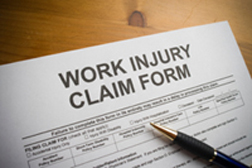
Back Safety and Injury Prevention
This course is designed to bring awareness into the work environment and help eliminate preventable back injuries. It will provide information regarding job-specific hazards, safe work practices, and ergonomics. The content in this course is designed to comply with the intent of the applicable regulatory requirements. This course covers job-specific hazards that contribute to preventable back injuries, ergonomic considerations that minimize back injuries in the workplace, and safe work practices that minimize back injuries. This course was developed with subject matter support provided by EnSafe Inc., a global professional services company focusing on engineering, environment, health and safety, and information technology. Please note, the course materials and content were current with the laws and regulations at the time of the last expert review, however, they may not reflect the most current legal developments. Nothing herein, or in the course materials, shall be construed as professional advice as to any particular situation with respect to compliance with legal statutes or requirements.

Back Safety and Injury Prevention 2.0
This course is designed to raise awareness of workplace hazards that can cause back injuries and to equip employees to protect themselves from preventable back injuries. It covers job-specific hazards that contribute to preventable back injuries, the characteristics of healthy posture, and specific ways to minimize the risk of back injuries. It also covers workplace controls, including engineering, administrative, and work practice controls, that can help minimize back injuries. The content in this course is designed to comply with the intent of the applicable regulatory requirements. The course was developed and reviewed with subject matter support provided by certified subject matter experts and industry professionals. Please note, the course materials and content were current with the laws and regulations at the time of the last expert review, however, they may not reflect the most current legal developments. Nothing herein, or in the course materials, shall be construed as professional advice as to any particular situation with respect to compliance with legal statutes or requirements.

Behavior-based Safety for Supervisors
This course is intended to provide supervisors with an overview of the concepts of behavior-based safety. This training will aid those supervisors who have not used these techniques in their day-to-day duties and responsibilities in the past. The content in this course is designed to comply with the intent of the applicable regulatory requirements. Learner objectives for this course are to: define behavior and identify the scope and purpose of a behavior safety program, distinguish the roles and responsibilities of the supervisor and the employee, identify factors that cause incidents (environmental versus personal factors), identify the influences on behavior, determine how to effectively observe behavior, identify behavior reinforcement concepts, specify ways to motivate employees and address the human factor, recognize the importance of attitude and how it affects safety on the job, and describe transactional analysis. This course was developed with subject matter support provided by EnSafe Inc., a global professional services company focusing on engineering, environment, health and safety, and information technology. Please note, the course materials and content were current with the laws and regulations at the time of the last expert review, however, they may not reflect the most current legal developments. Nothing herein, or in the course materials, shall be construed as professional advice as to any particular situation with respect to compliance with legal statutes or requirements.
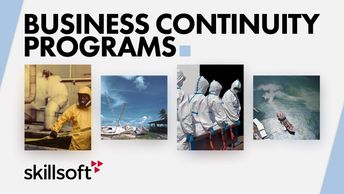
Business Continuity Programs
Whether it is a natural disaster that sweeps through your city, a computer virus that destroys vital electronic information or a pandemic that limits employee mobility, businesses need to be able to recover their services and operations as soon as possible if such a disaster does occur. A Business Continuity Program involves planning the recovery of operations through business continuity planning (BCP) when confronted with adverse events such as pandemic, natural disasters, technological failures, human error, and terrorism.

Carcinogen Safety
This course provides instruction on recognizing hazard management, use, and control of cancer-causing agents, or carcinogens. The learning objectives of this course are to define the terms associated with carcinogen safety, recognize the routes of entry of carcinogens into the body, and identify the methods of hazard control in relation to carcinogens. Furthermore, the course describes the basic safety rules for carcinogen use, identifies the substances that can cause cancer-related medical problems after repeated exposure, explores types of carcinogen hazard control, and identifies the characteristics of Standard Operating Procedures for handling carcinogens. The course was developed and reviewed with subject matter support provided by certified subject matter experts and industry professionals. Please note, the course materials and content were current with the laws and regulations at the time of the last expert review, however, they may not reflect the most current legal developments. Nothing herein, or in the course materials, shall be construed as professional advice as to any particular situation with respect to compliance with legal statutes or requirements.

Chemical Process Safety
This course is designed for employees who work at industrial process plants to recognize potential safety and health implications associated with their job. It is intended to educate the employees to help prevent or minimize the consequences of a catastrophic release of toxic, reactive, flammable, or explosive highly hazardous chemicals, or HHCs, from a process. The content in this course is designed to comply with the intent of the applicable regulatory requirements. Learner objectives for this course are to identify the process safety management employer requirements, specify process hazard analysis information, define the purpose of the chemical process safety management program, and recognize the elements of a PSM program. This course was developed with subject matter support provided by EnSafe Inc., a global professional services company focusing on engineering, environment, health and safety, and information technology. Please note, the course materials and content were current with the laws and regulations at the time of the last expert review, however, they may not reflect the most current legal developments. Nothing herein, or in the course materials, shall be construed as professional advice as to any particular situation with respect to compliance with legal statutes or requirements.

Cold Stress
This course will discuss the effects of cold on your body, outline the risk factors for cold-related ailments, and describe the associated treatments for each. This training will also describe several preventive measure techniques and safe work practices that you can use to protect yourself from cold-related stresses. The content in this course is designed to comply with the intent of the applicable regulatory requirements. Learner objectives for this course are to discuss the factors that may affect you when working in a cold environment, identify the signs, symptoms, and treatments of cold-related stresses, and recall techniques commonly used for preventing cold-related disorders. This course was developed with subject matter support provided by EnSafe Inc., a global professional services company focusing on engineering, environment, health and safety, and information technology. Please note, the course materials and content were current with the laws and regulations at the time of the last expert review, however, they may not reflect the most current legal developments. Nothing herein, or in the course materials, shall be construed as professional advice as to any particular situation with respect to compliance with legal statutes or requirements.
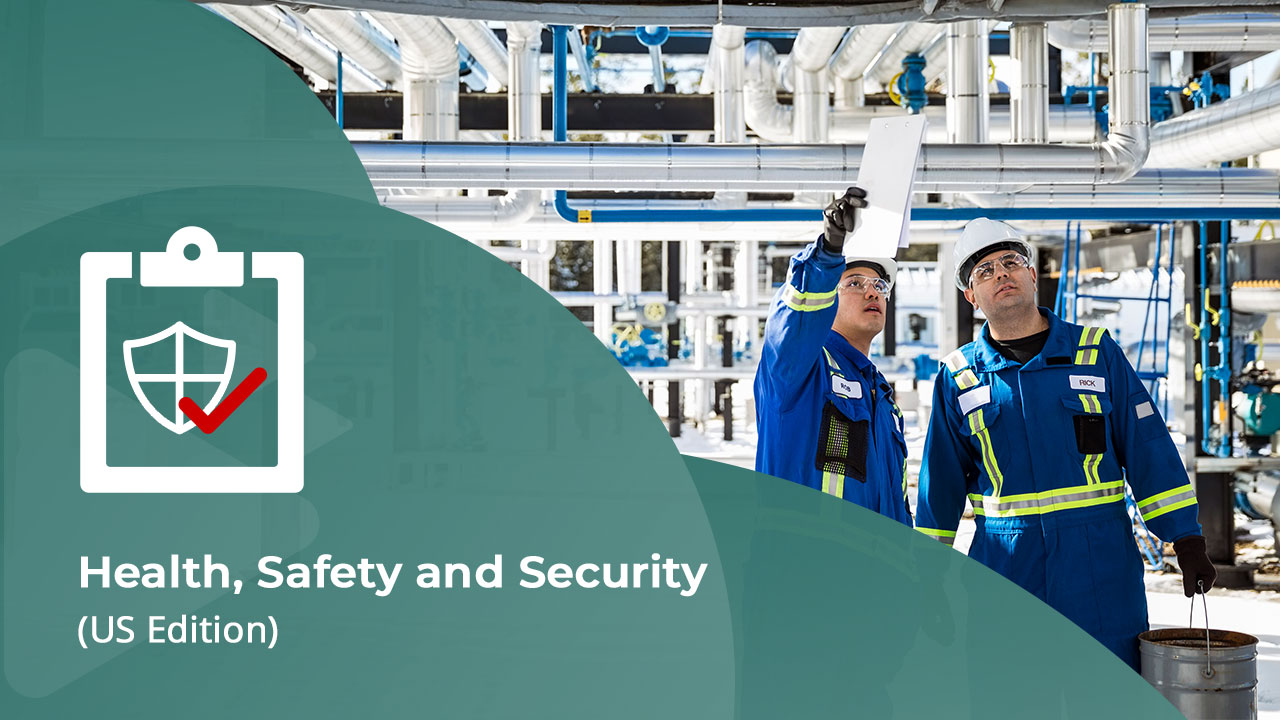
Cold Stress
This course will discuss the effects of cold on your body, outline the risk factors for cold-related ailments, and describe the associated treatments for each. This training will also describe several preventive measure techniques and safe work practices that you can use to protect yourself from cold-related stresses. The content in this course is designed to comply with the intent of the applicable regulatory requirements. The course was developed and reviewed with subject matter support provided by certified subject matter experts and industry professionals. Please note, the course materials and content were current with the laws and regulations at the time of the last expert review, however, they may not reflect the most current legal developments. Nothing herein, or in the course materials, shall be construed as professional advice as to any particular situation with respect to compliance with legal statutes or requirements.

Collision Avoidance
Each year, tens of thousands of people are injured or killed in vehicle collisions. That's why it's important that all drivers understand the challenges that face them on the nation's roads and highways. In this course, you'll learn about types of collisions and how to avoid them, how to deal with emergency stop situations such as skids and shoulder drops, how to prevent collisions by properly negotiating intersections, and techniques for dealing with common distractions. This course was developed with subject matter support provided by EnSafe Inc., a global professional services company focusing on engineering, environment, health and safety, and information technology. Please note, the course materials and content were current with the laws and regulations at the time of the last expert review, however, they may not reflect the most current legal developments. Nothing herein, or in the course materials, shall be construed as professional advice as to any particular situation with respect to compliance with legal statutes or requirements.

Collision Avoidance
Each year, tens of thousands of people are injured or killed in vehicle collisions. That's why it's important that all drivers understand the challenges that face them on the nation's roads and highways. In this course, you'll learn about types of collisions and how to avoid them, how to deal with emergency stop situations such as skids and shoulder drops, how to prevent collisions by properly negotiating intersections, and techniques for dealing with common distractions. This course was developed with subject matter support provided by EnSafe Inc., a global professional services company focusing on engineering, environment, health and safety, and information technology. Please note, the course materials and content were current with the laws and regulations at the time of the last expert review, however, they may not reflect the most current legal developments. Nothing herein, or in the course materials, shall be construed as professional advice as to any particular situation with respect to compliance with legal statutes or requirements.

Combustible Dust
Combustible dust is a hidden and insidious menace. Created during the normal course of production, combustible dust lurks in corners and crevices, within equipment and vents, on floors and other surfaces, and in the very air in which we work. A combustible dust explosion can cause immediate and catastrophic loss of life, injuries, and destruction of buildings and equipment. The ensuing fires, secondary explosions, flying debris, and collapsing structural components pose additional threats to both people and property. This course will introduce you to the agencies that deal with regulations and standards for dealing with combustible dust, and will help acquaint you with the risks, controls, safe work practices, and proper procedures involved in dealing with this workplace hazard. This course was developed with subject matter support provided by EnSafe Inc., a global professional services company focusing on engineering, environment, health and safety, and information technology. Please note, the course materials and content were current with the laws and regulations at the time of the last expert review, however, they may not reflect the most current legal developments. Nothing herein, or in the course materials, shall be construed as professional advice as to any particular situation with respect to compliance with legal statutes or requirements.

Compressed Gas Safety
Many industrial and laboratory operations require the use of compressed gases for a variety of different operations. This course will establish what elements are needed for an effective compressed gas safety program. The content in this course is designed to comply with the intent of the applicable regulatory requirements. This course was developed with subject matter support provided by EnSafe Inc., a global professional services company focusing on engineering, environment, health and safety, and information technology. Please note, the course materials and content were current with the laws and regulations at the time of the last expert review, however, they may not reflect the most current legal developments. Nothing herein, or in the course materials, shall be construed as professional advice as to any particular situation with respect to compliance with legal statutes or requirements.

Confined Spaces
This course covers information about confined spaces, hazardous atmospheres, necessary equipment, and permits. The intent of the course is to provide the learner with information about the hazards and hazard control methods that will permit safe work in enclosed work areas or confined spaces. Learner objectives for this course are to recognize terms commonly associated with confined spaces, distinguish the difference between permit required confined spaces and non-permit required confined spaces, identify hazards associated with confined spaces, recognize signs and symptoms of overexposure, identify equipment needed for confined space entry, specify safe entry procedures for confined spaces, recognize permits posted at points of entry to a confined space and specify their purpose and use, and identify the duties and responsibilities of personnel involved with confined spaces. This course was developed with subject matter support provided by EnSafe Inc., a global professional services company focusing on engineering, environment, health and safety, and information technology. Please note, the course materials and content were current with the laws and regulations at the time of the last expert review, however, they may not reflect the most current legal developments. Nothing herein, or in the course materials, shall be construed as professional advice as to any particular situation with respect to compliance with legal statutes or requirements.

Confined Spaces 2.0
This course covers information about working in confined spaces, including information about hazardous atmospheres, necessary equipment, and permits. The intent of the course is to provide the learner with information about the hazards and hazard control methods that will permit safe work in enclosed work areas or confined spaces.<br/>The course was developed and reviewed with subject matter support provided by certified subject matter experts and industry professionals. Please note, the course materials and content were current with the laws and regulations at the time of the last expert review, however, they may not reflect the most current legal developments. Nothing herein, or in the course materials, shall be construed as professional advice as to any particular situation with respect to compliance with legal statutes or requirements.

Confined Spaces in Construction
Confined Spaces in Construction is a comprehensive standard designed to provide protections to employees working in confined spaces in construction. Recognizing the unique challenges faced by the construction industry, the new standard includes a permit program designed to protect employees from exposure to many hazards associated with work in confined spaces, including atmospheric and physical hazards. It also incorporates provisions that address construction-specific hazard, accounts for advancements in technology, and improves enforceability of the requirements. OSHA expects full compliance with the Confined Spaces in Construction standard to reduce the average number of fatalities and injuries in confined spaces covered by this standard by 96 percent. Confined Spaces in Construction was developed with subject matter support provided by EnSafe Inc., a global professional services company focusing on engineering, environment, health and safety, and information technology.
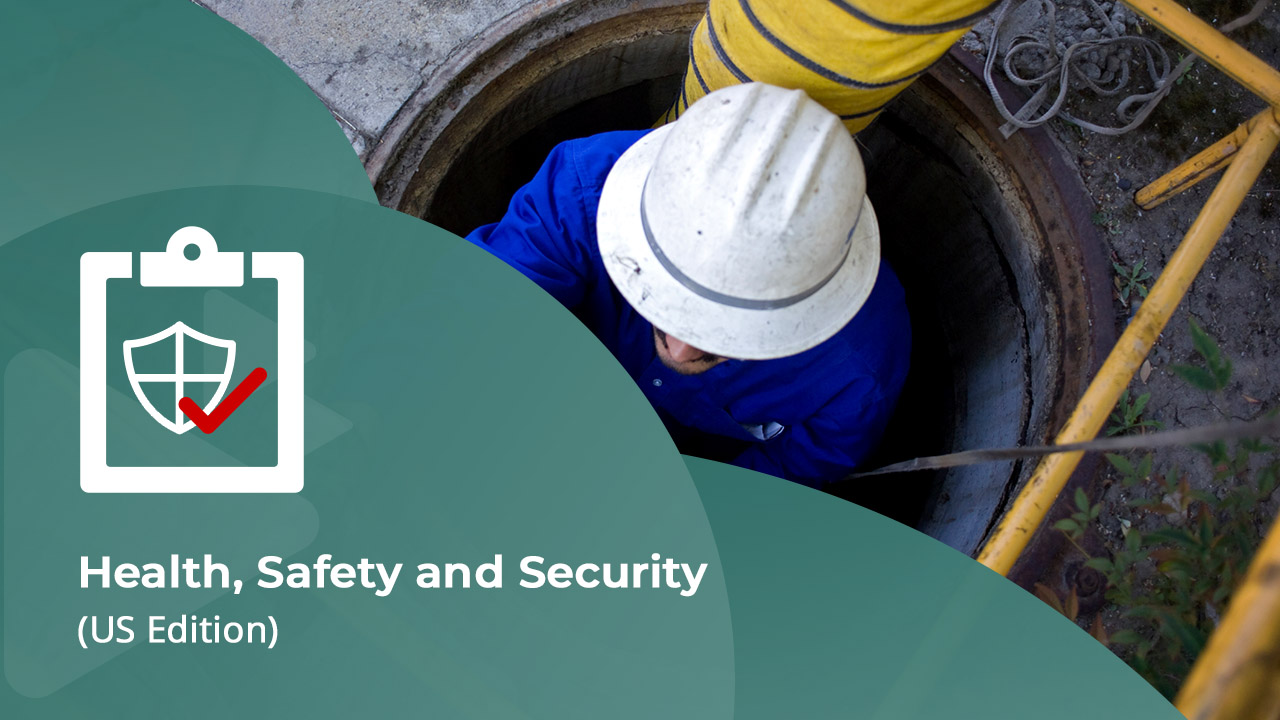
Confined Spaces in Construction 2.0
Confined Spaces in Construction is a comprehensive standard designed to provide protection to employees. Recognizing the unique challenges faced by the construction industry, the standard includes a permit program designed to protect employees from exposure to atmospheric and physical hazards. It also incorporates provisions that address construction-specific challenges, accounts for advancements in technology, and improves enforceability of the requirements. The course was developed and reviewed with subject matter support provided by certified subject matter experts and industry professionals. Please note, the course materials and content were current with the laws and regulations at the time of the last expert review, however, they may not reflect the most current legal developments. Nothing herein, or in the course materials, shall be construed as professional advice as to any particular situation with respect to compliance with legal statutes or requirements.
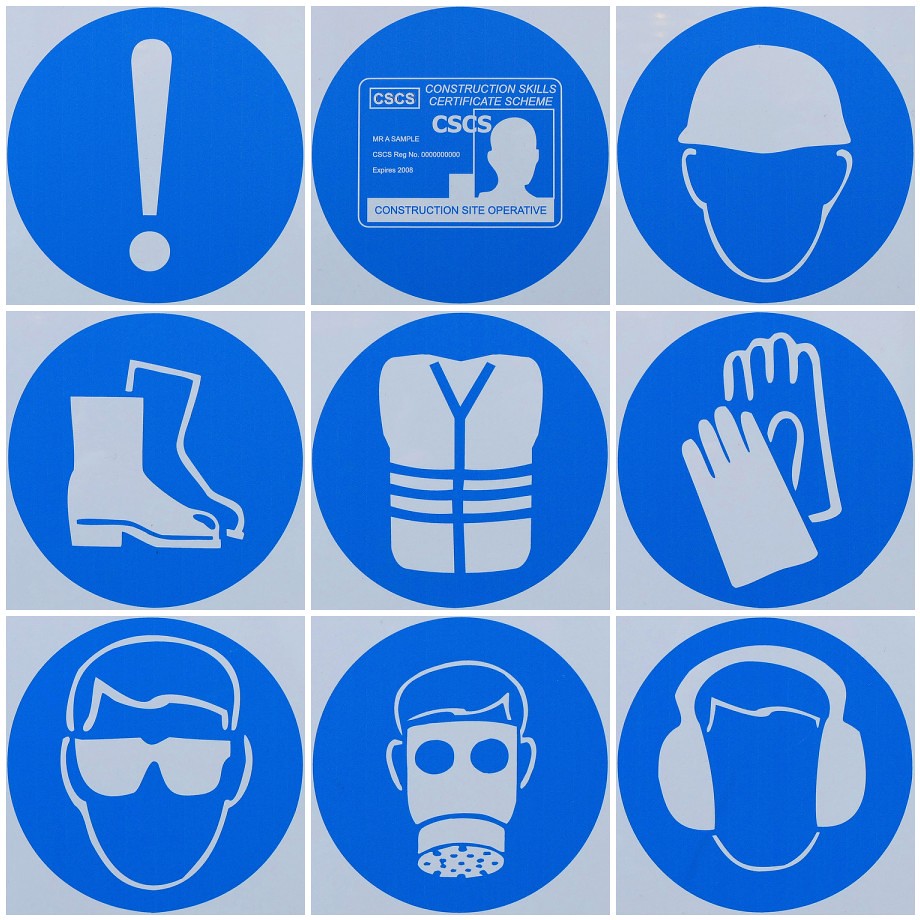
Construction Safety Orientation
This course is designed to inform new construction workers and site visitors in and around construction sites of the potential hazards and safe work practices associated with the construction industry. The content in this course is designed to comply with the intent of the applicable regulatory requirements. Learner objectives are to recognize hazards commonly found at construction sites and recall safe construction work practices. This course was developed with subject matter support provided by EnSafe Inc., a global professional services company focusing on engineering, environment, health and safety, and information technology.

Construction Safety Orientation
This course is designed to inform new construction workers and site visitors in and around construction sites of the potential hazards and safe work practices associated with the construction industry. The content in this course is designed to comply with the intent of the applicable regulatory requirements. This course was developed with subject matter support provided by EnSafe Inc., a global professional services company focusing on engineering, environment, health and safety, and information technology. Please note, the course materials and content were current with the laws and regulations at the time of the last expert review, however, they may not reflect the most current legal developments. Nothing herein, or in the course materials, shall be construed as professional advice as to any particular situation with respect to compliance with legal statutes or requirements.

Construction: Caught-in or Caught-between
The construction industry is very dangerous, with many worker injuries and deaths occurring every year. The leading causes of worker deaths in this industry are falls, being struck by an object, electrocution, and being caught-in or caught-between. This course explores the various categories of caught-in or caught-between hazards that could exist in various construction environments and aims to teach learners to recognize and protect themselves from these hazards. This course was developed with subject matter support provided by EnSafe Inc., a global professional services company focusing on engineering, environment, health and safety, and information technology. Please note, the course materials and content were current with the laws and regulations at the time of the last expert review, however, they may not reflect the most current legal developments. Nothing herein, or in the course materials, shall be construed as professional advice as to any particular situation with respect to compliance with legal statutes or requirements.
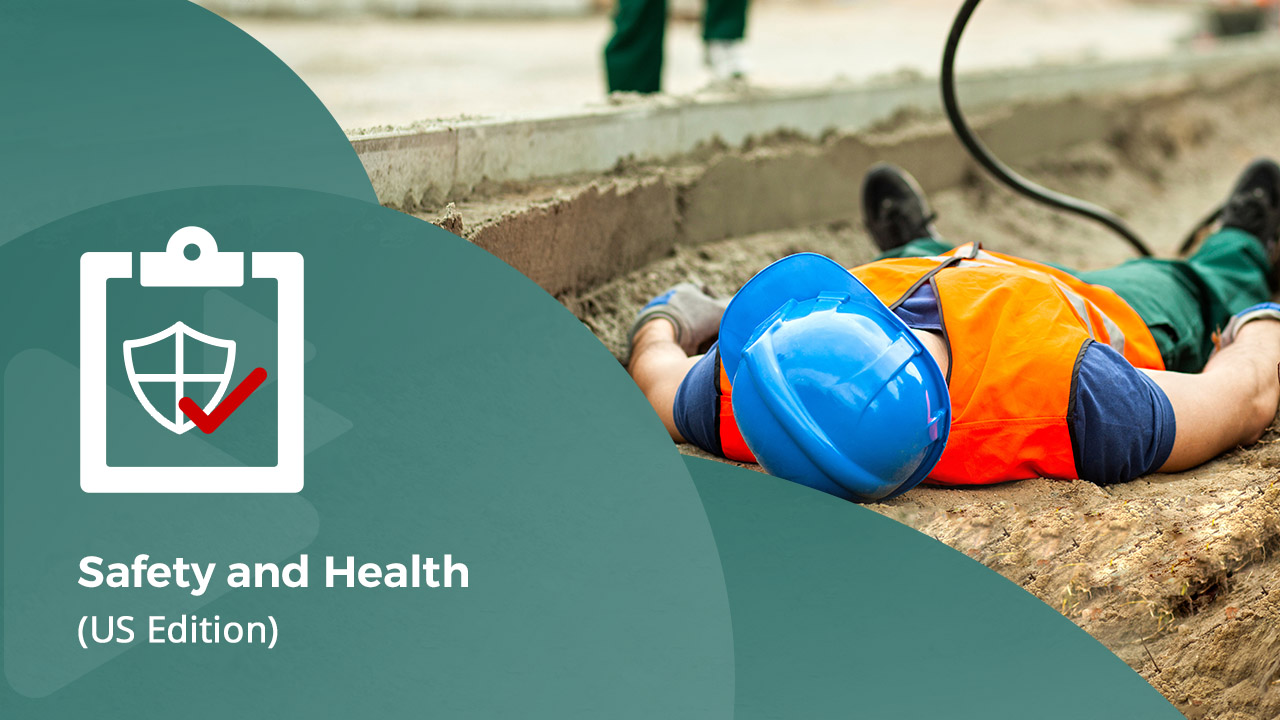
Construction: Electrocution
Electricity is a leading cause of injuries and fatalities in the construction industry. Injuries can be minimized by taking the necessary precautions to work safely with electricity. In this course, you'll learn how the Occupational Safety and Health Administration governs electrical work on construction sites. This course focuses on the basics of electricity and its effect on the body. It highlights the most common electrical hazards in construction and ways to prevent those hazards. This course was developed with subject matter support provided by EnSafe Inc., a global professional services company focusing on engineering, environment, health and safety, and information technology. Please note, the course materials and content were current with the laws and regulations at the time of the last expert review, however, they may not reflect the most current legal developments. Nothing herein, or in the course materials, shall be construed as professional advice as to any particular situation with respect to compliance with legal statutes or requirements.
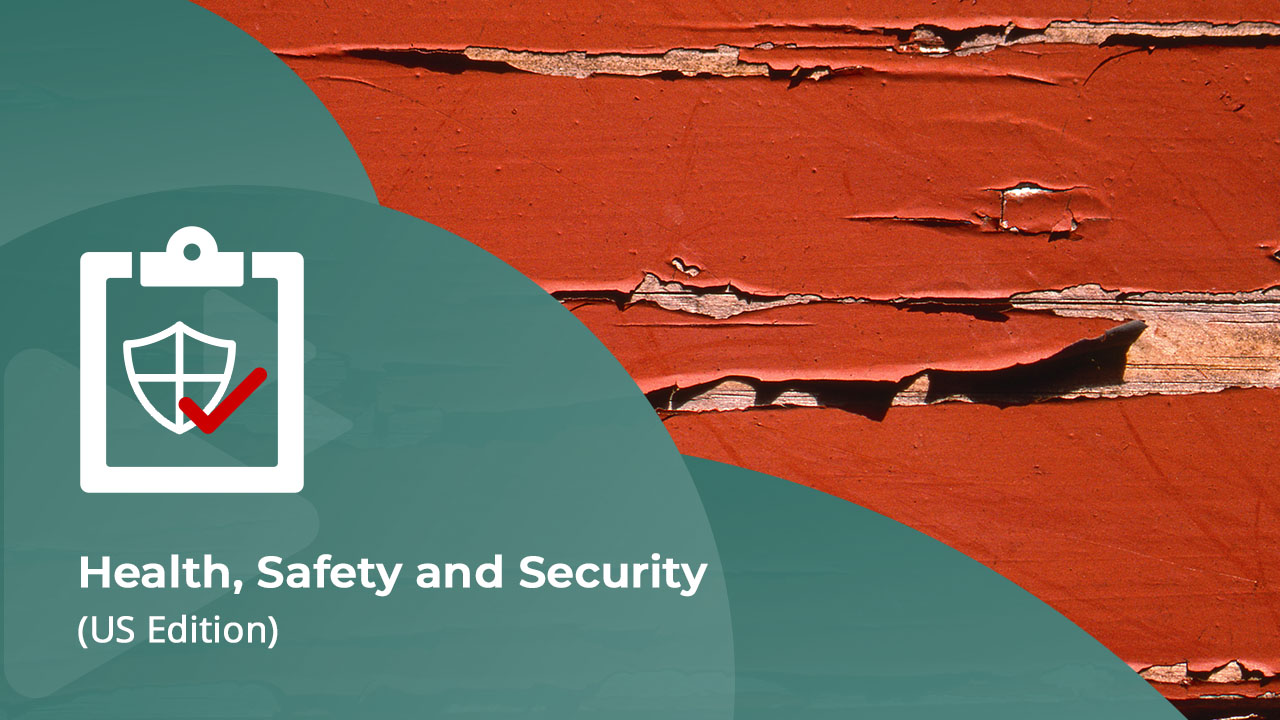
Construction: Lead Awareness
This course covers information mandated by OSHA 29 CFR 1926.62. It provides general knowledge of the hazards associated with lead exposure and requirements to reduce or eliminate exposure in the construction industry. The content in this course is designed to comply with the intent of the applicable regulatory requirements. This course was developed with subject matter support provided by EnSafe Inc., a global professional services company focusing on engineering, environment, health and safety, and information technology. Please note, the course materials and content were current with the laws and regulations at the time of the last expert review, however, they may not reflect the most current legal developments. Nothing herein, or in the course materials, shall be construed as professional advice as to any particular situation with respect to compliance with legal statutes or requirements.
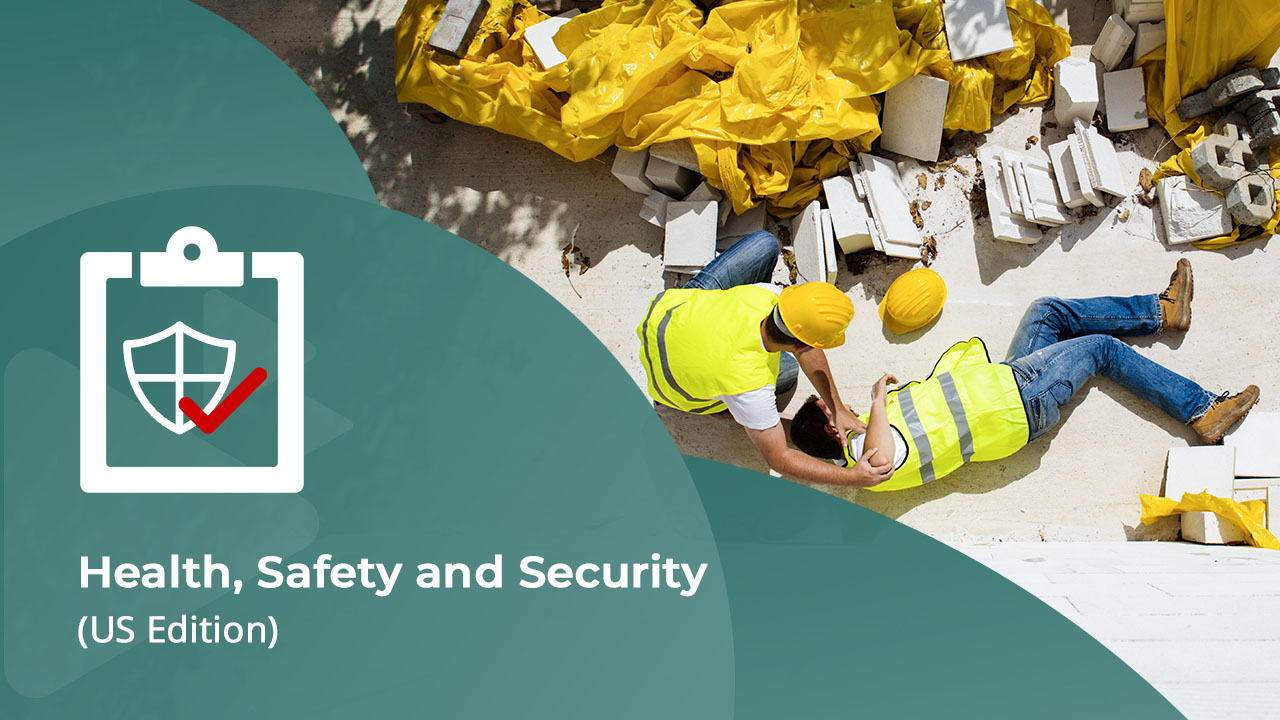
Construction: Struck By
This course is designed to provide an awareness of various struck-by hazards in construction environments and the measures workers and management should take to protect workers from these hazards. The course content is designed in line with OSHA regulations and ANSI/ISEA standards where applicable. The learning objectives of this course are to recognize workplace conditions and practices that have the potential for struck-by accidents, and to understand the guidelines for avoiding and preventing these conditions. This course was developed with subject matter support provided by EnSafe Inc., a global professional services company focusing on engineering, environment, health and safety, and information technology. Please note, the course materials and content were current with the laws and regulations at the time of the last expert review, however, they may not reflect the most current legal developments. Nothing herein, or in the course materials, shall be construed as professional advice as to any particular situation with respect to compliance with legal statutes or requirements.

Contractor Safety
Contractors are hired to perform services on worksites where a variety of hazards may be present. The hiring company shares some of the responsibility for the safety of the contractor. Often, jobs require contractors to work alongside the hiring company, and the safety of each impacts the other. Understanding contractor safety and acknowledging the benefit for both parties is important in providing a safe and healthful workplace. In this course, you will learn about different classifications of employers and their responsibilities to ensure a safe worksite. This course was developed with subject matter provided by Winn Forensics, LLC, a professional services company focusing on corporate, business, and personal safety training as well as consulting on occupational injury matters. Please note, the course materials and content were current with the laws and regulations at the time of the last expert review, however, they may not reflect the most current legal developments. Nothing herein, or in the course materials, shall be construed as professional advice as to any particular situation with respect to compliance with legal statutes or requirements.
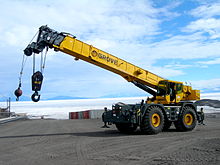
Crane Signaling and Communications
When operating a crane, a signal person – or spotter – is used in situation when the point of crane operation is not in full view of the crane operator. This course will provide you with an understanding of the training requirements and proper hand signals and communication skills needed by signal persons and crane operators in these situations. This will allow the operation of mobile cranes in accordance with the Occupational Safety and Health Administration (OSHA)'s 'Signal Person Qualification' standard at part 29 Code of Federal Registers (CFR) 1926.1428. This course was developed with subject matter support provided by EnSafe Inc., a global professional services company focusing on engineering, environment, health and safety, and information technology. Please note, the course materials and content were current with the laws and regulations at the time of the last expert review, however, they may not reflect the most current legal developments. Nothing herein, or in the course materials, shall be construed as professional advice as to any particular situation with respect to compliance with legal statutes or requirements.

Defensive Driving
Every year, motor vehicle accidents result in thousands of deaths, and many of these result from occupational motor vehicle incidents. This course provides simple, effective defensive driving techniques you can use to reduce your chances of being involved in a motor vehicle accident. It covers accident prevention techniques, safety precautions for driving in hazardous conditions, and the risks of drinking and driving. It also explores the use of vehicle safety features and covers guidelines for driving safely on the job. This course was developed with subject matter support provided by EnSafe Inc., a global professional services company focusing on engineering, environment, health and safety, and information technology. Please note, the course materials and content were current with the laws and regulations at the time of the last expert review, however, they may not reflect the most current legal developments. Nothing herein, or in the course materials, shall be construed as professional advice as to any particular situation with respect to compliance with legal statutes or requirements.

Defensive Driving Fundamentals
This course will provide advanced defensive driving techniques to reduce your chances of being involved in a motor vehicle accident. The content in this course is designed to comply with the intent of the applicable regulatory requirements – specify concerns to be addressed before and while driving, use safe driving techniques to avoid collisions, drive safely in various weather conditions, and respond to specific driving emergency situations. This course was developed with subject matter support provided by EnSafe Inc., a global professional services company focusing on engineering, environment, health and safety, and information technology. Please note, the course materials and content were current with the laws and regulations at the time of the last expert review, however, they may not reflect the most current legal developments. Nothing herein, or in the course materials, shall be construed as professional advice as to any particular situation with respect to compliance with legal statutes or requirements.

Distracted Driving
Each year, thousands of people are injured or killed in motor vehicle accidents involving distracted drivers. People driving while talking on their cell phones or eating put all road users at risk. With motor vehicle accidents (MVAs) now among the top causes of injury-related deaths and the number one cause of work-related deaths, all responsible drivers must be able to control distractions while at the wheel. In this course, you will learn why distractions cause accidents, and how to minimize your exposure to them. This course was reviewed and edited by Winn Forensics, LLC, a professional services company focusing on corporate, business and personal safety training as well as consulting on occupational injury matters. Please note, the course materials and content were current with the laws and regulations at the time of the last expert review, however, they may not reflect the most current legal developments. Nothing herein, or in the course materials, shall be construed as professional advice as to any particular situation with respect to compliance with legal statutes or requirements.

Distracted Driving 2.0
Each year, thousands of people are injured or killed in motor vehicle accidents involving distracted drivers. People driving while talking on their cell phones or eating put all road users at risk. With motor vehicle accidents (MVAs) now among the top causes of injury-related deaths and the number one cause of work-related deaths, all responsible drivers must be able to control distractions while at the wheel. In this course, you will learn why distractions cause accidents, and how to minimize your exposure to them. This course was developed with subject matter support provided by EnSafe Inc., a global professional services company focusing on engineering, environment, health and safety, and information technology. Please note, the course materials and content were current with the laws and regulations at the time of the last expert review, however, they may not reflect the most current legal developments. Nothing herein, or in the course materials, shall be construed as professional advice as to any particular situation with respect to compliance with legal statutes or requirements.

Driving Safely, Driving Smarter
This course will provide general defensive driving techniques to reduce your chances of being involved in a motor vehicle accident. The content in this course is designed to comply with the intent of the applicable regulatory requirements – specify concerns to be addressed before and while driving, use safe driving techniques to avoid collisions, drive safely in various weather conditions, and respond to specific driving emergency situations. Driving Safely, Driving Smarter was developed with subject matter support provided by EnSafe Inc., a global professional services company focusing on engineering, environment, health and safety, and information technology. Please note, the course materials and content were current with the laws and regulations at the time of the last expert review, however, they may not reflect the most current legal developments. Nothing herein, or in the course materials, shall be construed as professional advice as to any particular situation with respect to compliance with legal statutes or requirements.

Electric Pallet Jack Safety
This course is intended for all employees who use electric pallet jacks and other powered industrial trucks or anyone who might be exposed to the hazards associated with powered industrial truck usage in the workplace. While it is considered just one part of Class 3 PIT certification, the course provides simple and effective tips and strategies that might help to minimize the risks surrounding the use and operation of PITs in the workplace. This course was developed with subject matter support provided by EnSafe Inc., a global professional services company focusing on engineering, environment, health and safety, and information.
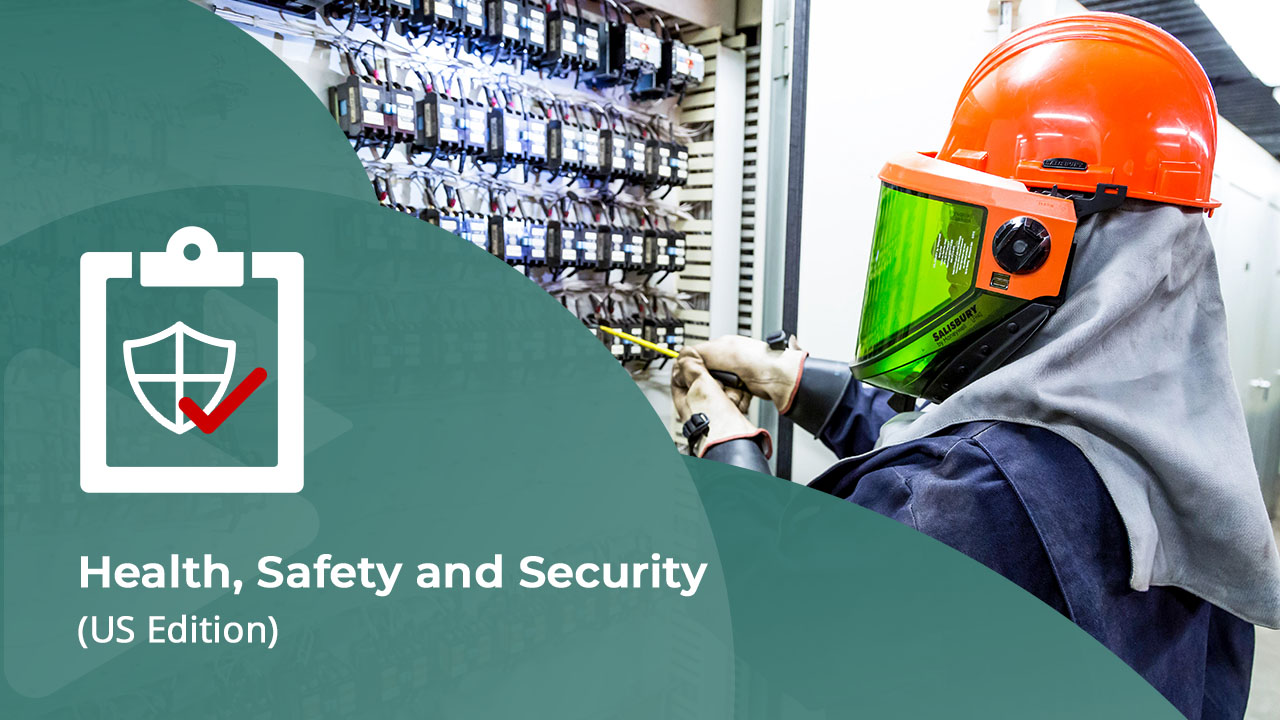
Electrical Hazards: Shock, Electrocution, Arc Flash and Arc Blast
This course provides a comprehensive overview of the basic criteria for electrical safety-related work practices stipulated in the National Fire Protection Agency (NFPA) 70E Standard for Electrical Safety in the Workplace. It presents detailed information on the practices, programs, techniques, and processes related to electrical work, in accordance with the NFPA Standard. This course was developed with subject matter support provided by EnSafe Inc., a global professional services company focusing on engineering, environment, health and safety, and information technology. Please note, the course materials and content were current with the laws and regulations at the time of the last expert review, however, they may not reflect the most current legal developments. Nothing herein, or in the course materials, shall be construed as professional advice as to any particular situation with respect to compliance with legal statutes or requirements.

Electrical Safety
This is an awareness level course that covers how to work safely with electricity. It focuses on specific electrical hazards found in the workplace and methods to minimize or eliminate those hazards. The content in this course is designed to comply with the intent of the applicable regulatory requirements. Learner objectives are to recall basic rules of electricity as they relate to electrical safety, identify actions to take in an electricity-related emergency, recognize common electrical hazards, and describe methods to reduce or eliminate electrical hazards. This course was developed with subject matter support provided by EnSafe Inc., a global professional services company focusing on engineering, environment, health and safety, and information technology. Please note, the course materials and content were current with the laws and regulations at the time of the last expert review, however, they may not reflect the most current legal developments. Nothing herein, or in the course materials, shall be construed as professional advice as to any particular situation with respect to compliance with legal statutes or requirements.

Electrical Safety 2.0
This is an awareness-level course that covers how to work safely with electricity. It focuses on specific electrical hazards found in the workplace and methods to minimize or eliminate those hazards. The content in this course is designed to comply with the intent of the applicable regulatory requirements. Learner objectives are to recall basic rules of electricity as they relate to electrical safety, identify actions to take in an electricity-related emergency, recognize common electrical hazards, and describe methods to reduce or eliminate electrical hazards. This course was developed with subject matter support provided by EnSafe Inc., a global professional services company focusing on engineering, environment, health and safety, and information technology. Please note, the course materials and content were current with the laws and regulations at the time of the last expert review, however, they may not reflect the most current legal developments. Nothing herein, or in the course materials, shall be construed as professional advice as to any particular situation with respect to compliance with legal statutes or requirements.
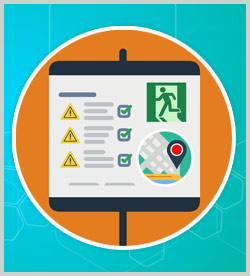
Emergency and Disaster Preparedness
Emergencies and disasters can strike at any time, anywhere, and without any warning. In this course, you'll learn about ways to prepare and respond to emergencies and disasters. You'll also learn about safe evacuation practices. Then you'll be introduced to the best ways to respond to specific natural and manmade emergencies and disasters. The course was developed and reviewed with subject matter support provided by certified subject matter experts and industry professionals. Please note, the course materials and content were current with the laws and regulations at the time of the last expert review, however, they may not reflect the most current legal developments. Nothing herein, or in the course materials, shall be construed as professional advice as to any particular situation with respect to compliance with legal statutes or requirements.

Emergency and Disaster Preparedness
This course was designed and developed to provide instruction on emergency response, safety, reporting, and evacuation of company facilities and work areas in the event of a natural disaster, fire, bomb threat, or other emergency. The procedures contained in this training should be followed unless otherwise directed by your employer, police or fire department officials. The content in this course is designed to comply with the intent of the applicable regulatory requirements. Learner objectives are to discuss the purpose and scope of an emergency response plan, describe the purpose and scope of an emergency evacuation plan, recall the actions to take in specific emergency situations, describe the purpose and scope of a workplace violence prevention plan, and identify specific actions to take in the event of a bomb threat. The course was developed and reviewed with subject matter support provided by certified subject matter experts and industry professionals. Please note, the course materials and content were current with the laws and regulations at the time of the last expert review, however, they may not reflect the most current legal developments. Nothing herein, or in the course materials, shall be construed as professional advice as to any particular situation with respect to compliance with legal statutes or requirements.
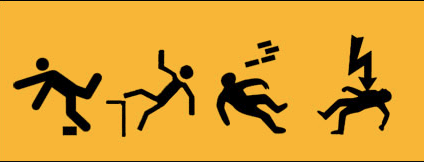
Emergency Response in the Workplace
This course provides information about planning for and responding to emergencies. The intent is to provide the learner with basic information on procedures that cover onsite emergencies such as an accidental release or spill of a hazardous chemical, fire emergencies, explosions, bomb threats, threats to security, or personal injuries. The content in this course is designed to comply with the intent of the applicable regulatory requirements. Learner objectives are to define basic terminology associated with emergency response, recognize the presence of hazardous substances in an emergency, specify the risks associated with hazardous substances in an incident, specify the potential outcomes associated with an emergency created when hazardous substances are present, define the role and responsibilities of the Emergency Response Team, identify additional resources for more information regarding relevant standard operating procedures for emergency response, identify the requirements for air monitoring during emergency response, specify general site security and control procedures according to the emergency response plan and the US Department of Transportation's Emergency Response Guidebook, specify emergency reporting and communication methods, specify basic spill control, containment, and/or confinement operations within the capabilities of the resources and personal protective equipment available in your area, and specify basic decontamination procedures. This course was developed with subject matter support provided by EnSafe Inc., a global professional services company focusing on engineering, environment, health and safety, and information technology. Please note, the course materials and content were current with the laws and regulations at the time of the last expert review, however, they may not reflect the most current legal developments. Nothing herein, or in the course materials, shall be construed as professional advice as to any particular situation with respect to compliance with legal statutes or requirements.
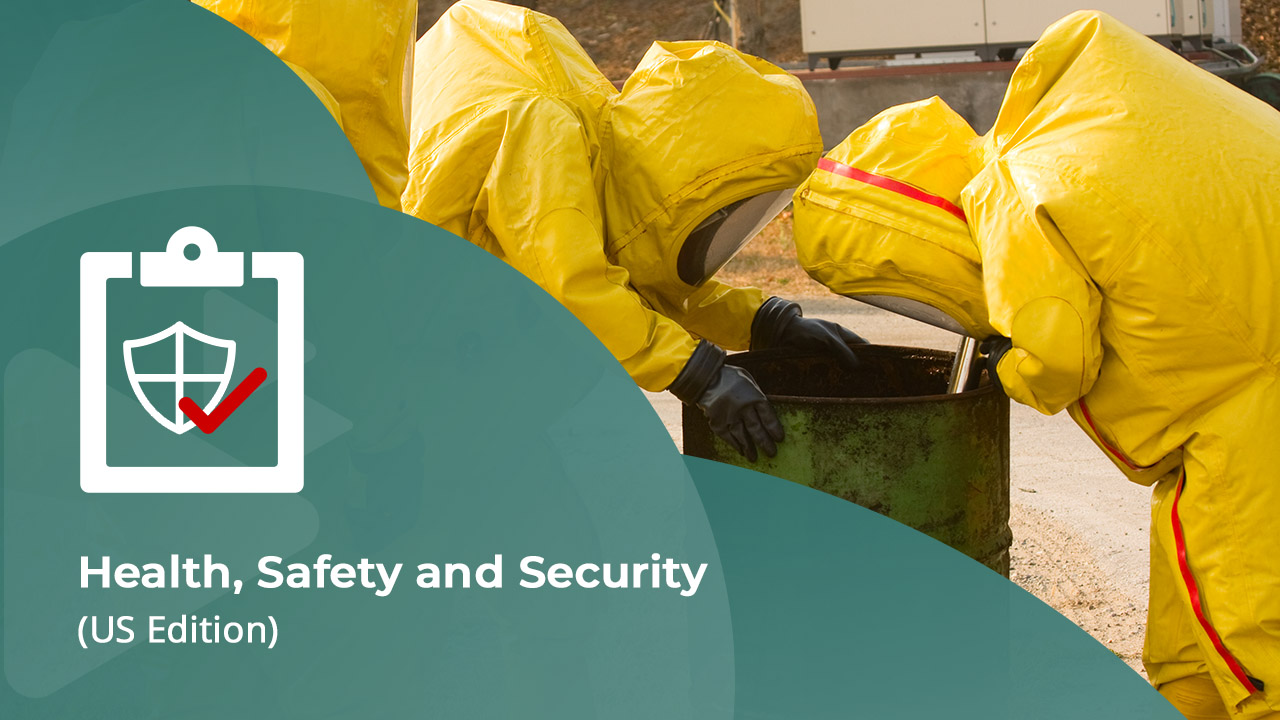
Emergency Response in the Workplace
This course provides information about planning for and responding to emergencies. The intent is to provide the learner with basic information on procedures that cover onsite emergencies such as an accidental release or spill of a hazardous chemical, fire emergencies, explosions, bomb threats, threats to security, or personal injuries. The content in this course is designed to comply with the intent of the applicable regulatory requirements. This course was developed with subject matter support provided by EnSafe Inc., a global professional services company focusing on engineering, environment, health and safety, and information technology. Please note, the course materials and content were current with the laws and regulations at the time of the last expert review, however, they may not reflect the most current legal developments. Nothing herein, or in the course materials, shall be construed as professional advice as to any particular situation with respect to compliance with legal statutes or requirements.

Emergency Situations While Driving
Do you sometimes worry that you won't be able to handle emergencies that might happen while you're driving? Worrying isn't helpful; instead prepare for potential driving emergencies by learning how to respond appropriately and safely to them. Successfully handling emergencies requires knowledge of how to prevent them when possible and how to handle them when they do happen. Understanding the typical types of collisions can help you avoid them, knowing how to handle a skid can help you successfully steer out of one, and knowing how to adjust your driving to hazardous weather conditions can help you prevent or avoid weather-related emergencies. It is also important that you know how to safely handle a breakdown. Finally, you should know how to handle an accident in case you're involved in an accident. This course was developed with subject matter support provided by EnSafe Inc., a global professional services company focusing on engineering, environment, health and safety, and information technology. Please note, the course materials and content were current with the laws and regulations at the time of the last expert review, however, they may not reflect the most current legal developments. Nothing herein, or in the course materials, shall be construed as professional advice as to any particular situation with respect to compliance with legal statutes or requirements.

Environmental Management Systems (EMS)
Historically, companies have managed their own environmental challenges in response to external pressure from government agencies, environmental interest groups, and citizens focusing mainly on regulatory compliance. Today, companies recognize the importance of sound environmental management practices that result in economic gain. The International Organization for Standardization (ISO) is a worldwide federation of national standards bodies. International standards covering environmental management are intended to provide organizations with the elements of an effective environmental management system (EMS) that can be integrated with other management requirements and help organizations achieve environmental and economic needs. The standards require that 'each organization shall establish, document, implement, maintain, and continually improve an environmental management system in accordance with the requirements of the international standard and determine how it will fulfill these requirements.' Additionally, all employees and contractors of ISO 14001 certified companies must be aware of the importance of conformance with the company's environmental policy, the roles and responsibilities associated with achieving conformance to the environmental policy (including preparedness and response requirements), and the potential consequences of departure from specified operating procedure. In this course, learners will be introduced to the important concepts of EMS and find out how these apply to their own company's EMS. Skillsoft Corporation is not affiliated with or sponsored by the ISO and does not have a relationship with the ISO. As such, Skillsoft is not authorized or approved to act on behalf of the ISO, and is not authorized by ISO to sell or deliver ISO owned products or services. The course was developed and reviewed with subject matter support provided by certified subject matter experts and industry professionals. Please note, the course materials and content were current with the laws and regulations at the time of the last expert review, however, they may not reflect the most current legal developments. Nothing herein, or in the course materials, shall be construed as professional advice as to any particular situation with respect to compliance with legal statutes or requirements.
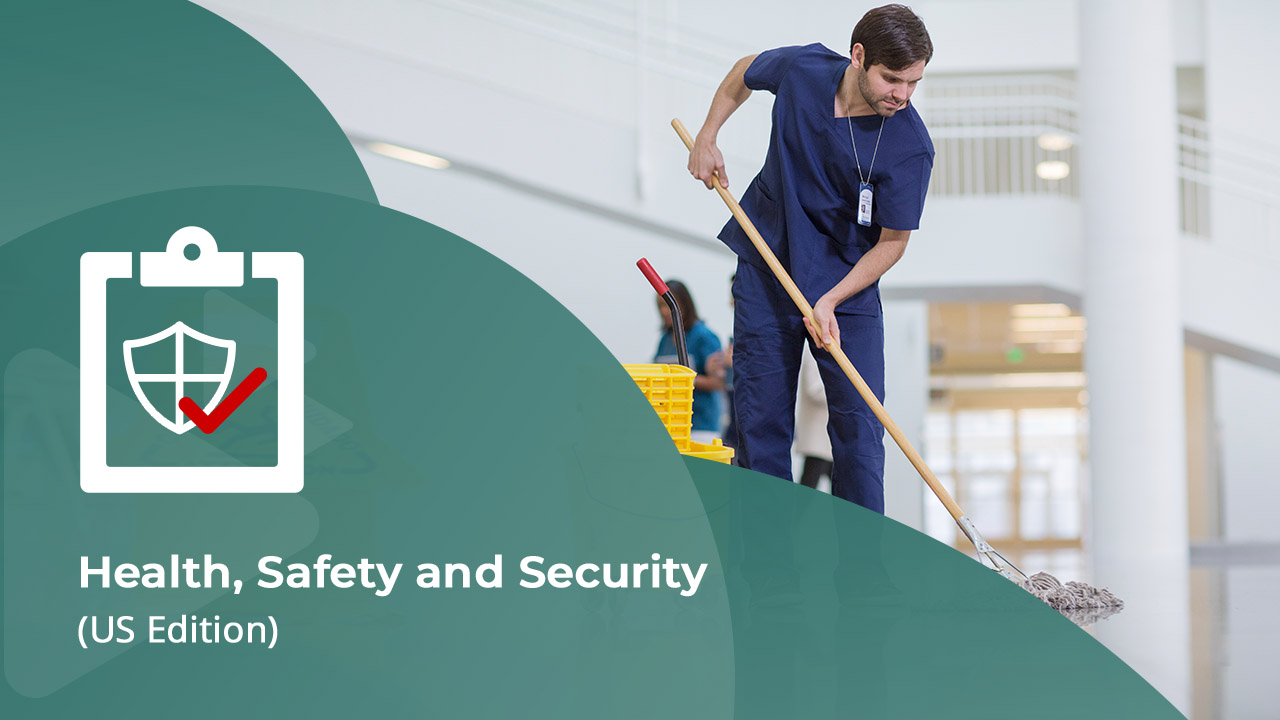
Ergonomics for Housekeeping Work
Ergonomic related injuries, including injuries to the skeleton and muscles, can be painful and debilitating. These types of injuries often affect the neck, back, wrists, and fingers. In this course, you'll learn about ergonomic injuries, and how to recognize signs and symptoms associated with musculoskeletal injuries. You'll also learn how to identify risk factors associated with these injuries and controls to reduce or eliminate hazards. The course was developed and reviewed with subject matter support provided by certified subject matter experts and industry professionals. Please note, the course materials and content were current with the laws and regulations at the time of the last expert review, however, they may not reflect the most current legal developments. Nothing herein, or in the course materials, shall be construed as professional advice as to any particular situation with respect to compliance with legal statutes or requirements.
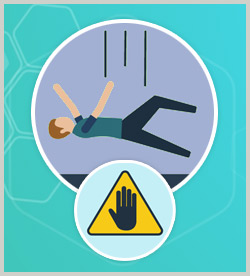
Fall Prevention
This course is intended to provide employees who might be exposed to fall hazards with the ability to recognize such hazards and provide control measures to minimize their risk. The content in this course is designed to comply with the intent of the applicable regulatory requirements. Learner objectives are to recognize common workplace fall hazards, describe fall protection techniques used in general industry, identify fall protection equipment and limitations, and describe the primary components of an OSHA-compliant fall protection program. This course was developed with subject matter support provided by EnSafe Inc., a global professional services company focusing on engineering, environment, health and safety, and information technology. Please note, the course materials and content were current with the laws and regulations at the time of the last expert review, however, they may not reflect the most current legal developments. Nothing herein, or in the course materials, shall be construed as professional advice as to any particular situation with respect to compliance with legal statutes or requirements. This course was created using the November 2016 OSHA final rule updating walking-working surfaces standards and personal fall protection systems requirements.

Fall Protection
This course is intended to provide employees who might be exposed to fall hazards with the ability to recognize such hazards and the ability to minimize them. The content in this course is designed to comply with the intent of the applicable regulatory requirements. Learner objectives are to recognize common workplace fall hazards, describe fall protection techniques used in general industry, identify fall protection equipment and limitations, and describe the primary components of an OSHA-compliant fall protection program. This course was developed with subject matter support provided by EnSafe Inc., a global professional services company focusing on engineering, environment, health and safety, and information technology. This course was reviewed and updated for the November 2016 OSHA final rule updating walking-working surfaces standards and personal fall protection systems requirements.

Fatigue Management
Being tired at work doesn't just make you less productive. Fatigue also makes errors more likely and can lead to serious or even fatal accidents, putting you and others at risk. In this course, you'll learn about the signs of fatigue and its causes, so that you'll be more aware when you're overtired. You'll also learn about the risks that fatigue can pose in the workplace, and about specific strategies you can use to help prevent fatigue. This course was developed with subject matter support provided by EnSafe Inc., a global professional services company focusing on engineering, environment, health and safety, and information technology. Please note, the course materials and content were current with the laws and regulations at the time of the last expert review, however, they may not reflect the most current legal developments. Nothing herein, or in the course materials, shall be construed as professional advice as to any particular situation with respect to compliance with legal statutes or requirements.

Fire Safety and Prevention 2.0
Every year, workplace fires and explosions kill and injure people, and destroy many businesses. In this course, you'll gain an understanding of the elements required for a fire to start and learn ways to prevent fires in the workplace. You'll learn how to respond, including how to evacuate the premises, if there's a fire in your workplace. You'll also learn how to select and use a fire extinguisher. This course was developed with subject matter support provided by EnSafe Inc., a global professional services company focusing on engineering, environment, health and safety, and information technology. Please note, the course materials and content were current with the laws and regulations at the time of the last expert review, however, they may not reflect the most current legal developments. Nothing herein, or in the course materials, shall be construed as professional advice as to any particular situation with respect to compliance with legal statutes or requirements.
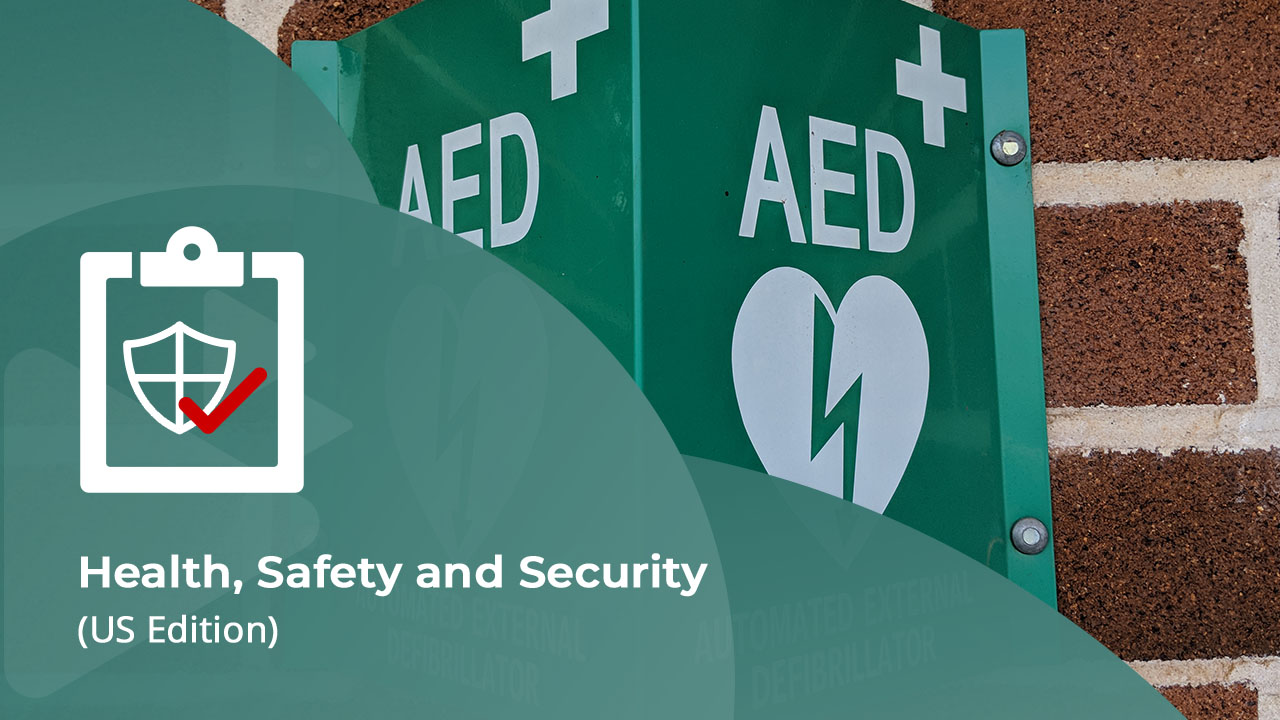
First Aid: Automated External Defibrillator
The primary focus of this course is the proper use of the Automated External Defibrillator (AED). Use of the AED also includes the correct application of the ABCs of basic life support and basic CPR techniques, which will also be reviewed in this training. Note: This training should not be used as the primary basis for any AED or CPR certification. It is intended to provide the learner with knowledge-based training only and should be accompanied with a performance-based component provided by a qualified instructor. The content in this course is designed to comply with the intent of the applicable regulatory requirements. The course was developed and reviewed with subject matter support provided by certified subject matter experts and industry professionals. Please note, the course materials and content were current with the laws and regulations at the time of the last expert review, however, they may not reflect the most current legal developments. Nothing herein, or in the course materials, shall be construed as professional advice as to any particular situation with respect to compliance with legal statutes or requirements.
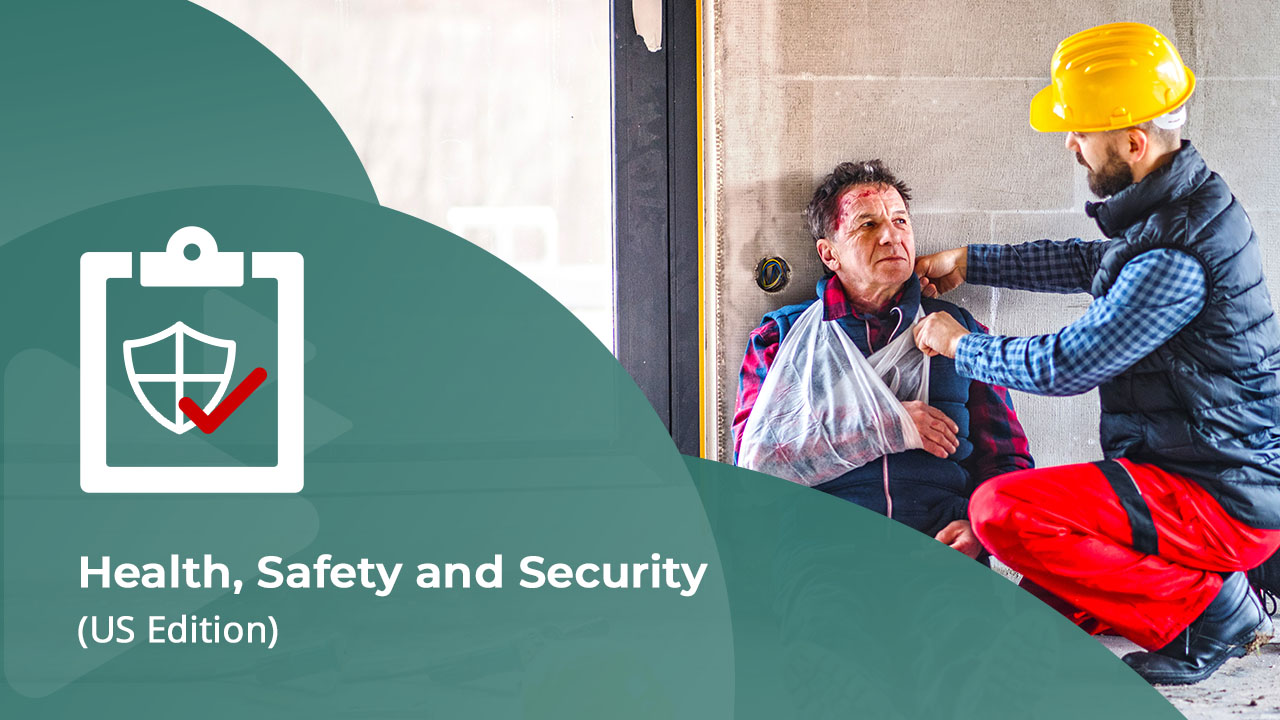
First Aid: Basic
First aid is the immediate care for any person with injuries or sudden illness before professional medical treatment is available. It not only involves the injured person's physical condition and emotional state, but the entire emergency situation. This training course will focus on how to use a systematic approach to evaluate an emergency situation and respond to basic first aid situations prior to the arrival of emergency medical services (EMS). Note: This training should not be used as the primary basis for any first aid certification. It is intended to provide you with knowledge-based training only. This training should be accompanied by a performance-based component provided by a certified first aid instructor. The content in this course is designed to comply with the intent of the applicable regulatory requirements. The course was developed and reviewed with subject matter support provided by certified subject matter experts and industry professionals. Please note, the course materials and content were current with the laws and regulations at the time of the last expert review, however, they may not reflect the most current legal developments. Nothing herein, or in the course materials, shall be construed as professional advice as to any particular situation with respect to compliance with legal statutes or requirements.
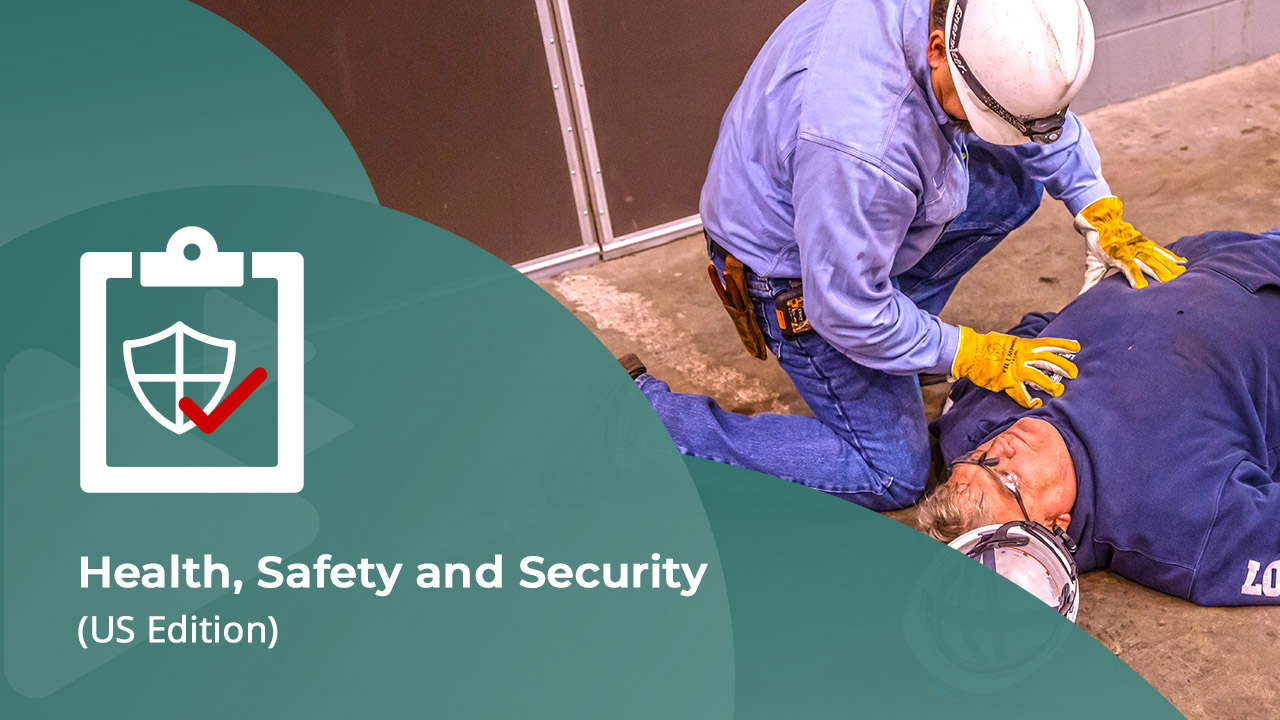
First Aid: CPR
Emergencies requiring cardiopulmonary resuscitation (CPR) can and do occur without warning. It is important that you know the basic emergency techniques for recognizing and treating failures of the respiratory system and heart. This course will focus on the three procedures of basic life support: restoring circulation, maintaining an open airway, and restoring breathing. Note: this training should not be used as the primary basis for any CPR certification. It is intended to provide the learner with knowledge-based training only. This training should be accompanied by a performance-based component provided by a certified CPR instructor. The content in this course is designed to comply with the intent of the applicable regulatory requirements. Learner objectives are to recall basic life support techniques used to restore and maintain a victim's circulation, recall basic life support techniques to open a victim's airway, and recall basic life support techniques used to restore and maintain breathing. The course was developed and reviewed with subject matter support provided by certified subject matter experts and industry professionals. Please note, the course materials and content were current with the laws and regulations at the time of the last expert review; however, they may not reflect the most current legal developments. Nothing herein, or in the course materials, shall be construed as professional advice as to any particular situation with respect to compliance with legal statutes or requirements.
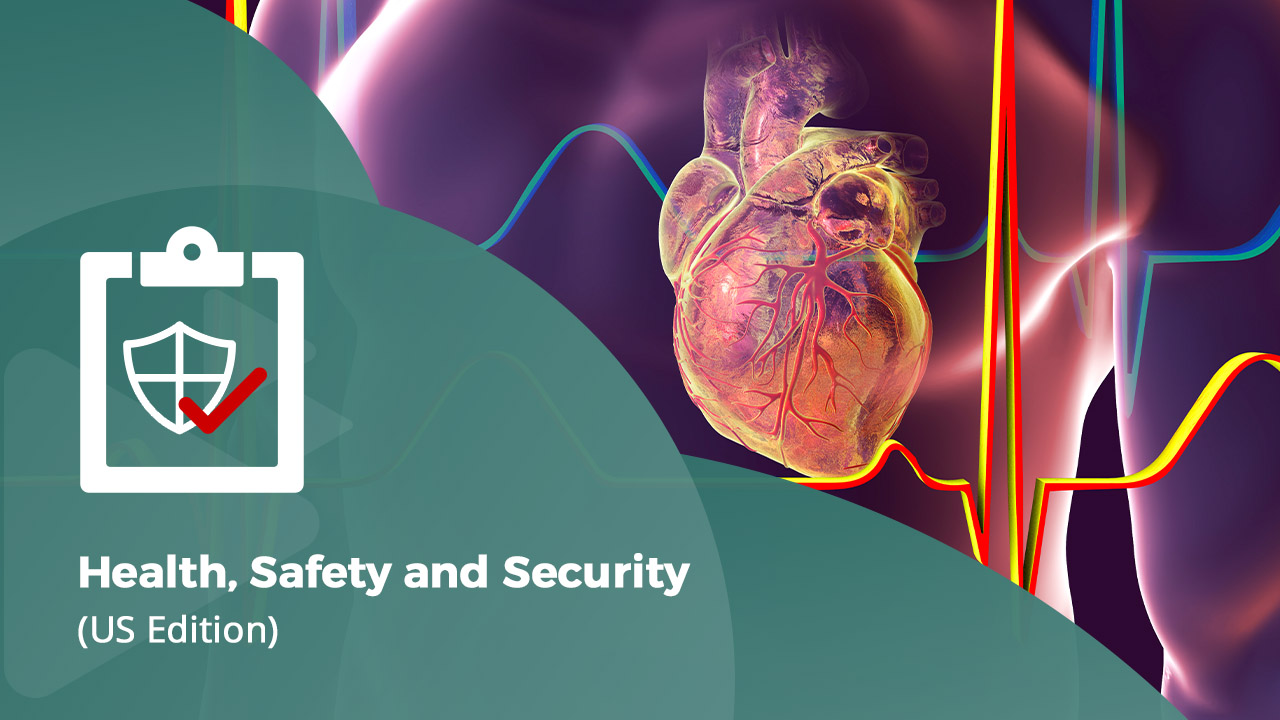
First Aid: CPR (Compression-Only)
Emergencies requiring cardiopulmonary resuscitation (CPR) can and do occur without warning. It is important that you know the basic emergency techniques for recognizing and treating failures of the respiratory system and heart. This course will focus on the application of compression-only CPR. This technique is recommended in specific situations but should not be viewed as a replacement for traditional CPR that includes the application of rescue breaths in addition to chest compressions. In this course, you will cover basic life support techniques used to perform compressions and basic life support techniques used to restore and maintain circulation. Note: This training should not be used as the primary basis for any CPR certification. It is intended to provide the learner with knowledge-based training only. This training should be accompanied by a performance-based component provided by a certified CPR instructor. The content in this course is designed to comply with the intent of the applicable regulatory requirements. The course was developed and reviewed with subject matter support provided by certified subject matter experts and industry professionals. Please note, the course materials and content were current with the laws and regulations at the time of the last expert review, however, they may not reflect the most current legal developments. Nothing herein, or in the course materials, shall be construed as professional advice as to any particular situation with respect to compliance with legal statutes or requirements.
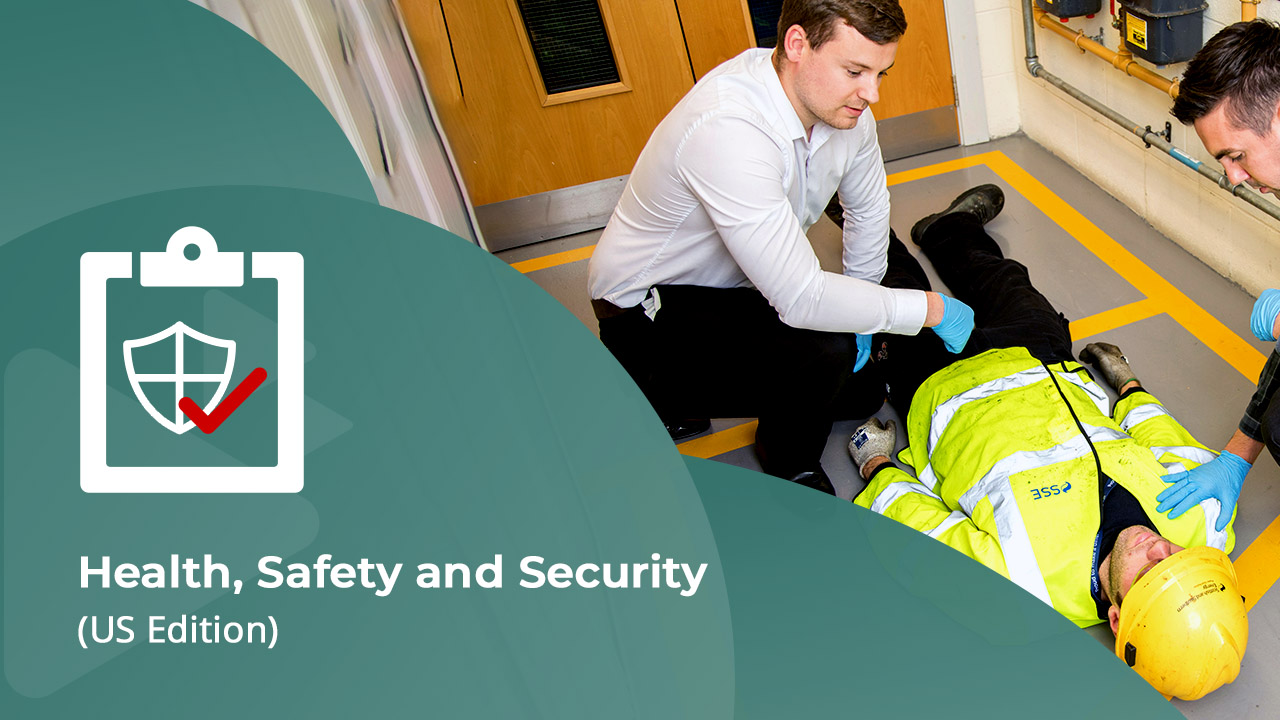
First Aid: Medical Emergencies
Medical emergencies can occur at any time but may be hidden because of injuries suffered in an accident. Additionally, an accident may trigger a medical emergency such as a heart attack, stroke, or seizure. This training will focus on the signs and symptoms of specific medical emergencies and their treatment. Being trained in first aid could mean the difference between life and death. Note: This training should not be used as the primary basis for any first aid certification. It is intended to provide the learner with knowledge-based training only. This training should be accompanied by a performance-based component provided by a certified first aid instructor. The content in this course is designed to comply with the intent of the applicable regulatory requirements. Learner objectives are to describe how to respond appropriately to a medical emergency and recall the signs, symptoms, and first aid treatments for medical emergencies including choking, poisoning, heart attacks, respiratory distress, strokes, seizures, and diabetic shock. The course was developed and reviewed with subject matter support provided by certified subject matter experts and industry professionals. Please note, the course materials and content were current with the laws and regulations at the time of the last expert review, however, they may not reflect the most current legal developments. Nothing herein, or in the course materials, shall be construed as professional advice as to any particular situation with respect to compliance with legal statutes or requirements.
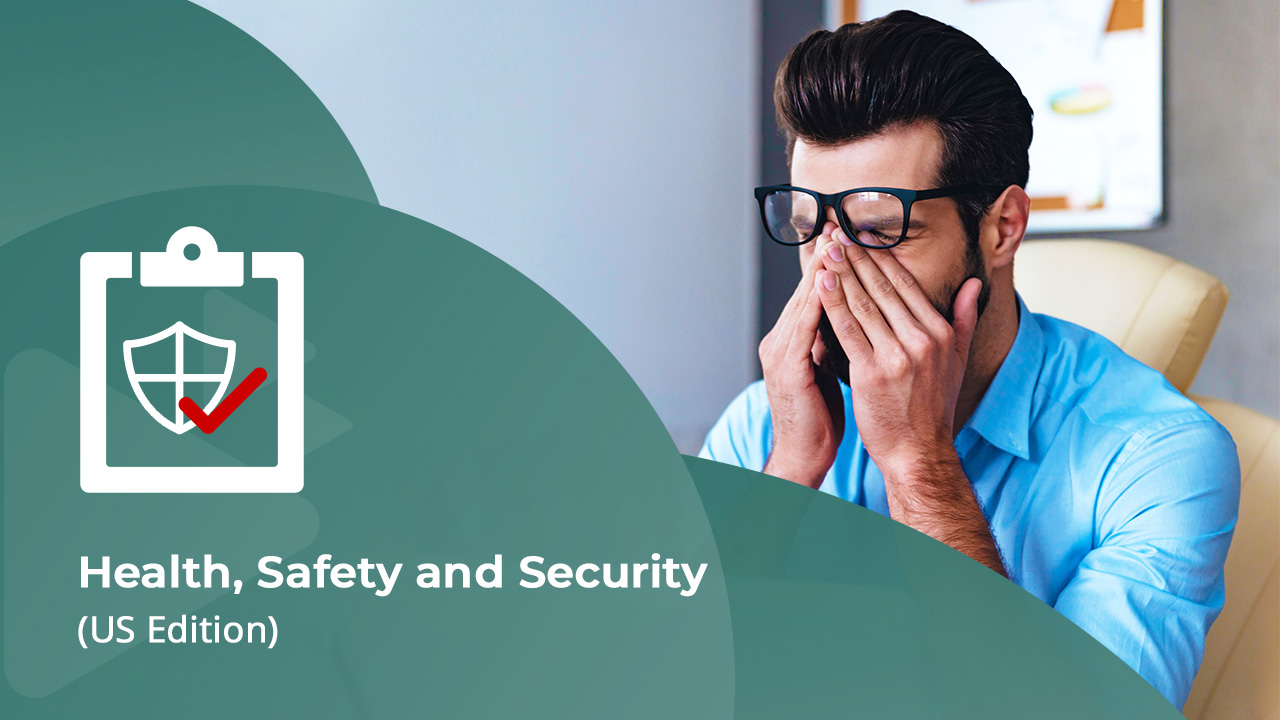
First Aid: Mental Health Awareness
The prevalence of mental illness, both in and outside the workplace, is increasing and the impacts are far reaching. Knowing how to help those around you or find help yourself is very important. You can play a vital part in helping a coworker, friend, or family member suffering from mental health through the use of first aid that aims to increase awareness of this illness. By understanding the signs and symptoms, and having knowledge of the options for appropriate treatment, you can assist others in coping with this condition. This course will teach you why good mental health is important, and give you a greater understanding of the signs and symptoms of mental illness, workplace triggers, and the ways in which you can provide the necessary support. The course was developed and reviewed with subject matter support provided by certified subject matter experts and industry professionals. Please note, the course materials and content were current with the laws and regulations at the time of the last expert review, however, they may not reflect the most current legal developments. Nothing herein, or in the course materials, shall be construed as professional advice as to any particular situation with respect to compliance with legal statutes or requirements.

Flagging Safety
Traffic control is a critical aspect of worker and driver safety on road construction projects. Flaggers need to be knowledgeable about the standards and guidelines established by the Federal Highway Administration's Manual on Uniform Traffic Control Devices. These include general guidelines for flagging, appropriate clothing requirements, and the standards for the signs, barriers and lights, and other devices used in your work. You also need to know where to position yourself for optimum safety, how to judge traffic speed and congestion, and how to regulate traffic accordingly. This course was developed with subject matter support provided by EnSafe Inc., a global professional services company focusing on engineering, environment, health and safety, and information technology. Please note, the course materials and content were current with the laws and regulations at the time of the last expert review, however, they may not reflect the most current legal developments. Nothing herein, or in the course materials, shall be construed as professional advice as to any particular situation with respect to compliance with legal statutes or requirements.
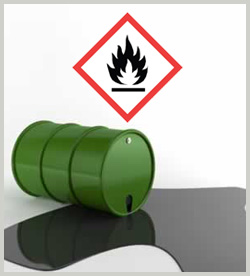
Flammable Liquids
This course is intended for employees who work in environments where flammable liquids are used and stored. It covers the OSHA and NFPA standards for safe handling of flammable liquids, as well as best practices for storing and working safely around flammable liquids. This course was developed with subject matter support provided by EnSafe Inc., a global professional services company focusing on engineering, environment, health and safety, and information technology. Please note, the course materials and content were current with the laws and regulations at the time of the last expert review, however, they may not reflect the most current legal developments. Nothing herein, or in the course materials, shall be construed as professional advice as to any particular situation with respect to compliance with legal statutes or requirements.

Flammable Liquids
This course is intended for employees who work in environments where flammable liquids are used and stored. It covers the OSHA and NFPA standards for safe handling of flammable liquids, as well as best practices for storing and working safely around flammable liquids. This course was developed with subject matter support provided by EnSafe Inc., a global professional services company focusing on engineering, environment, health and safety, and information technology. Please note, the course materials and content were current with the laws and regulations at the time of the last expert review, however, they may not reflect the most current legal developments. Nothing herein, or in the course materials, shall be construed as professional advice as to any particular situation with respect to compliance with legal statutes or requirements.

Forklift Operation 1: Safety Inspection and Maintenance
Forklifts are used in many industries, and operating them safely is paramount to the safety of both operators and fellow employees. In this course, you will learn when and how to inspect a forklift and what to do in the event an equipment problem is discovered. You will also learn the necessary precautions to take and procedures to follow when refueling gasoline, diesel, and propane-powered forklifts and when changing or recharging battery-powered units. You will also learn about the health hazards you may face as a result of working with or around forklifts. This course was developed with subject matter support provided by EnSafe Inc., a global professional services company focusing on engineering, environment, health and safety, and information technology. Please note, the course materials and content were current with the laws and regulations at the time of the last expert review, however, they may not reflect the most current legal developments. Nothing herein, or in the course materials, shall be construed as professional advice as to any particular situation with respect to compliance with legal statutes or requirements.
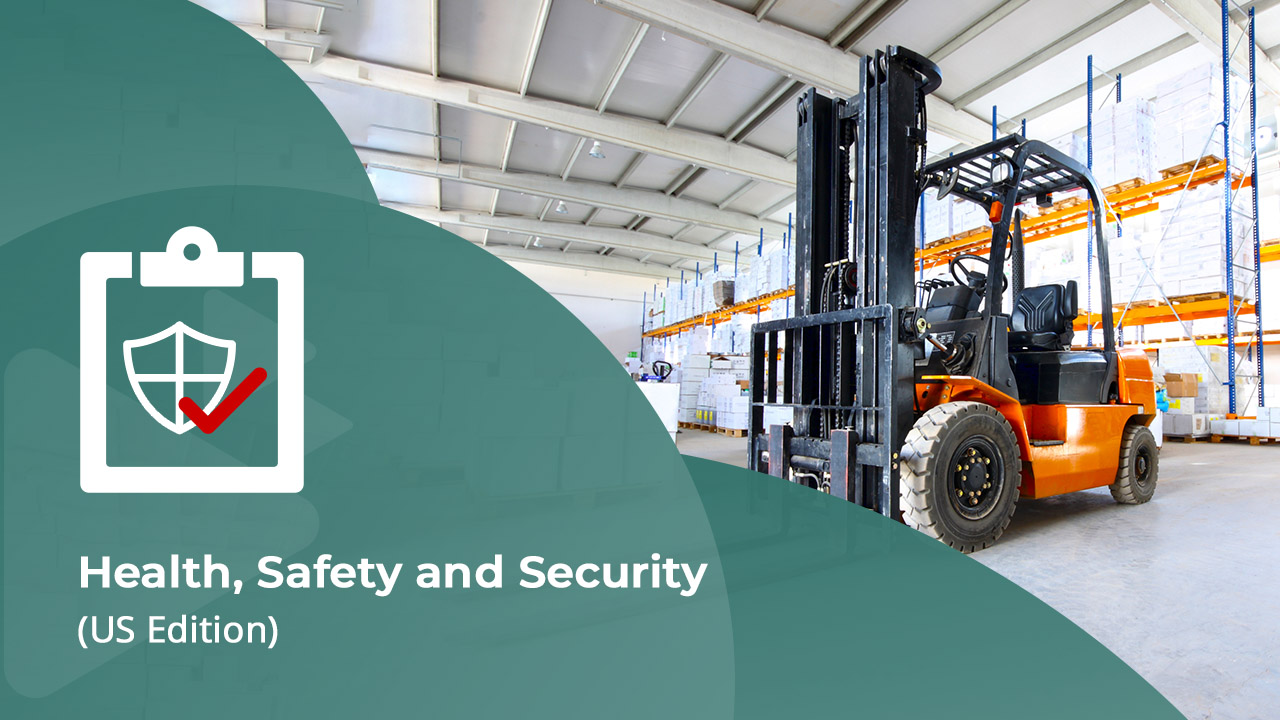
Forklift Operation 2: Stability and Capacity
Forklift operation is a specialized job that requires operators to receive specific training. For instance, before operating a forklift, operators need to be familiar with its capabilities and limitations. This course specifies where to find information on safe forklift operation, and explains what this information means. It shows how features of forklift design impact forklift stability and capacity, and emphasizes that operators must be trained to safely operate forklifts according to their specific designs. The course highlights the concept of the stability triangle to help operators understand specific stability concerns presented by different load types, and shows how to safely accommodate these loads to avoid tipovers and falling loads. Finally, the course uses a field calculation to estimate safe load capacity for situations when a load exceeds the forklift's stated capacity. Forklift Operation 2: Stability and Capacity was developed with subject matter support provided by EnSafe Inc., a global professional services company focusing on engineering, environment, health and safety, and information technology. Please note, the course materials and content were current with the laws and regulations at the time of the last expert review, however, they may not reflect the most current legal developments. Nothing herein, or in the course materials, shall be construed as professional advice as to any particular situation with respect to compliance with legal statutes or requirements.
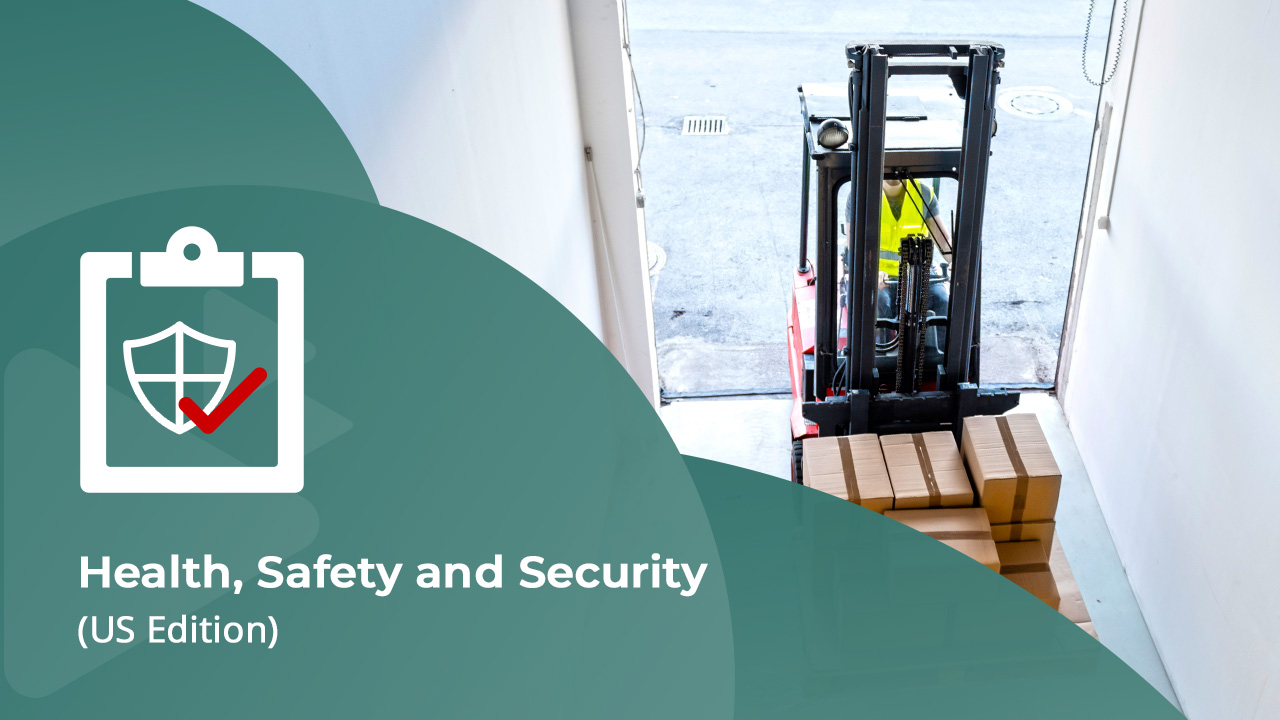
Forklift Operation 3: Load Handling
Forklifts are an important tool used in many industries, but they present many hazards to their operators. The good news is that many of these hazards can be avoided, if not eliminated, when operators are trained to properly operate and load a forklift. Some basic practices can be used to improve safe load handling – for example, driving the forks as far under the load as possible. More specific practices for approaching, lifting, and lowering a load can also help forklift operators improve load handing safety as they perform each of these actions. Armed with this knowledge, forklift operators will be better prepared to safely load the forklifts they operate. Forklift Operation 3: Load Handling was developed with subject matter support provided by EnSafe Inc., a global professional services company focusing on engineering, environment, health and safety, and information technology. Please note, the course materials and content were current with the laws and regulations at the time of the last expert review, however, they may not reflect the most current legal developments. Nothing herein, or in the course materials, shall be construed as professional advice as to any particular situation with respect to compliance with legal statutes or requirements.
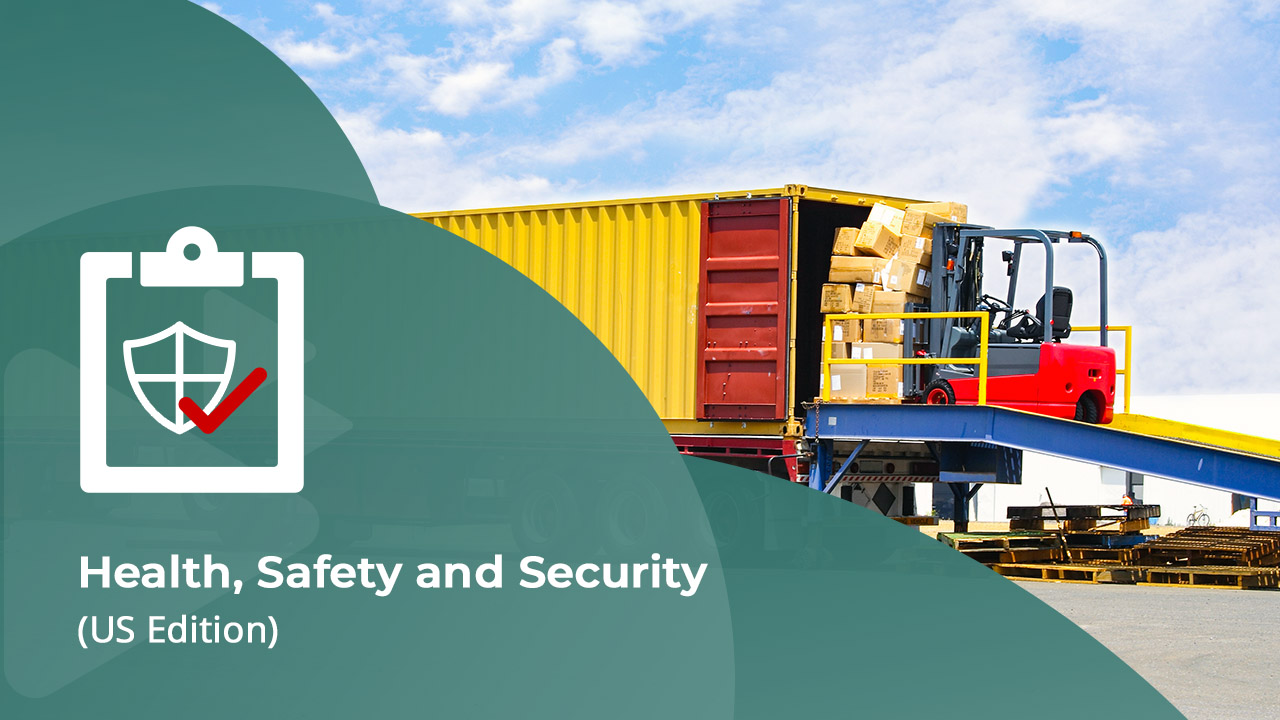
Forklift Operation 4: Traveling and Maneuvering
Safely traveling with and maneuvering a forklift, like most equipment, requires some special considerations. Forklift operators who know how to safely travel with and maneuver a forklift can protect themselves, pedestrians in the workplace, and the loads carried on forklifts. The specific guidelines provided in this course will protect operators from the hazards of traveling with and maneuvering a forklift. The course offers instructions on how to mount and dismount a forklift properly; on traveling with a load over uneven paths, inclines, and other potentially unstable surfaces; and on maneuvering safely when forklifts start, stop, and change direction. This course was developed with subject matter support provided by EnSafe Inc., a global professional services company focusing on engineering, environment, health and safety, and information technology. Please note, the course materials and content were current with the laws and regulations at the time of the last expert review, however, they may not reflect the most current legal developments. Nothing herein, or in the course materials, shall be construed as professional advice as to any particular situation with respect to compliance with legal statutes or requirements.

Forklift Safety Awareness 2.0
The purpose of this training is to help you become a qualified forklift operator, one who has the skills and knowledge to operate a lift truck in a safe and proper manner. The content in this course is designed to comply with the intent of the applicable regulatory requirements. Learner objectives are to recognize general engineering and capacity principles associated with forklift safety; identify factors that lead to forklifts tipping over; distinguish between safe and unsafe forklift operations; describe the differences between driving an automobile and a forklift; identify general loading and unloading principles associated with forklift safety; specify safe refueling and recharging procedures; and list the steps to perform in walk-around and sit-down inspections. This course was developed with subject matter support provided by EnSafe Inc., a global professional services company focusing on engineering, environment, health and safety, and information technology. Please note, the course materials and content were current with the laws and regulations at the time of the last expert review, however, they may not reflect the most current legal developments. Nothing herein, or in the course materials, shall be construed as professional advice as to any particular situation with respect to compliance with legal statutes or requirements.

Global Safety Principles: Aerial Work Platforms
Aerial work platforms allow work personnel to reach elevated areas that are inaccessible by traditional means such as ladders or scaffolding. But like any heavy equipment, aerial work platforms can be very dangerous if used without due care and attention. This course was developed with subject matter support provided by New Level Safety Limited, a professional services company specializing in corporate health and safety management. Please note, the course materials and content were current with the laws and regulations at the time of the last expert review, however, they may not reflect the most current legal developments. Nothing herein, or in the course materials, shall be construed as professional advice as to any particular situation with respect to compliance with legal statutes or requirements.

Global Safety Principles: Back Safety and Injury Prevention 2.0
This course is designed to raise awareness of workplace hazards that can cause back injuries and to equip employees to protect themselves from preventable back injuries. It covers job-specific hazards that contribute to preventable back injuries, the characteristics of healthy posture, and specific ways to minimize the risk of back injuries. It also covers workplace controls, including engineering, administrative, and work practice controls, that can help minimize back injuries. The content in this course is designed to comply with the intent of the applicable regulatory requirements. This course was developed with subject matter support provided by New Level Safety Limited, a professional services company specializing in corporate health and safety management. Please note, the course materials and content were current with the laws and regulations at the time of the last expert review, however, they may not reflect the most current legal developments. Nothing herein, or in the course materials, shall be construed as professional advice as to any particular situation with respect to compliance with legal statutes or requirements.

Global Safety Principles: Bloodborne Pathogen Awareness 2.0
This course will provide you with a basic understanding of bloodborne pathogens, common modes of transmission, methods of prevention, and what to do if an exposure occurs. Information presented will help minimize serious health risks to persons who may have personal exposure to blood and other potentially infectious materials in the workplace. The content in this course is designed to comply with the intent of the applicable regulatory requirements. The course was developed and reviewed with subject matter support provided by New Level Safety, a global professional health and safety services company. Please note, the course materials and content were current with the laws and regulations at the time of the last expert review, however, they may not reflect the most current legal developments. Nothing herein, or in the course materials, shall be construed as professional advice as to any particular situation with respect to compliance with legal statutes or requirements.

Global Safety Principles: Fall Prevention
Falls from heights are one of the leading causes of serious injuries and death in the workplace. In this course, you'll learn what types of jobs and tasks can expose you to injury. You'll be introduced to the basic responsibilities of employees who work at height, and to the requirements and responsibilities of employers and those who control the work of others to prevent falls in the workplace. This course was developed with subject matter support provided by New Level Safety Limited, a professional services company specializing in corporate health and safety management. Please note, the course materials and content were current with the laws and regulations at the time of the last expert review, however, they may not reflect the most current legal developments. Nothing herein, or in the course materials, shall be construed as professional advice as to any particular situation with respect to compliance with legal statutes or requirements.

Global Safety Principles: Fire Safety and Prevention 2.0
Every year, workplace fires and explosions kill and injure people, and destroy many businesses. In this course, you'll gain an understanding of the elements required for a fire to start and learn ways to prevent fires in the workplace. You'll learn how to respond, including how to evacuate the premises, if there's a fire in your workplace. You'll also learn how to select and use a fire extinguisher. This course was developed with subject matter support provided by New Level Safety Limited, a professional services company specializing in corporate health and safety management. Please note, the course materials and content were current with the laws and regulations at the time of the last expert review, however, they may not reflect the most current legal developments. Nothing herein, or in the course materials, shall be construed as professional advice as to any particular situation with respect to compliance with legal statutes or requirements.

Global Safety Principles: Forklift Safety Awareness 2.0
The purpose of this training is to help you become a qualified forklift operator, one who has the skills and knowledge to operate a lift truck in a safe and proper manner. The content in this course is designed to comply with the intent of the applicable regulatory requirements. Learner objectives are to recognize general engineering and capacity principles associated with forklift safety; identify factors that lead to forklifts tipping over; distinguish between safe and unsafe forklift operations; describe the differences between driving an automobile and a forklift; identify general loading and unloading principles associated with forklift safety; specify safe refuelling and recharging procedures; and list the steps to perform in walk-around and sit-down inspections. This course was developed with subject matter support provided by New Level Safety Limited, a professional services company specializing in corporate health and safety management. Please note, the course materials and content were current with the laws and regulations at the time of the last expert review, however, they may not reflect the most current legal developments. Nothing herein, or in the course materials, shall be construed as professional advice as to any particular situation with respect to compliance with legal statutes or requirements.

Global Safety Principles: Hand and Power Tool Safety
Millions of workers in a variety of industries use handheld tools every day. While hand and power tools are useful to get the job done, they can turn a normal work day into a tragedy. In this course, you'll learn about the general basic safety rules when using tools. You'll also learn how to identify hazards and safety controls associated with hand tools. Then you'll be introduced to general safety guidelines as well as specific precautions for using power tools. This course was developed with subject matter support provided by New Level Safety, a global professional services company focusing on health and safety. Please note, the course materials and content were current with the laws and regulations at the time of the last expert review, however, they may not reflect the most current legal developments. Nothing herein, or in the course materials, shall be construed as professional advice as to any particular situation with respect to compliance with legal statutes or requirements.
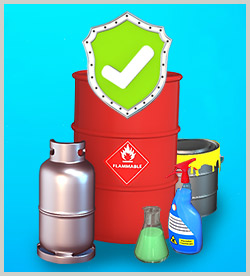
Global Safety Principles: Hazardous Substances in the Workplace 2.0
This course will acquaint you with the precautions that both you and your employer must take in order to safely use, handle, and store hazardous chemicals in the workplace. The content in this course is designed to comply with the intent of the applicable regulatory requirements. The course was developed and reviewed with subject matter support provided by New Level Safety, a global professional health and safety services company. Please note, the course materials and content were current with the laws and regulations at the time of the last expert review, however, they may not reflect the most current legal developments. Nothing herein, or in the course materials, shall be construed as professional advice as to any particular situation with respect to compliance with legal statutes or requirements.

Global Safety Principles: Hearing Conservation 2.0
Millions of workers have been affected by hearing loss caused by their jobs. In this course, you will learn about ways to help you prevent noise-induced hearing loss. You'll also learn about the purpose and components of a hearing conservation program, including the proper fitting, use, and care of hearing protectors. The content in this course is designed to comply with the intent of the applicable regulatory requirements. This course was developed with subject matter support provided by New Level Safety Limited, a professional services company specializing in corporate health and safety management. Please note, the course materials and content were current with the laws and regulations at the time of the last expert review, however, they may not reflect the most current legal developments. Nothing herein, or in the course materials, shall be construed as professional advice as to any particular situation with respect to compliance with legal statutes or requirements.

Global Safety Principles: Heat Stress Recognition and Prevention
Exposure to high temperatures can be life-threatening. This course will discuss the effects of heat on your body, outline the risk factors for heat-related illnesses, and describe the associated treatments for each. This training will also explain several control measure techniques and safe work practices that you can use to prevent heat-related stresses. The content in this course is designed to comply with the intent of the applicable regulatory requirements. This course was developed with subject matter support provided by New Level Safety Limited, a professional services company specializing in corporate health and safety management. Please note, the course materials and content were current with the laws and regulations at the time of the last expert review, however, they may not reflect the most current legal developments. Nothing herein, or in the course materials, shall be construed as professional advice as to any particular situation with respect to compliance with legal statutes or requirements.

Global Safety Principles: Indoor Hoisting and Rigging
This course is designed to educate workers on the significant safety issues to be considered while moving large, heavy loads associated with today's manufacturing and construction industries. The content in this course is designed to comply with the intent of the applicable regulatory requirements. This course was developed with subject matter support provided by New Level Safety Limited, a professional services company specializing in corporate health and safety management. Please note, the course materials and content were current with the laws and regulations at the time of the last expert review, however, they may not reflect the most current legal developments. Nothing herein, or in the course materials, shall be construed as professional advice as to any particular situation with respect to compliance with legal statutes or requirements.

Global Safety Principles: Industrial Ergonomics
This course is designed to provide the basic information needed to recognize and report musculoskeletal disorder (MSD) signs, symptoms, and risk factors. It addresses the key components of an ergonomics program and also provides information to assist both employees and employers in minimizing the risk of developing work-related MSDs. This course applies to employees and employers in industrial work settings. The content in this course is designed to comply with the intent of the applicable regulatory requirements. This course was developed with subject matter support provided by New Level Safety Limited, a professional services company specializing in corporate health and safety management. Please note, the course materials and content were current with the laws and regulations at the time of the last expert review, however, they may not reflect the most current legal developments. Nothing herein, or in the course materials, shall be construed as professional advice as to any particular situation with respect to compliance with legal statutes or requirements
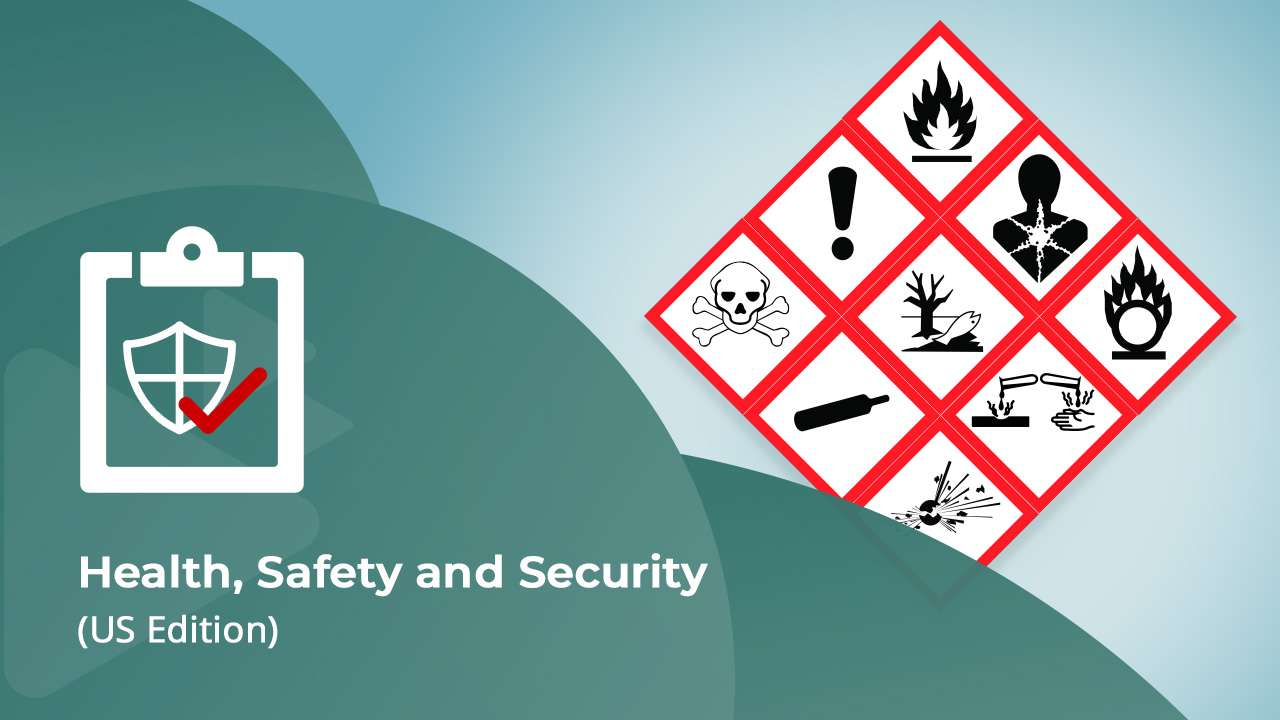
Globally Harmonized System of Classification and Labeling of Chemicals (GHS)
GHS, an acronym for Globally Harmonized System of Classification and Labeling of Chemicals, is a system aiming to standardize and harmonize the classification and labeling of chemicals. Although many countries follow regulatory systems for the safe handling and transport of chemicals through labels and safety data sheets, there is no standard approach. So while the formats are similar in different countries, the differences are significant enough to warrant different labeling and safety data sheets for the same product in different markets. With the gradual implementation of the GHS worldwide, countries have consistent and appropriate information on the chemicals they import or produce, and the infrastructure to control chemical exposures and protect people and the environment can be established in a comprehensive manner. This course introduces the GHS and explains how hazards are classified and communicated through the use of labels and safety data sheets. The course was developed and reviewed with subject matter support provided by certified subject matter experts and industry professionals. Please note, the course materials and content were current with the laws and regulations at the time of the last expert review, however, they may not reflect the most current legal developments. Nothing herein, or in the course materials, shall be construed as professional advice as to any particular situation with respect to compliance with legal statutes or requirements.

Hand and Power Tool Safety
A variety of handheld tools are used in the workplace. This course will provide an understanding of the potential hazards associated with the use of hand tools and power tools, as well as the safety precautions required to prevent those hazards from occurring. Power tool hazards are addressed in the course by relating them to the power source used in them: pneumatic, liquid fuel, hydraulic, or powder-actuated. The content in this course is designed to comply with the intent of the applicable regulatory requirements. The learning objectives of the course are to identify general power tool safety precautions; define the purpose and correct usage of guards; specify which tools are equipped with safety switches; identify specific hazards and control measures related to the use of electric tools; recognize specific hazards and control measures related to the use of power grinders; understand specific hazards and control measures related to the use of pneumatic tools; identify specific hazards and control measures related to the use of powder-actuated tools; and identify specific hazards and control measures related to the use of hydraulic jacks. This course was developed with subject matter support provided by EnSafe Inc., a global professional services company focusing on engineering, environment, health and safety, and information technology.
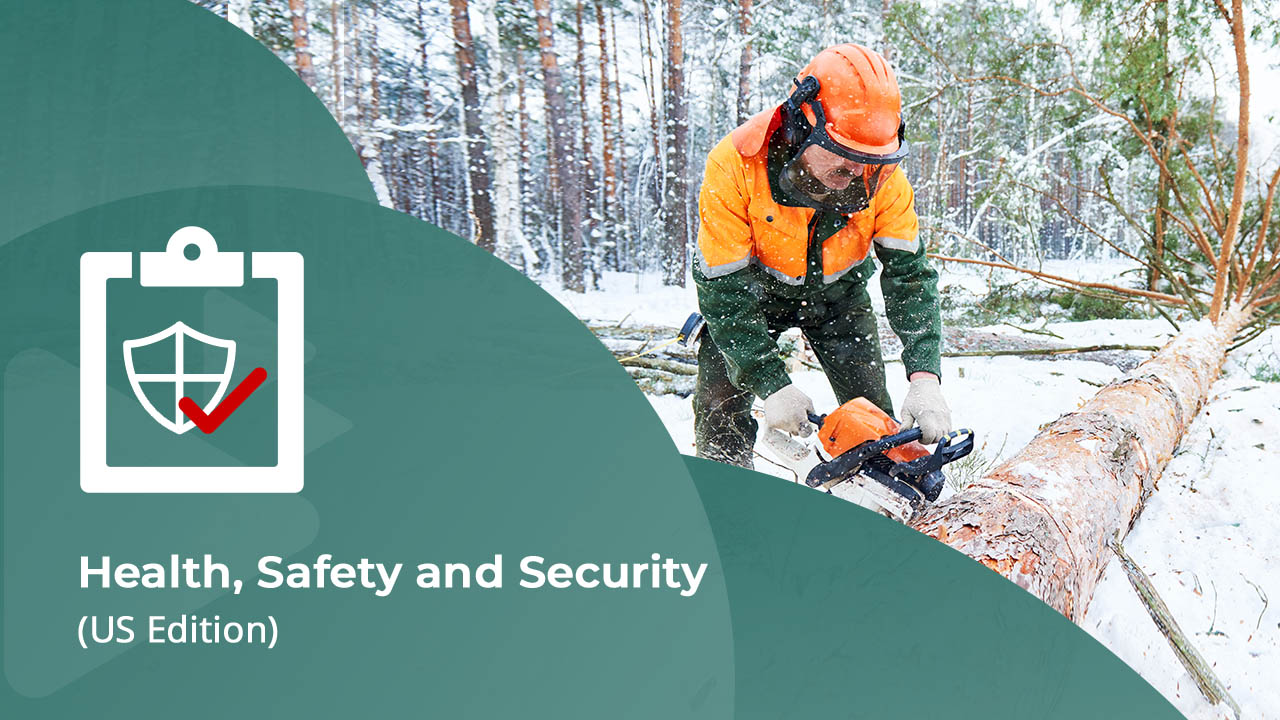
Hazards to Outdoor Workers
Not every job takes place in a comfortable climate-controlled office. For many people, working in the outdoors is a large part of their work. From agriculture to forestry to ecology to construction, outdoor work plays a major role in the nation's economy. The Occupational Safety and Health Administration, or OSHA, requires that employees be trained to recognize and avoid workplace hazards, including those that occur outdoors. This course will introduce you to the physical and biological hazards of working outdoors. You'll learn about physical hazards such as noise exposure and risk of injury from traffic and heavy equipment. You'll discover the effects of extreme heat and cold on outdoor workers, and controls for preventing damage from extreme temperatures, and about the different types of adverse weather hazards experienced by outdoor workers. You'll also learn about biological hazards including causes and prevention of vector-borne diseases, and how to identify and avoid poisonous plants and wildlife hazards. The course was developed and reviewed with subject matter support provided by certified subject matter experts and industry professionals. Please note, the course materials and content were current with the laws and regulations at the time of the last expert review, however, they may not reflect the most current legal developments. Nothing herein, or in the course materials, shall be construed as professional advice as to any particular situation with respect to compliance with legal statutes or requirements.

Heat Stress Recognition and Prevention
Each year, more people in the United States die from extreme heat than from hurricanes, lightning, tornados, floods, and earthquakes combined. This course will discuss the effects of heat on your body, outline the risk factors for heat-related illnesses, and describe the associated treatments for each. This training will also explain several control measure techniques and safe work practices that you can use to prevent heat-related stresses. The content in this course is designed to comply with the intent of the applicable regulatory requirements. This course was developed with subject matter support provided by Winn Forensics, LLC, a professional services company focusing on corporate, business and personal safety training as well as consulting on occupational injury matters. Please note, the course materials and content were current with the laws and regulations at the time of the last expert review, however, they may not reflect the most current legal developments. Nothing herein, or in the course materials, shall be construed as professional advice as to any particular situation with respect to compliance with legal statutes or requirements.
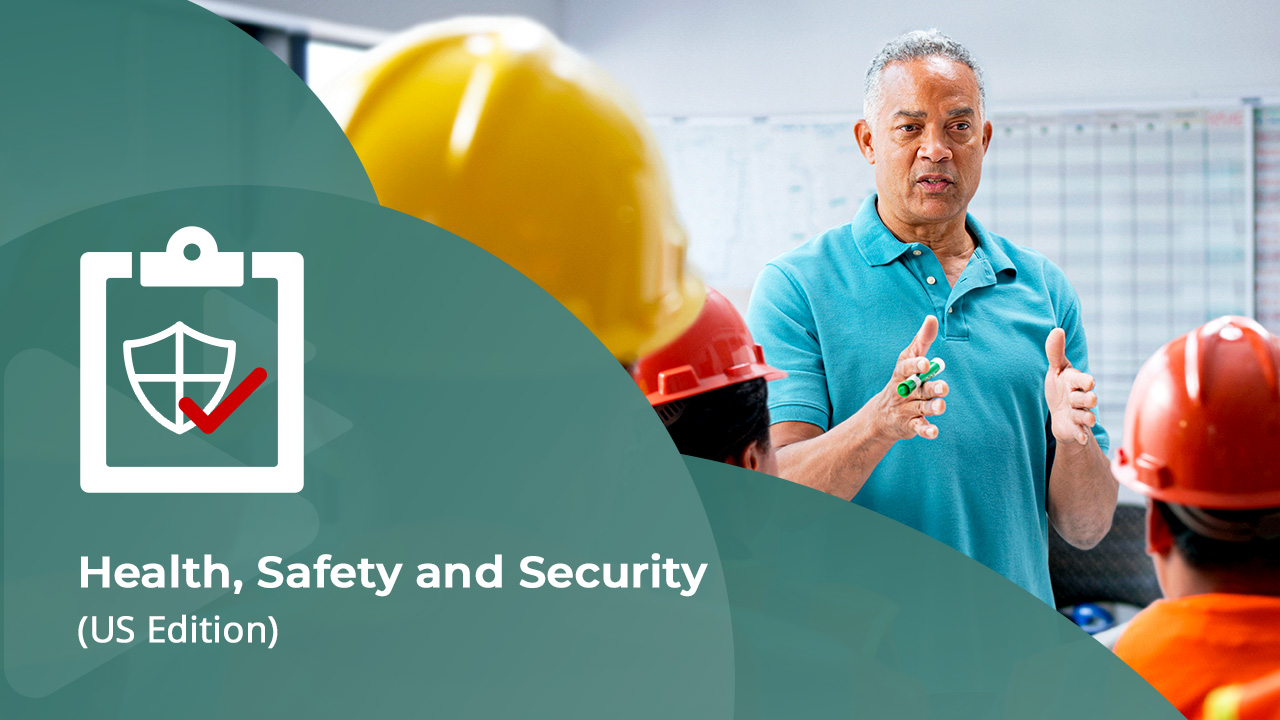
Injury and Illness Prevention Program
In the years since the introduction of the OSH Act, employers in the United States have seen a significant drop in the number of workplace injuries and deaths. However, the number of employee injuries and deaths remains unacceptable. In an effort to further encourage prevention and bring these numbers down, OSHA is presently developing a new rule that requires employers to actively manage employee safety by implementing an injury and illness prevention program. This rule forms part of OSHA's long-term regulatory agenda and, while no date has been set for it to be passed into law, implementing an injury and illness prevention program will help your organization prevent workplace injuries, illnesses, and fatalities, thereby protecting your employees and reducing the costs of responding to these incidences. This course was developed with subject matter support provided by EnSafe Inc., a global professional services company focusing on engineering, environment, health and safety, and information technology. Please note, the course materials and content were current with the laws and regulations at the time of the last expert review, however, they may not reflect the most current legal developments. Nothing herein, or in the course materials, shall be construed as professional advice as to any particular situation with respect to compliance with legal statutes or requirements.
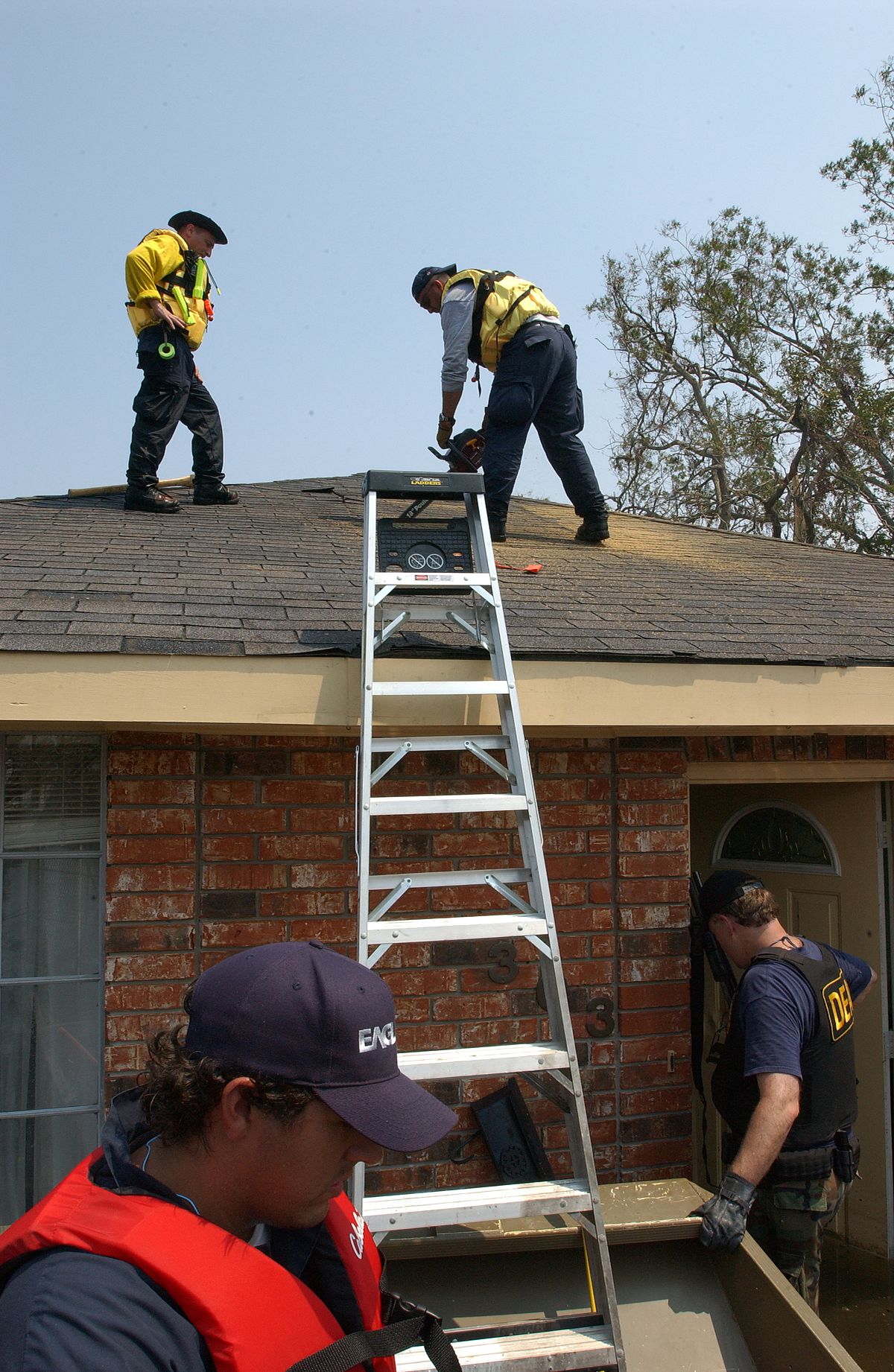
Ladder Safety
This course provides information about the safe use of portable and fixed ladders. The intent of the course is to provide the learner with information about the hazards involved with the use of ladders and control methods that will greatly reduce these hazards. The content in this course is designed to comply with the intent of the applicable regulatory requirements. Learner objectives are to identify hazards related to the general use of ladders and how to control these hazards, describe the types of portable ladders and their use, capacities, and safety considerations, describe the specific use, capacities, and safety features of fixed ladders, and specify proper guidelines for ladder care and maintenance. This course was developed with subject matter support provided by EnSafe Inc., a global professional services company focusing on engineering, environment, health and safety, and information technology. This course was reviewed and updated for the November 2016 OSHA final rule updating walking-working surfaces standards and personal fall protection systems requirements.

PPE Personal Protective Equipment
This course covers types, selection, maintenance, and care of personal protective equipment in the workplace. The types of personal protective equipment (PPE) covered in the course include: hard hat, respiratory protection, hearing protection, and body protection. The content in this course is designed to comply with the intent of the applicable regulatory requirements. Learner objectives are to: describe the proper use of the various types of PPE commonly found in general industry, identify the level of protection that a user is provided when wearing specific types of PPE, and discuss the general maintenance and care techniques used for various types of PPE.

Respiratory Protection 2.0
This course covers information relating to respiratory hazards, protection mechanisms, and safe work practices. It also includes information on how to use respiratory protection for protection from hazardous airborne contaminants in the work environment. This course does not include the types of respirators and other protective considerations required when working with ionizing radiation. Learner objectives are to recognize why respiratory protection is necessary; distinguish between employee and employer responsibilities for respiratory protection; identify the nature, extent, and effects of respiratory hazards to which you may be exposed; specify the operation, limitations, and capabilities of respirators; identify respirator selection procedures and practices; specify proper respirator use and inspection practices; recognize proper respirator maintenance, cleaning, and storage practices; and identify respirator malfunction and follow-up procedures. The course was developed and reviewed with subject matter support provided by certified subject matter experts and industry professionals. Please note, the course materials and content were current with the laws and regulations at the time of the last expert review, however, they may not reflect the most current legal developments. Nothing herein, or in the course materials, shall be construed as professional advice as to any particular situation with respect to compliance with legal statutes or requirements.
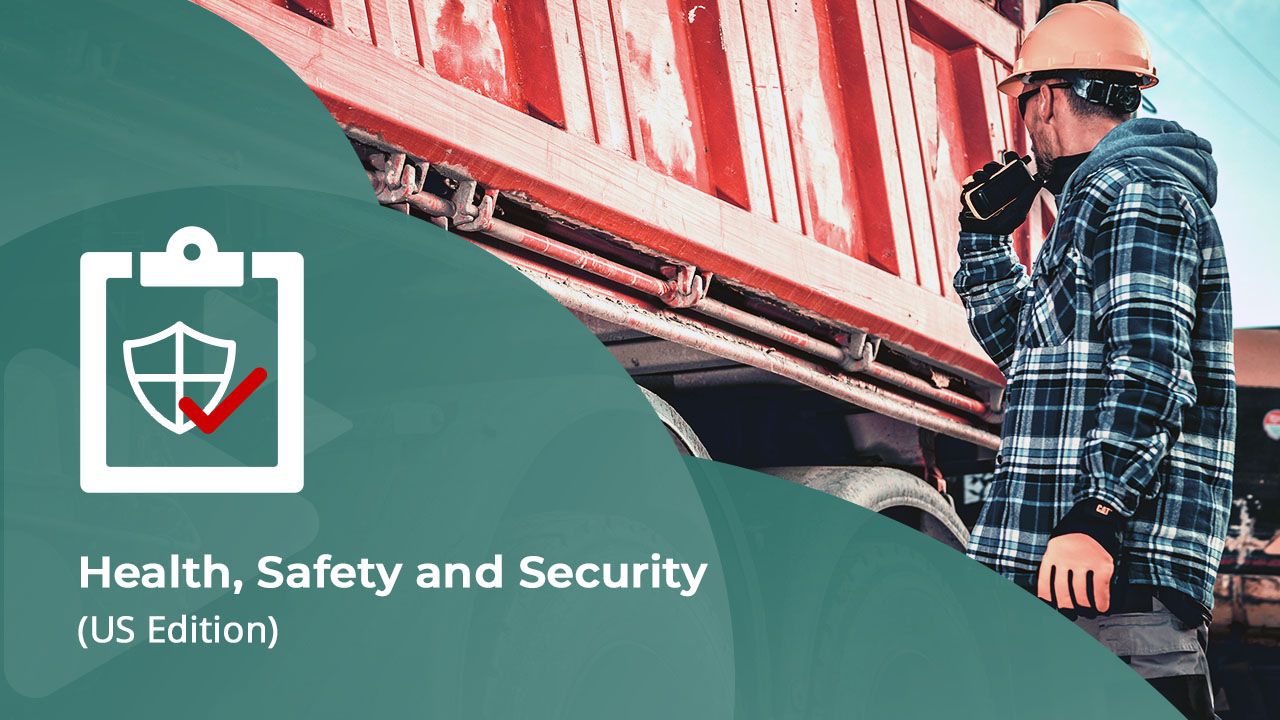
Safe Vehicle Backing
Backing a vehicle can be the most hazardous driving you do all day – one in four accidents involves backing. As a responsible driver it is important to choose the safest method to back your vehicle and to understand that your choices impact others. In this course, you will learn about the impacts of backing accidents, their common causes, and how to minimize risks of collision when backing vehicles, including delivery vans. This course was developed with subject matter support provided by EnSafe Inc., a global professional services company focusing on engineering, environment, health and safety, and information technology. Please note, the course materials and content were current with the laws and regulations at the time of the last expert review, however, they may not reflect the most current legal developments. Nothing herein, or in the course materials, shall be construed as professional advice as to any particular situation with respect to compliance with legal statutes or requirements.

Safe Work Practices
This course provides information about day-to-day safe work practices and working safely with equipment and hazardous materials. The intent of the course is to enable the learner to identify those practices that must be followed, that will either eliminate or minimize the potential for injury from workplace hazards. The content in this course is designed to comply with the intent of the applicable regulatory requirements. The course was developed and reviewed with subject matter support provided by certified subject matter experts and industry professionals. Please note, the course materials and content were current with the laws and regulations at the time of the last expert review, however, they may not reflect the most current legal developments. Nothing herein, or in the course materials, shall be construed as professional advice as to any particular situation with respect to compliance with legal statutes or requirements.
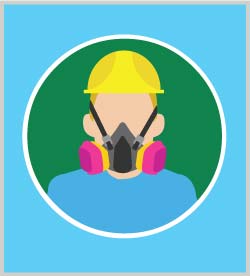
Silica in Construction
Silica exposure is a threat for approximately 2.3 million US workers and is especially dangerous for more than 100,000 workers who make up the nation's stonecutters, foundry workers, sandblasters, and rock drillers. Crystalline silica is classified as a human lung carcinogen and is known to cause respiratory diseases, including an especially damaging one – silicosis. Effective measures are available to protect workers from exposure and to reduce and prevent its potentially devastating health effects. It's important that employees recognize the potential hazards of silica exposure so they can protect themselves. This course covers hazard recognition, potential health threats, exposure prevention, and control measures and focuses on construction-specific requirements as promulgated in 29 CFR 1926.1153. This course was developed with subject matter support provided by EnSafe Inc., a global professional services company focusing on engineering, environment, health and safety, and information technology. Please note, the course materials and content were current with the laws and regulations at the time of the last expert review, however, they may not reflect the most current legal developments. Nothing herein, or in the course materials, shall be construed as professional advice as to any particular situation with respect to compliance with legal statutes or requirements.
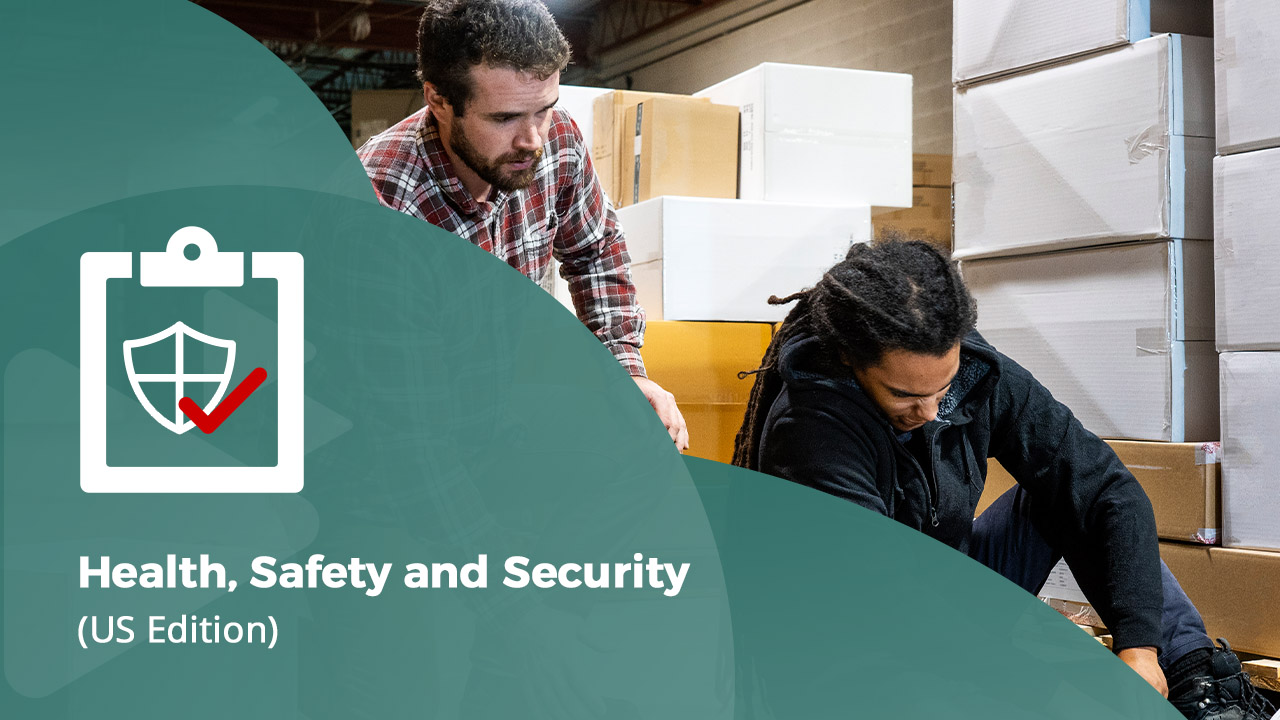
Sprains and Strains
Each year, thousands of workers are injured in the workplace, costing employers billions of dollars in hidden costs. The most common of these injuries are sprains and strains. Most workplace injuries are caused by manual tasks, such as lifting or carrying loads, working in fixed positions, repetitive tasks, or using heavy, vibrating tools. Manual tasks, if not performed properly, are a leading cause of serious worker injuries such as sprains and strains, as well as permanent spinal damage, and often can debilitate workers who may need to take leave from work for extended periods. Workplace injuries can be costly to both employees and employers. In addition to being injured, employees may lose time from work, which could result in loss of or less income. And employers may experience lower productivity due to the need to replace the injured worker and train replacements. The course is designed to help you better understand sprains and strains so you will be more aware of what you are doing and how you are doing it, in an effort to prevent this type of injury from happening to you. The course was developed and reviewed with subject matter support provided by certified subject matter experts and industry professionals. Please note, the course materials and content were current with the laws and regulations at the time of the last expert review, however, they may not reflect the most current legal developments. Nothing herein, or in the course materials, shall be construed as professional advice as to any particular situation with respect to compliance with legal statutes or requirements.
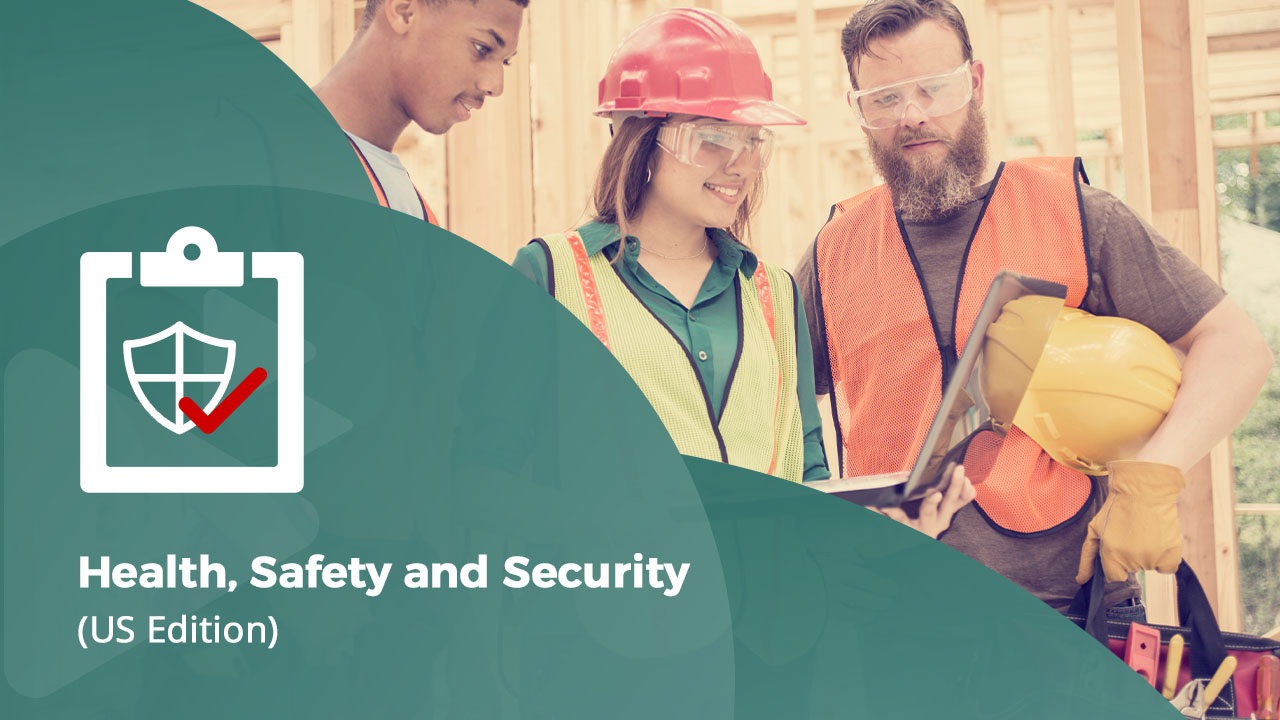
Behavior-based Safety for Supervisors
This course is intended to provide supervisors with an overview of the concepts of behavior-based safety. This training will aid those supervisors who have not used these techniques in their day-to-day duties and responsibilities in the past. The content in this course is designed to comply with the intent of the applicable regulatory requirements. This course was developed with subject matter support provided by Winn Forensics, LLC, a professional services company focusing on corporate, business and personal safety training as well as consulting on occupational injury matters. Please note, the course materials and content were current with the laws and regulations at the time of the last expert review, however, they may not reflect the most current legal developments. Nothing herein, or in the course materials, shall be construed as professional advice as to any particular situation with respect to compliance with legal statutes or requirements.
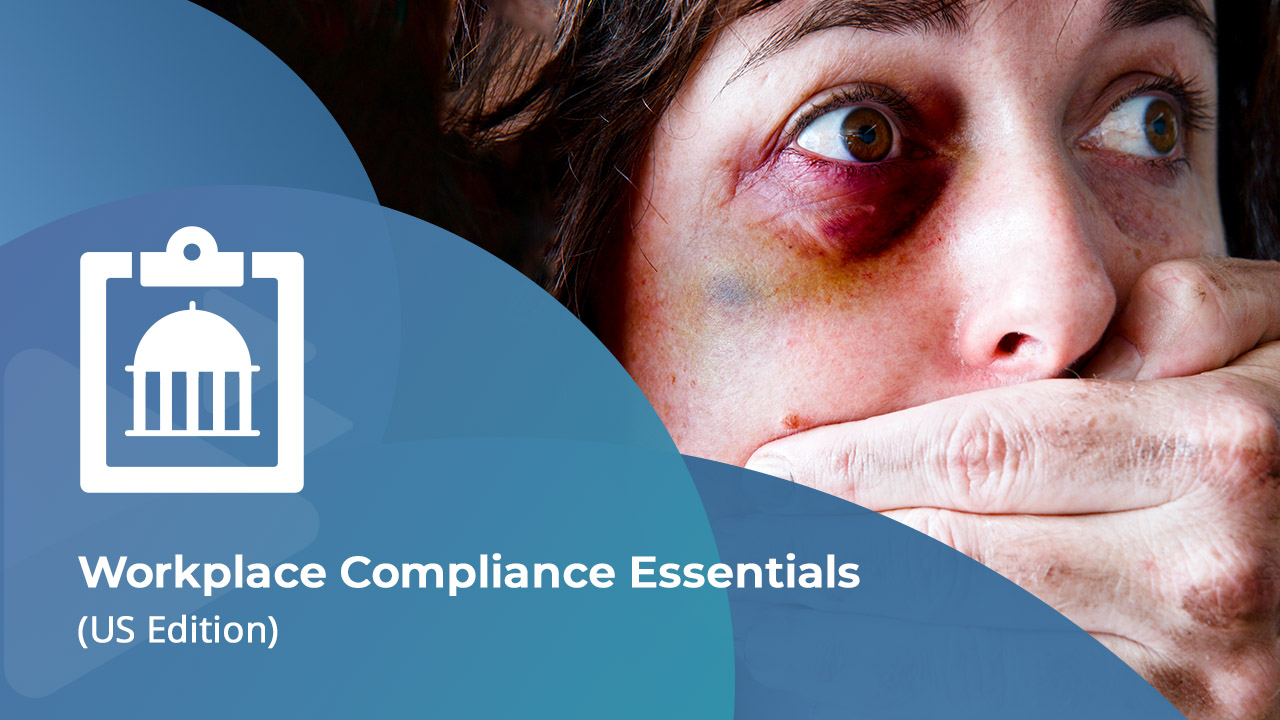
Human Trafficking Awareness
Human trafficking - the act of exploiting a person through force, fraud or coercion - is a worldwide problem. Due to its complex nature, and the vulnerable populations it targets, it often goes unnoticed. Many of its victims don't even realize they are being exploited, often feeling shame and blaming themselves for their situation, which makes the discovery of this illegal activity very challenging. Being aware of the signs that human trafficking activity could be taking place in your community or place of employment is a starting point for dealing with this criminal act. This course addresses the mandatory training requirements for hospitality employers in California, Connecticut, and Minnesota, but is suitable for raising awareness of human trafficking in any location or workplace. These course materials and content are for informational purposes only and do not constitute legal advice. Nothing herein, or in the course materials, shall be construed as professional advice as to any particular situation or constitute a legal opinion with respect to compliance with any federal, state, or local laws. Transmission of the information is not intended to create, and receipt does not constitute, an attorney-client relationship. Readers should not act upon this information without seeking professional counsel. The information contained herein is provided only as general information that may or may not reflect the most current legal developments. This information is not provided in the course of an attorney-client relationship and is not intended to constitute legal advice or to substitute for obtaining legal advice from an attorney licensed in your state.

Global Safety Principles: Access to Employee Medical and Exposure Records
This course contains information regarding employee rights of access to medical and exposure records in order to promote the recognition of workplace hazards and subsequently reduce occupational disease. The content in this course is designed to comply with the intent of the applicable regulatory requirements. In this course, you'll learn about the purpose for maintaining medical and exposure records, employer responsibilities in providing employee access to medical and exposure records, the characteristics of and terms related to medical and exposure records, and the requirements and policies associated with access to medical and exposure records. This course was developed with subject matter support provided by New Level Safety Limited, a professional services company specializing in corporate health and safety management. Please note, the course materials and content were current with the laws and regulations at the time of the last expert review, however, they may not reflect the most current legal developments. Nothing herein, or in the course materials, shall be construed as professional advice as to any particular situation with respect to compliance with legal statutes or requirements.

Global Internet, Social Media, and Electronic Communication
Regular use of the Internet and electronic communications is probably a way of life for you, as technology makes it easier to communicate with coworkers, clients, family, and friends. The near constant availability of e-mail, social and professional networking web sites, smartphones, and other tools has blurred the line between work and home to the point where your online activities at home may have an impact on your company and your employment. Most employers encourage staff to use the internet, electronic communication, and social media for business purposes, and possibly even allow a certain level of personal use in the workplace as well. For this reason, it's important to be familiar with your company's policy on these resources. This course provides background information to be considered in light of your own company's policies. You will learn about some generally accepted best practices for protecting your own and your company's best interests while using e-mail, instant messaging, and text messaging, as well as social networking sites and blogs. This course was developed with subject matter support provided by Ince Gordon Dadds LLP. Please note, however, that the course materials and content are for informational purposes only and do not constitute legal advice and may or may not reflect the most current legal developments. Nothing herein, or in the course materials, shall be construed as professional advice as to any particular situation or constitute a legal opinion with respect to compliance with legal statutes or statutory instruments. Ince Gordon Dadds LLP accepts no responsibility for their contents and the reliance on the contents is prohibited and at the user’s risk. Transmission of the information is not intended to create, and receipt does not constitute, a solicitor-client relationship. Readers should not act upon this information without seeking independent legal advice.

Global Human Trafficking Awareness
Human trafficking - the act of exploiting a person through force, fraud or coercion - is a worldwide problem. Due to its complex nature, and the vulnerable populations it targets, it often goes unnoticed. Many of its victims don't even realize they are being exploited, often feeling shame and blaming themselves for their situation, which makes the discovery of this illegal activity very challenging. Being aware of the signs of human trafficking activity is a starting point for dealing with this criminal act. This course was developed with subject matter support provided by lnce Gordon Dadds LLP. Please note, however, that the course materials and content are for informational purposes only and do not constitute legal advice and may or may not reflect the most current legal developments. Nothing herein, or in the course materials, shall be construed as professional advice as to any particular situation or constitute a legal opinion with respect to compliance with legal statutes or statutory instruments. lnce Gordon Dadds LLP accepts no responsibility for the contents of this course. Any reliance on the contents of this course as legal advice is prohibited and at the user’s risk. Transmission of the information is not intended to create, and receipt does not constitute, a solicitor-client relationship. Readers should not act upon this information without seeking independent legal advice.

Global Cybersecurity Basics
Lax security practices and poor security awareness on the part of employees can result in data breaches and other security incidents that have serious consequences for organizations. Hackers will take advantage of any vulnerability, and their reach is global. This course focuses on common pitfalls in IT security by end users, highlighting how seemingly harmless actions by employees can give opportunistic hackers access to sensitive organizational data and systems. The course also provides employees with common sense guidelines dealing with areas such as mobile security, online security, password security, and malicious e-mails. This course was developed with subject matter support provided by The Potomac Law Group, PLLC. Please note, however, that the course materials and content are for informational purposes only and do not constitute legal advice and may or may not reflect the most current legal developments. Nothing herein, or in the course materials, shall be construed as professional advice as to any particular situation or constitute a legal opinion with respect to compliance with legal statutes or statutory instruments. Transmission of the information is not intended to create, and receipt does not constitute, an attorney-client relationship. Readers should not act upon this information without seeking independent legal advice.
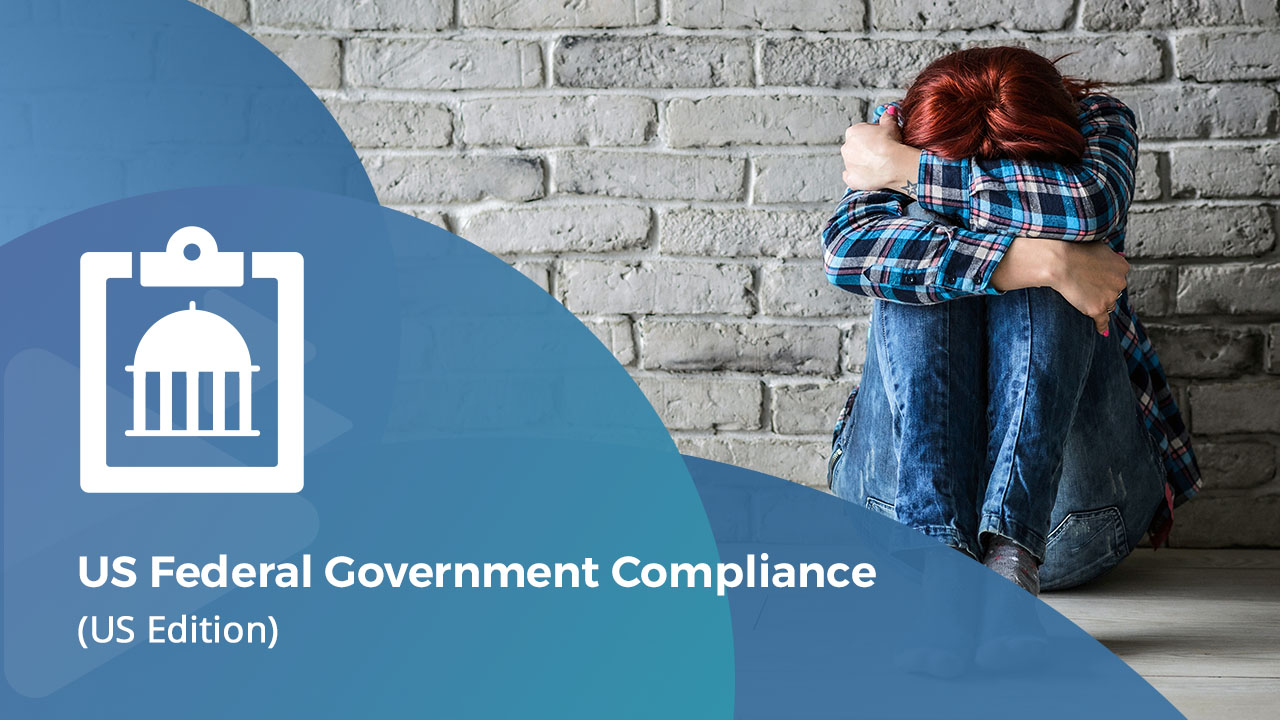
Domestic Violence Awareness for Federal Employees
The problems of dating violence, domestic violence, sexual assault, and stalking do not only affect homes; they can also affect the workplace. An employee may be harassed at work by phone calls or e-mails, or their attendance and performance may suffer in various ways as a byproduct of what they are experiencing. Coworkers and supervisors need to be prepared to respond sensitively and appropriately. This course explains what domestic violence is and how to recognize when someone at work may be experiencing it. It then offers guidance on how to respond in ways that align with federal agency policies to support victims of domestic violence. This course was developed with subject matter support provided by the Labor & Employment Law Group of the law firm of Baker, Donelson, Bearman, Caldwell & Berkowitz, PC. Please note, however, that the course materials and content are for informational purposes only and do not constitute legal advice. Nothing herein, or in the course materials, shall be construed as professional advice as to any particular situation or constitute a legal opinion with respect to compliance with any federal, state, or local laws. Transmission of the information is not intended to create, and receipt does not constitute, an attorney-client relationship. Readers should not act upon this information without seeking professional counsel. The information contained herein is provided only as general information that may or may not reflect the most current legal developments. This information is not provided in the course of an attorney-client relationship and is not intended to constitute legal advice or to substitute for obtaining legal advice from an attorney licensed in your state.

Data Protection and Device Security
Employees play a key role in helping ensure the security of company data. Today’s technology and networking capabilities allow employees to work from virtually anywhere, but precautions are necessary to protect company assets and information. This course covers a variety of best practices for preventing the loss and theft of company data, as well as protecting the physical devices employees use in their jobs, both at and away from the office. This course was developed with subject matter support provided by The Potomac Law Group, PLLC. Please note, however, that the course materials and content are for informational purposes only and do not constitute legal advice and may or may not reflect the most current legal developments. Nothing herein, or in the course materials, shall be construed as professional advice as to any particular situation or constitute a legal opinion with respect to compliance with legal statutes or statutory instruments. Transmission of the information is not intended to create, and receipt does not constitute, an attorney-client relationship. Readers should not act upon this information without seeking independent legal advice.

Cybersecurity and Online Habits
Sound cybersecurity practices are essential for preventing data breaches and other security incidents that can have devastating consequences for organizations. Employees, through the careful adherence to their company’s IT policies, form an important line of defense against cyberattacks. This course focuses on common pitfalls in IT security by end users and provides employees with common sense guidelines for managing cybersecurity risks. This course was developed with subject matter support provided by The Potomac Law Group, PLLC. Please note, however, that the course materials and content are for informational purposes only and do not constitute legal advice and may or may not reflect the most current legal developments. Nothing herein, or in the course materials, shall be construed as professional advice as to any particular situation or constitute a legal opinion with respect to compliance with legal statutes or statutory instruments. Transmission of the information is not intended to create, and receipt does not constitute, an attorney-client relationship. Readers should not act upon this information without seeking independent legal advice.

Campus Safety
College safety often boils down to personal safety; you are responsible for you. Your college years can be the best years of your life, but can become frightening if you do not take steps to protect yourself. Whether you are a student in a college, university, or technical school setting, this course will help you to be better prepared to deal with the multitude of situations, both violent and seemingly passive, that may occur. This course was developed with subject matter provided by Eric L. Matson of Norsemen Training & Consulting Group, a global professional services company focusing on corporate, business, and personal safety training. Please note, the course materials and content were current with the laws and regulations at the time of the last expert review, however, they may not reflect the most current legal developments. Nothing herein, or in the course materials, shall be construed as professional advice as to any particular situation with respect to compliance with legal statutes or requirements.

Business Travel Safety and Security
This course will help business travelers reduce the risks to themselves and property while traveling for work. It provides guidelines on how to take precautionary and evasive measures to greatly reduce becoming a victim of crime in various environments frequented by travelers, including airports, hotels, driving in a car, and when out and about in a new location. It also provides advice on what a business traveler should do in the aftermath of a crime. This course was developed with subject matter provided by Eric L. Matson of Norsemen Training & Consulting Group, a global professional services company focusing on corporate, business and personal safety training. Please note, the course materials and content were current with the laws and regulations at the time of the last expert review, however, they may not reflect the most current legal developments. Nothing herein, or in the course materials, shall be construed as professional advice as to any particular situation with respect to compliance with legal statutes or requirements.

HIPAA for Non-Medical Employers
Many organizations that fit the description of non-medical employers have employees, who by nature of their roles in Human Resources or benefits or health plan administration, have access to the personal and private health information of other employees. These organizations are legally obligated to protect this information as described by HIPAA's Privacy Rule. This course focuses on helping these employees learn how to identify protected health information (PHI), how to appropriately use, disclose, or request PHI, and the importance of following their employer's internal privacy policies and procedures for handling the PHI they come into contact with as they do their job.

Harassment Prevention for US Managers Office 2
Harassment and discrimination can have a devastating impact on an organization's work environment and enormous personal consequences to those involved. Managers and supervisors have a responsibility to both their employees and their company to know their role in preventing and responding to all forms of workplace harassment and discrimination, including sexual harassment. This course is intended to help develop a set of values in managerial and supervisory employees that will assist them in preventing and effectively responding to incidents of discrimination and workplace harassment. This course addresses federal anti-discrimination and anti-harassment law. Additional customization may be required in order to fully address any relevant state requirements. This course was developed with subject matter support provided by The Potomac Law Group, PLLC. Please note, however, that the course materials and content are for informational purposes only and do not constitute legal advice and may or may not reflect the most current legal developments. Nothing herein, or in the course materials, shall be construed as professional advice as to any particular situation or constitute a legal opinion with respect to compliance with legal statutes or statutory instruments. Transmission of the information is not intended to create, and receipt does not constitute, an attorney-client relationship. Readers should not act upon this information without seeking independent legal advice.

Harassment Prevention for US Employees Office 2
Discrimination and harassment at work can have a corrosive effect on an organization's culture and can lead to low employee morale, reduced productivity, and even criminal liability. This course addresses federal anti-discrimination and anti-harassment law. In addition to providing an overview of the types of behaviors that can give rise to discrimination and harassment -- including sexual harassment -- this course will discuss the benefits of and strategies for promoting a respectful work environment. This course was developed with subject matter support provided by the Potomac Law Group, PLLC. Please note, however, that the course materials and content are for informational purposes only and do not constitute legal advice. Because laws and regulations governing discrimination and harassment may change, the most current legal developments may or may not be reflected in the course. Nothing herein, or in the course materials, shall be construed as professional advice as to any particular situation or constitute a legal opinion with respect to compliance with any law or other directive. Transmission of the information is not intended to create, and receipt does not constitute, an attorney-client relationship. Readers should not act upon this information without seeking independent legal advice.

FMLA Leave and More: An Overview of Legally Protected Leave
A sick child at home. An accident or injury. Caring for an aging parent. Each of these events is part of life and can temporarily prevent an employee from being able to perform his or her job. Supervisors and managers often find themselves in the position of responding to requests for employee leave as they handle the company's day-to-day operations. It is important for managers and supervisors to understand the basic guidelines for granting leave that are established by the Family and Medical Leave Act (FMLA) and other laws. This course describes the family- and health-related situations that trigger an employee's eligibility to take leave under the FMLA. It also explores the other types of leave which are protected by law and examines the criteria for leave entitlement. This course was developed with subject matter support provided by The Potomac Law Group, PLLC. Please note, however, that the course materials and content are for informational purposes only and do not constitute legal advice and may or may not reflect the most current legal developments. Nothing herein, or in the course materials, shall be construed as professional advice as to any particular situation or constitute a legal opinion with respect to compliance with legal statutes or statutory instruments. Transmission of the information is not intended to create, and receipt does not constitute, an attorney-client relationship. Readers should not act upon this information without seeking independent legal advice.

Federal HR Flexibilities
Federal agencies have a wide range of human resource (HR) capabilities that can be used to help manage workforce challenges. The US Office of Personnel Management (OPM) is a federal government agency that helps other government agencies recruit and retain federal employees, provide with training and personal development programs, and overcome staffing challenges. The OPM also designs and implements key human resource-related polices across all government departments. This course provides an overview of the many personnel options and services available to applicants, existing employees, and managers in the federal government. This course was developed with subject matter support provided by the law firm of Baker, Donelson, Bearman, Caldwell & Berkowitz, PC. Please note, however, that the course materials and content are for informational purposes only and do not constitute legal advice. Nothing herein, or in the course materials, shall be construed as professional advice as to any particular situation or constitute a legal opinion with respect to compliance with any federal, state, or local laws. Transmission of the information is not intended to create, and receipt does not constitute, an attorney-client relationship. Readers should not act upon this information without seeking professional counsel. The information contained herein is provided only as general information that may or may not reflect the most current legal developments. This information is not provided in the course of an attorney-client relationship and is not intended to constitute legal advice or to substitute for obtaining legal advice from an attorney licensed in your state.

EEO and Lawful Hiring
As a manager, it's essential to use recruitment strategies that attract the right candidates, but it's just as important to avoid discrimination in hiring, both intentionally and unintentionally. In this course, you'll learn about the Equal Employment Opportunity laws that guide your company's recruitment efforts and aid you in carrying out hiring practices that are fair and lawful. This course was developed with subject matter support provided by the law firm of Baker, Donelson, Bearman, Caldwell & Berkowitz, PC. Please note, however, that the course materials and content are for informational purposes only and do not constitute legal advice. Nothing herein, or in the course materials, shall be construed as professional advice as to any particular situation or constitute a legal opinion with respect to compliance with any federal, state, or local laws. Transmission of the information is not intended to create, and receipt does not constitute, an attorney-client relationship. Readers should not act upon this information without seeking professional counsel. The information contained herein is provided only as general information that may or may not reflect the most current legal developments. This information is not provided in the course of an attorney-client relationship and is not intended to constitute legal advice or to substitute for obtaining legal advice from an attorney licensed in your state.

Americans with Disabilities Act: An Overview for Managers
The Americans with Disabilities Act (ADA) makes it unlawful to discriminate in employment on the basis of disability. As a manager, you play a key role in ensuring that your company complies with this law, and in promoting diversity and a culture of tolerance and respect in your workplace. In this course, you'll learn about your responsibilities for avoiding discrimination under the ADA and for responding appropriately to requests for reasonable accommodation. You'll also learn how complying with the ADA and supporting employees with different needs can benefit everyone in your organization. These course materials and content are for informational purposes only and do not constitute legal advice. Nothing herein, or in the course materials, shall be construed as professional advice as to any particular situation or constitute a legal opinion with respect to compliance with any federal, state, or local laws. Transmission of the information is not intended to create, and receipt does not constitute, an attorney-client relationship. Readers should not act upon this information without seeking professional counsel. The information contained herein is provided only as general information that may or may not reflect the most current legal developments. This information is not provided in the course of an attorney-client relationship and is not intended to constitute legal advice or to substitute for obtaining legal advice from an attorney licensed in your state.

Promoting Respect in the Workplace for Managers
As a manager, you play a vital role in supporting your company's efforts to create a workplace defined by respectful and professional interaction between employees. You have a responsibility to model appropriate behavior in how you treat your employees and to address any instances of inappropriate conduct swiftly and appropriately. This course was developed with subject matter support provided by Gordon Dadds LLP. Please note, however, that the course materials and content are for informational purposes only and do not constitute legal advice and may or may not reflect the most current legal developments. Nothing herein, or in the course materials, shall be construed as professional advice as to any particular situation or constitute a legal opinion with respect to compliance with legal statutes or statutory instruments. Gordon Dadds LLP accepts no responsibility for their contents and the reliance on the contents is prohibited and at the user’s risk. Transmission of the information is not intended to create, and receipt does not constitute, a solicitor-client relationship. Readers should not act upon this information without seeking independent legal advice.

Promoting Respect in the Workplace for Employees
As an employee, it is important for you to act respectfully toward all your coworkers. This course explains what type of behavior creates a respectful workplace and also details how you can show respect to your colleagues. You'll also discover the benefits of a workplace that is free from harassment. Please note that the course content is for informational purposes only and does not constitute legal advice. Nothing in the course materials shall be construed as professional advice as to any particular situation or constitute a legal opinion with respect to compliance with any jurisdiction's laws. Transmission of this information is not intended to create, and receipt does not establish, an attorney-client relationship. Users should not act upon this information without seeking professional counsel licensed in their jurisdiction. This course was developed with subject matter support provided by Gordon Dadds LLP. Please note, however, that the course materials and content are for informational purposes only and do not constitute legal advice and may or may not reflect the most current legal developments. Nothing herein, or in the course materials, shall be construed as professional advice as to any particular situation or constitute a legal opinion with respect to compliance with legal statutes or statutory instruments. Gordon Dadds LLP accepts no responsibility for their contents and the reliance on the contents is prohibited and at the user’s risk. Transmission of the information is not intended to create, and receipt does not constitute, a solicitor-client relationship. Readers should not act upon this information without seeking independent legal advice.

Your Role in Workplace Diversity
To understand and appreciate diversity in the workplace, you must develop a deep understanding of yourself, as well as any unconscious bias you may have. Your ability to use a variety of strategies to effectively deal with diverse situations is very important. Equally important is the ability to share these effective strategies openly and leverage the diversity that exists within an inclusive organization. In this course, you'll explore how to become aware of your attitudes toward diversity, understand the source of any cultural bias you may have, and increase your acceptance of diverse cultures, people, and ideas. You’ll also discover how to become an advocate for diversity and inclusion within the workplace.

Workplace Diversity, Equity, and Inclusion in Action
A diverse and inclusive workforce is a business and human imperative. Regardless of your role or the size of your organization, everyone can play an active role in fostering diversity, equity, and inclusivity. Future business growth and success depend upon embracing inclusion and eliminating bias and discrimination in the workplace. However, for many organizations, building cultural and business practices that embrace workplace diversity can still feel elusive. Besides hiring diverse talent, what more can we do? This course is your guide to defining diversity, equity, and inclusion and advancing meaningful and impactful diversity, equity, and inclusion practices in your workplace. In this course, you'll learn to recognize key characteristics of DEI and practices for building and sustaining a healthy DEI culture. You'll also learn to identify behaviors that signal a breakdown in achieving an inclusive culture, key elements that enable diversity, equity, inclusion, and belonging to take root, and the steps for demonstrating agility and resilience in your DEI journey.

Understanding Unconscious Bias
No matter who you are, you are prey to unconscious biases. To be part of a complex, diverse team you must take steps to overcome implicit and explicit biases and reject social stereotypes. Understanding you own bias, whether conscious or unconscious, is the key. In this course you'll learn about the characteristics of unconscious bias and the nature of buried prejudice. You'll discover how they can inadvertently affect your thinking and decision-making. And you'll learn about the positive things that can happen when you take an anti-biased approach to people and situations in the workplace.

Promoting Respect in the Workplace for Managers
As a manager, you play a vital role in supporting your company's efforts to create a workplace defined by respectful and professional interaction between employees. You have a responsibility to model appropriate behavior in how you treat your employees and to address any instances of inappropriate conduct swiftly and appropriately. This course was developed with subject matter support provided by Gordon Dadds LLP. Please note, however, that the course materials and content are for informational purposes only and do not constitute legal advice and may or may not reflect the most current legal developments. Nothing herein, or in the course materials, shall be construed as professional advice as to any particular situation or constitute a legal opinion with respect to compliance with legal statutes or statutory instruments. Gordon Dadds LLP accepts no responsibility for their contents and the reliance on the contents is prohibited and at the user’s risk. Transmission of the information is not intended to create, and receipt does not constitute, a solicitor-client relationship. Readers should not act upon this information without seeking independent legal advice.

Promoting Respect in the Workplace for Employees
As an employee, it is important for you to act respectfully toward all your coworkers. This course explains what type of behavior creates a respectful workplace and also details how you can show respect to your colleagues. You'll also discover the benefits of a workplace that is free from harassment. Please note that the course content is for informational purposes only and does not constitute legal advice. Nothing in the course materials shall be construed as professional advice as to any particular situation or constitute a legal opinion with respect to compliance with any jurisdiction's laws. Transmission of this information is not intended to create, and receipt does not establish, an attorney-client relationship. Users should not act upon this information without seeking professional counsel licensed in their jurisdiction. This course was developed with subject matter support provided by Gordon Dadds LLP. Please note, however, that the course materials and content are for informational purposes only and do not constitute legal advice and may or may not reflect the most current legal developments. Nothing herein, or in the course materials, shall be construed as professional advice as to any particular situation or constitute a legal opinion with respect to compliance with legal statutes or statutory instruments. Gordon Dadds LLP accepts no responsibility for their contents and the reliance on the contents is prohibited and at the user’s risk. Transmission of the information is not intended to create, and receipt does not constitute, a solicitor-client relationship. Readers should not act upon this information without seeking independent legal advice.

Preventing Harassment in the Global Workplace - Employee Edition, Version 1.0
As an employee, it is important for you to act respectfully toward all your coworkers, whether they're located in the next office or on the other side of the globe. This course explains the benefits to everyone of supporting a respectful workplace and illustrates basic principles for promoting professional interaction in the workplace. Please note that the course content is for informational purposes only and does not constitute legal advice. Nothing in the course materials shall be construed as professional advice as to any particular situation or constitute a legal opinion with respect to compliance with any jurisdiction's laws. Transmission of this information is not intended to create, and receipt does not establish, an attorney-client relationship. Users should not act upon this information without seeking professional counsel licensed in their jurisdiction.

Preventing Bullying and Violence
This course seeks to help employees understand the circumstances that can trigger violence in the workplace and to offer strategies for preventing the escalation of conflict. According to the most recent data available from the Bureau of Labor Statistics, in the US, fatal injuries involving violence increased by 163 cases to 866 in 2016. Workplace homicides increased by 83 cases to 500 in 2016, and workplace suicides increased by 62 to 291. This is the highest homicide figure since 2010 and the most suicides since the Census of Fatal Occupational Injuries began reporting data in 1992. Workplace violence can include a range of acts, both physical and non-physical, such as assault, stalking, bullying, robbery, and harassment. This course will help employees to recognize early warning signs of potential workplace conflict, the actions they can take to prevent situations that may lead to workplace violence, and how to respond to an aggressor. This course was developed with subject matter support provided by Eastman & Smith Ltd., Please note, the course materials and content are for informational purposes only and should not be considered legal advice. This information is not intended to create, and receipt of it does not constitute, an attorney-client relationship.

Harassment: Bystander Intervention for Managers
One of the most important ways that members of a community – be it a social or work environment – reinforce the standards of conduct expected of other members is by calling out those who violate the norms of the community. You don't have to a hero - there are many ways you can defuse the situation just long enough to interrupt what's going on, and help the person being victimized get out of the situation. In this course, you'll learn some approaches you can use to intervene when you see witness someone being harassed by another. This course was developed with subject matter support provided by the Potomac Law Group, PLLC. Please note, however, that the course materials and content are for informational purposes only and do not constitute legal advice. Because laws and regulations governing discrimination and harassment may change, the most current legal developments may or may not be reflected in the course. Nothing herein, or in the course materials, shall be construed as professional advice as to any particular situation or constitute a legal opinion with respect to compliance with any law or other directive. Transmission of the information is not intended to create, and receipt does not constitute, an attorney-client relationship. Readers should not act upon this information without seeking independent legal advice.

Harassment: Bystander Intervention for Employees
One of the most important ways that members of a community – be it a social or work environment – reinforce the standards of conduct expected of other members is by calling out those who violate the norms of the community. You don't have to a hero - there are many ways you can defuse the situation just long enough to interrupt what's going on, and help the person being victimized get out of the situation. In this course, you'll learn some approaches you can use to intervene when you see witness someone being harassed by another. This course was developed with subject matter support provided by the Potomac Law Group, PLLC. Please note, however, that the course materials and content are for informational purposes only and do not constitute legal advice. Because laws and regulations governing discrimination and harassment may change, the most current legal developments may or may not be reflected in the course. Nothing herein, or in the course materials, shall be construed as professional advice as to any particular situation or constitute a legal opinion with respect to compliance with any law or other directive. Transmission of the information is not intended to create, and receipt does not constitute, an attorney-client relationship. Readers should not act upon this information without seeking independent legal advice.

Harassment Prevention for US Managers - Workplace
Harassment and discrimination can have a devastating impact on an organization's work environment and enormous personal consequences to those involved. Managers and supervisors have a responsibility to both their employees and their company to know their role in preventing and responding to all forms of workplace harassment and discrimination, including sexual harassment. This course is intended to help develop a set of values in managerial and supervisory employees that will assist them in preventing and effectively responding to incidents of discrimination and workplace harassment. This course addresses federal anti-discrimination and anti-harassment law. Additional customization may be required in order to fully address any relevant state requirements. This course was developed with subject matter support provided by The Potomac Law Group, PLLC. Please note, however, that the course materials and content are for informational purposes only and do not constitute legal advice and may or may not reflect the most current legal developments. Nothing herein, or in the course materials, shall be construed as professional advice as to any particular situation or constitute a legal opinion with respect to compliance with legal statutes or statutory instruments. Transmission of the information is not intended to create, and receipt does not constitute, an attorney-client relationship. Readers should not act upon this information without seeking independent legal advice.

Harassment Prevention for US Managers - Office 1
Harassment and discrimination can have a devastating impact on an organization's work environment and enormous personal consequences to those involved. Managers and supervisors have a responsibility to both their employees and their company to know their role in preventing and responding to all forms of workplace harassment and discrimination, including sexual harassment. This course is intended to help develop a set of values in managerial and supervisory employees that will assist them in preventing and effectively responding to incidents of discrimination and workplace harassment. This course addresses federal anti-discrimination and anti-harassment law. Additional customization may be required in order to fully address any relevant state requirements. This course was developed with subject matter support provided by The Potomac Law Group, PLLC. Please note, however, that the course materials and content are for informational purposes only and do not constitute legal advice and may or may not reflect the most current legal developments. Nothing herein, or in the course materials, shall be construed as professional advice as to any particular situation or constitute a legal opinion with respect to compliance with legal statutes or statutory instruments. Transmission of the information is not intended to create, and receipt does not constitute, an attorney-client relationship. Readers should not act upon this information without seeking independent legal advice.

Harassment Prevention for US Employees - Workplace
Discrimination and harassment at work can have a corrosive effect on an organization's culture and can lead to low employee morale, reduced productivity, and even criminal liability. This course addresses federal anti-discrimination and anti-harassment law. In addition to providing an overview of the types of behaviors that can give rise to discrimination and harassment -- including sexual harassment -- this course will discuss the benefits of and strategies for promoting a respectful work environment. This course was developed with subject matter support provided by the Potomac Law Group, PLLC. Please note, however, that the course materials and content are for informational purposes only and do not constitute legal advice. Because laws and regulations governing discrimination and harassment may change, the most current legal developments may or may not be reflected in the course. Nothing herein, or in the course materials, shall be construed as professional advice as to any particular situation or constitute a legal opinion with respect to compliance with any law or other directive. Transmission of the information is not intended to create, and receipt does not constitute, an attorney-client relationship. Readers should not act upon this information without seeking independent legal advice.

Harassment Prevention for US Employees Office 1
Discrimination and harassment at work can have a corrosive effect on an organization's culture and can lead to low employee morale, reduced productivity, and even criminal liability. This course addresses federal anti-discrimination and anti-harassment law. In addition to providing an overview of the types of behaviors that can give rise to discrimination and harassment -- including sexual harassment -- this course will discuss the benefits of and strategies for promoting a respectful work environment. This course was developed with subject matter support provided by the Potomac Law Group, PLLC. Please note, however, that the course materials and content are for informational purposes only and do not constitute legal advice. Because laws and regulations governing discrimination and harassment may change, the most current legal developments may or may not be reflected in the course. Nothing herein, or in the course materials, shall be construed as professional advice as to any particular situation or constitute a legal opinion with respect to compliance with any law or other directive. Transmission of the information is not intended to create, and receipt does not constitute, an attorney-client relationship. Readers should not act upon this information without seeking independent legal advice.

Global Workplace Harassment Prevention for Managers
As a manager, you play a vital role in supporting your company's efforts to create a workplace defined by respectful and professional interaction between employees. This includes not only preventing illegal harassment, but also avoiding intimidating, hostile, or otherwise uncivil behavior. You have a responsibility to model appropriate behavior in how you treat your employees and to address any instances of inappropriate conduct swiftly and appropriately. This course explains why it is important for a company to foster a respectful work environment. It also presents strategies for addressing inappropriate behavior in the workplace. Please note that the course content is for informational purposes only and does not constitute legal advice. Nothing in the course materials shall be construed as professional advice as to any particular situation or constitute a legal opinion with respect to compliance with any jurisdiction’s laws. Transmission of this information is not intended to create, and receipt does not establish, an attorney-client relationship. Users should not act upon this information without seeking professional counsel licensed in their jurisdiction.

Global Diversity
The modern workforce is as diverse as the world in which it exists, with employees representing an extraordinary variety of abilities, cultures, ethnicities, beliefs, and languages. But not all organizations have the strategic foresight to tap in to the wealth of human capital available to them. Even when there is commitment from leadership, inclusion and diversity goals don't always make it through to the workplace. To leverage the full potential of the workforce, it's important for organizations, managers, and employees to evaluate and improve the ways in which they support diversity and inclusion, and help ensure employees are being treated fairly. In this course, you'll learn about the characteristics of inclusive workplaces and the benefits of supporting diversity. You'll discover the challenges and barriers to inclusion in the workplace, and learn about recognizing discrimination and bullying. You'll also cover workplace inclusion and accommodation practices, including strategies for promoting inclusion, and how inclusion policies and procedures support employees. This course was developed with subject matter support provided by lnce Gordon Dadds LLP. Please note, however, that the course materials and content are for informational purposes only and do not constitute legal advice and may or may not reflect the most current legal developments. Nothing herein, or in the course materials, shall be construed as professional advice as to any particular situation or constitute a legal opinion with respect to compliance with legal statutes or statutory instruments. lnce Gordon Dadds LLP accepts no responsibility for the contents of this course. Any reliance on the contents of this course as legal advice is prohibited and at the user’s risk. Transmission of the information is not intended to create, and receipt does not constitute, a solicitor-client relationship. Readers should not act upon this information without seeking independent legal advice.

EEO and Preventing Discrimination in the Federal Workplace
As a manager, it is essential to use recruitment strategies that attract the right candidates. But just as important is the avoidance of discrimination, both intentional and unintentional. In this course, you will learn about the Equal Employment Opportunity laws that guide your agency's recruiting efforts and how to help ensure your hiring practices are fair and lawful. This course was developed with subject matter support provided by the law firm of Baker, Donelson, Bearman, Caldwell & Berkowitz, PC. Please note, however, that the course materials and content are for informational purposes only and do not constitute legal advice. Nothing herein, or in the course materials, shall be construed as professional advice as to any particular situation or constitute a legal opinion with respect to compliance with any federal, state, or local laws. Transmission of the information is not intended to create, and receipt does not constitute, an attorney-client relationship. Readers should not act upon this information without seeking professional counsel. The information contained herein is provided only as general information that may or may not reflect the most current legal developments. This information is not provided in the course of an attorney-client relationship and is not intended to constitute legal advice or to substitute for obtaining legal advice from an attorney licensed in your state.

Bridging the Diversity Gap
Without a diverse workforce, organizations run the risk of viewing things from a very limited perspective. The organization provides the structure for operation, but it's the individuals within that organization who carry out the mission of the organization. To get the most innovative solutions from the individuals in your business, you need to create a workplace that embraces inclusion and avoids bias and stereotyping. This course focuses on what diversity is and how to leverage the diversity within the organization. You'll also explore the barriers, such as unconscious bias, that must be overcome to create a diversified and inclusive working environment.

Becoming a DEI Ally and Agent for Change
To understand and appreciate diversity in the workplace, we must develop an understanding of ourselves and the diverse ways in which we view the world. Working in a diverse and inclusive workforce has many personal and professional benefits ranging from improved wellness and personal health to engagement and community and innovation and creativity. Equally important is the ability to leverage each of our unique talents, skills, and contributions. In this course, you'll explore strategies to help you become an advocate for diversity, equity, and inclusion within the workplace. You'll learn to build awareness of your values and social perspective and recognize specific actions that can improve social and cultural aspects of DEI. You’ll also learn about key concepts of allyship, methods to be a more inclusive communicator, and how to use the RISE model to become a DEI ally.

Adopting an Inclusion Mindset at Work
It's not just individuals who face unconscious biases in the workplace; teams and organizations can also operate with shared institutionalized biases. Ensuring a diverse workplace requires actively participating in and advocating for DEI supports. In this course, you'll learn about the power of inclusion and how to support DEI at work. You'll also learn the basics of inclusive recruitment and hiring, and what it looks like when a company supports inclusion from onboarding through to retirement

Your Role in Workplace Diversity
To understand and appreciate diversity in the workplace, you must develop a deep understanding of yourself, as well as any unconscious bias you may have. Your ability to use a variety of strategies to effectively deal with diverse situations is very important. Equally important is the ability to share these effective strategies openly and leverage the diversity that exists within an inclusive organization.<br/>In this course, you'll explore how to become aware of your attitudes toward diversity, understand the source of any cultural bias you may have, and increase your acceptance of diverse cultures, people, and ideas. You’ll also discover how to become an advocate for diversity and inclusion within the workplace.

Understanding Unconscious Bias
No matter who you are, you are prey to unconscious biases. To be part of a complex, diverse team you must take steps to overcome implicit and explicit biases and reject social stereotypes. Understanding you own bias, whether conscious or unconscious, is the key.<br/>In this course you'll learn about the characteristics of unconscious bias and the nature of buried prejudice. You'll discover how they can inadvertently affect your thinking and decision-making. And you'll learn about the positive things that can happen when you take an anti-biased approach to people and situations in the workplace.

Bridging the Diversity Gap
Without a diverse workforce, organizations run the risk of viewing things from a very limited perspective. The organization provides the structure for operation, but it's the individuals within that organization who carry out the mission of the organization. To get the most innovative solutions from the individuals in your business, you need to create a workplace that embraces inclusion and avoids bias and stereotyping.<br/>This course focuses on what diversity is and how to leverage the diversity within the organization. You’ll also explore the barriers, such as unconscious bias, that must be overcome to create a diversified and inclusive working environment.

A Manager's Guide to Discipline and Documentation
A key role for any manager or supervisor is to ensure employees meet the expectations for appropriate and lawful conduct at work. Dealing with problematic behavior and taking disciplinary action can be stressful. But simply ignoring or avoiding problems is not an option because it may signal to employees that inappropriate behavior is acceptable. And mishandling disciplinary issues may result in employee claims of wrongful termination, discrimination, or retaliation. Consistent and fair procedures, honest communication, and clear expectations can help managers deal with disciplinary issues in a way that improves behavior with fewer negative repercussions. This course explains the principles of effective employee discipline, including the concept of due process in the disciplinary procedure, and it describes how to respond to and document a disciplinary issue appropriately. These course materials and content are for informational purposes only and do not constitute legal advice. Nothing herein, or in the course materials, shall be construed as professional advice as to any particular situation or constitute a legal opinion with respect to compliance with any federal, state, or local laws. Transmission of the information is not intended to create, and receipt does not constitute, an attorney-client relationship. Readers should not act upon this information without seeking professional counsel. The information contained herein is provided only as general information that may or may not reflect the most current legal developments. This information is not provided in the course of an attorney-client relationship and is not intended to constitute legal advice or to substitute for obtaining legal advice from an attorney licensed in your state.

